
- Quirky Japan
- Japanese food & drink
- Studio Ghibli

Yokohama, Japan – 33 Things To Do Guide + Photos 2024

This post may contain affiliate links to tours and hotels. These help us earn a small commission at no additional charge to you.
Say yes to Yokohama, Japan’s second biggest city which has transformed its historic port area into a huge array of attractions. From Japan’s largest Chinatown to the gorgeous Red Brick Warehouse, there are so many things to do in Yokohama.
So what is Yokohama famous for? From cable cars to craft beer bars, Ferris wheels to fine food (plus a sky deck offering incredible views of Mount Fuji), there is something to suit all tastes and budgets in Yokohama.

Given all the theme-parks and fun waterfront attractions, Yokohama is suitable for all ages and you can shop ‘til you drop in Yokohama with many malls and seaside shopping centres.
A short train ride from Tokyo , this is our ultimate guide to visiting the coastal city of Yokohama in Japan in 2024:

SKIP TO THINGS TO DO IN YOKOHAMA LIST >
Table of Contents
Yokohama things to do map
You might like – Things to do in Odaiba, Tokyo >
How to get to Yokohama from Tokyo
The best way to reach Yokohama from Tokyo is to take the Tokaido Shinkansen high-speed rail from Tokyo Station to Shin-Yokohama Station . The journey takes just 18 minutes and the trains leave every 15-30 minutes.
A one-way ticket for a reserved seat is 3,210 yen; and 1,380 yen for an unreserved seat. If you have a Japan Rail Pass then this route is included.
To transfer to downtown Yokohama, take the Yokohama Subway blue line to Yokohama Station.

Alternatively you can take a regular express train from Tokyo direct to downtown Yokohama:
From Tokyo station (27-45 mins, 470 yen) – Take the JR Tokaido line (orange) , Yokosuka line (blue) or Keihin-Tohoku line (light blue) to Yokohama Station.
From Shinjuku station (30 mins, 560 yen) – Take the Shonan-Shinjuku Line (red) to Yokohama Station.
From Akihabara station (45 mins, 560 yen) – Take the Keihintohoku Line (light blue) to Yokohama Station.
From Shibuya station (27 mins, 270-390 yen) – Take the Tokyu-Toyoko Line (pink) or Shonan-Shinjuku Line (red) to Yokohama Station.
Where to stay in Yokohama
Hotel Plumm Contemporary hotel with stylish rooms close to Yokohama Station. Facilities include two on-site restaurants, cafe/bar and hot tub. Check out prices and availability for Hotel Plumm
Hotel Edit Yokohama Stylish boutique hotel located in the centre of Minato Mirai. Facilities include an on-site restaurant, shops, bar and 24-hour library space. Check out prices and availability for Hotel Edit Yokohama
APA Hotel & Resort Yokohama Bay Tower Popular chain hotel with amazing views from the higher floor rooms. Facilities include a spa with 10 open-air baths, indoor and outdoor pool and a fitness center. Check rates and availability for APA Hotel & Resort Yokohama Bay Tower

Yokohama Royal Park Hotel Sleek hotel located above the 52nd floor of Yokohama Landmark Tower. All rooms have views of the city or the Bay Bridge. Facilities include an indoor pool, fitness centre, beauty shop, six restaurants and two bars. Check out prices and availability for Yokohama Royal Park Hotel
Intercontinental Yokohama Grand Hotel set in a modern sail-shaped building offering views of Yokohama Harbour. Facilities include a 31st-floor Chinese restaurant, indoor pool, on-site shops and a spa. Check out prices and availability for Intercontinental Yokohama Grand
The Yokohama Bay Hotel Tokyu Located in the heart of the Minato-Mirai area, this spacious and luxurious hotel has beautiful bay views. Facilities include four restaurants, indoor and outdoor pools, spa and gym. Check out prices and availability for The Yokohama Bay Hotel Tokyu
Hotel New Grand This ornate hotel was built in 1927 and has panoramic views of the port. Rooms have large windows offering ocean or city views, and facilities include a hot tub, spa, grand banquet hall, cafe, two bars and four restaurants. Check out prices and availability for Hotel New Grand
Hyatt Regency Chic hotel located in Chinatown near the Yokohama Marine Tower. Facilities include a grill restaurant, buffet eatery, bar and fitness centre. Check out prices and availability for Hyatt Regency Yokohama
Japan checklist We love using booking.com for researching and booking all our hotels. For booking tours, transfers and SIM cards we recommend Get Your Guide , Viator or Klook .
Things to do in Yokohama
1. yokohama chinatown (横浜中華街).
The largest Chinatown in Japan, Yokohama’s vibrant and colourful Chinese neighbourhood was developed after Yokohama’s port opened to foreign trade in 1859 which attracted many Chinese people to settle in the city.

Today you’ll find a large number of food stands lining the narrow streets, plus around 500 restaurants – many of which offer all-you-can-eat deals.
Visiting Chinatown is a real culinary treat and popular food items you must try include panda-man (panda-shaped steamed buns), koshou mochi (Taiwanese black pepper buns), Peking duck wraps , xaio long bao (soup dumplings) and milk tea.

There are some examples of amazing traditional Chinese architecture located throughout the neighbourhood such as Kanteibyo Temple , plus four main gates on the edge of Chinatown marking the various entrances (each of which stands for the four different directions).

Although there is a lively atmosphere during the day, we also recommend exploring Chinatown at night when all the lanterns and neon lights are lit up.
We were fortunate enough to visit Yokohama’s Chinatown during Chinese New Year and it was one of our most joyful Japanese experiences, with thousands of lanterns adorning the streets, colourful dancing dragon performances and special ceremonies in the temples.

You might like – 30+ Things to do in Ginza, Tokyo >
2. Cup Noodles Museum Yokohama
Oodles of instant noodles! No trip to Yokohama in Japan is complete without a trip to the famous Nissin Cup Noodles Museum in the port area.

An interactive experience inspired by Japan’s iconic original instant noodles, the Cup Noodles Museum is a must visit for any cup noodle converts.
From the design your own instant cup noodle to one of Japan’s most quirky gift-shops and themed food-courts (World Noodles Road), there are many fun things to do (and eat!) in the museum.

From admission prices to the epic exhibits (and tips on booking in advance), read our ultimate floor-by-floor guide to visiting the Cup Noodles Museum here >
Opening Hours : 10am – 6pm (Last admission is at 5pm). The museum is closed every Tuesday. Admission fee: Adults (500 yen); children (free)

Try this – Top Japanese Experiences by city with Klook >
3. Shin-Yokohama Ramen Museum
If you love your noodles (who doesn’t eh?), also make time to visit Yokohama’s other famous noodle museum – the Shin-Yokohama Ramen Museum.
Like the Cup Noodles Museum, the Shin-Yokohama Ramen also offers delicious tasting menus and immersive sets.

The Shin-Yokohama Ramen Museum celebrates various ramen types and noodles from all over Japan and has a small museum.
However the best bit is the vintage food court recreation (complete with skyline) and historic street sets where you’ll find several ramen shops each selling different ramen from various Japanese prefectures and districts.

The streets are incredible with so much detail including retro shops you can visit plus a vintage ice-cream parlour.
The World’s first Ramen Museum, Shin-Yokohama Ramen Museum costs 450 Yen admission per adult and 100 Yen for children (6 to 18 years) and seniors. The ramen dishes in the food court cost extra.
Opening Hours : 11am to 10pm (from 10:30am on Sunday/holidays) Admission fee: Adults (450 yen); Children 6-12 / senior (100 yen); children under 6 (free)

4. Yokohama Red Brick Warehouse
Two former storage warehouses built in the 19th century to store and process goods from all over the world, this prime port location has now become one of Yokohama’s top shopping spots and cultural hubs.

Yokohama’s historic red brick warehouses have now been lovingly restored into row upon row of restaurants and cute shops, selling everything from kawaii gifts to gachapons (otaku heaven).
As we based ourselves at the APA Yokohama Tower Resort , we had aerial views of the warehouses from our window and headed there most days.

As well as trendy shops like B-Side Label or make your own terrarium boutiques(!), we found lots of restaurants to enjoy as well as a huge street food tent outside.
There are lots of events and pop-ups at the Red Brick Warehouse. We visited in January and it had a huge seasonal ice-skating rink that had popped up for Christmas time in Yokohama, Japan.
Opening Hours : 11am to 8pm

Try this – Yokohama One Day Tour with a Local >
5. Yokohama Landmark Tower viewing deck
One of our top 10 places to visit in Yokohama has to be the Yokohama Landmark Tower viewing deck located on the 69th floor and the tallest observation deck in Yokohama (once Japan’s tallest building, until it was overtaken in 2014).

We visited the Yokohama Landmark viewing tour (cost 1000 Yen per person) at dusk and were treated to sunset views of the harbour and the Cosmo 21 Wheel all lit up at night.
Better yet, we were lucky enough to see a clear sunset view of Mount Fuji in the distance; one of our most memorable nights in Japan.

The Yokohama Landmark Tower viewing deck is laid out in a circular route which also includes a small lounge area and bar / cafe.
We were lucky enough to grab one of the chairs in the window looking out directly towards Mount Fuji – this really is a million dollar view for just 1000 Yen.
Skip the line – book your Yokohama Marine Tower Observation Floor Ticket here >
Opening Hours : 10am – 9pm Admission fee: Adults (1,000 yen); High school student / senior (800 yen); elementary school student / junior high school student (500 yen); children under 4 (200 yen)

Try this – Yokohama Tours with Viator >
6. MEGA Don Quijote
Regular readers of Plan My Japan will know we are HUGE Don Quijote fans. If you are also a Don Quijote addict or occasional shopper, you’ll be glad to hear there is a massive MEGA Don Quijote in Yokohama.

Open from 9am to 4am daily, the MEGA Don Qujote Yokohama branch is one of the biggest discount stores in Japan and this particular Don Quijote has an underwater sea theme (very appropriate for Yokohama, given it is famous port city).
It even has an elevator designed to look like a submarine plus a huge aquarium featuring their main mascot, Donpen the penguin.
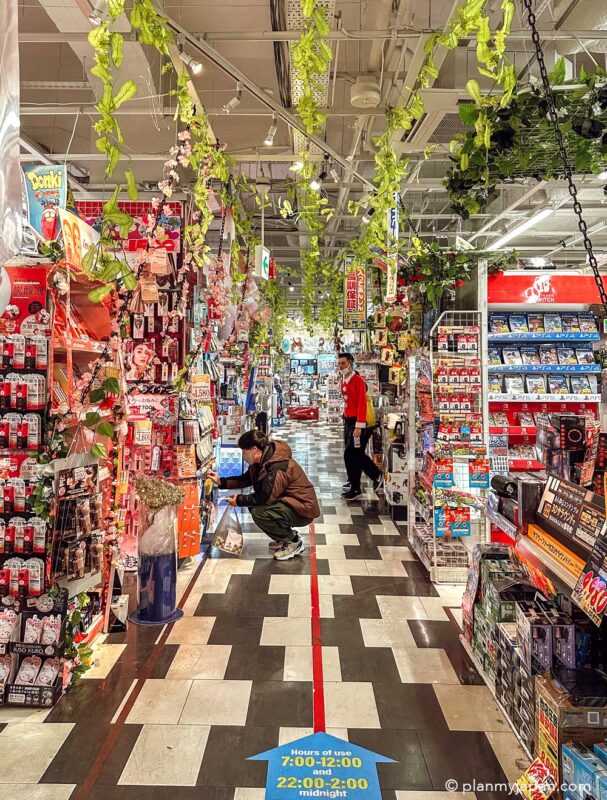
If you haven’t heard of this chain before, Don Quijote is Japan’s most famous discount store, and sells thousands of items generally at low prices, from sneakers to stationary, Hello Kitty to Kit Kats (plus more interesting ‘adult sections’).
You might like our guide to Don Quijote, Japan’s famous discount chain >
Opening Hours : 8am – 3am
Do you love all things Don Quijote and Don Don Donki? Join our Don Quijote and Don Don Donki Fans Facebook group!
7. Minato Mirai Manyo Club Hot Spring
Ready to splash out on a spa or jump into an onsen? The Minato Mirai Manyo Club Hot Spring is one of Yokohama’s premier spas.
View this post on Instagram A post shared by 横浜みなとみらい 万葉倶楽部 (@manyo_yokohama)
Sit back in the stone sauna room or enjoy a massage whilst listening to soothing sounds – there is also an onsite restaurant to grab some healthy snacks.
One of the most unique features at Minato Mirai Manyo Club Hot Spring is the roof deck where you can relax taking in views of the ocean and nearby Cosmo Clock 21 and Yokohama Cosmo World.
Book your discounted Yokohama Minatomirai Manyo Club Onsen Experience with Klook >
Opening Hours : 24 hours a day Admission fee: Adults: 2,950 yen, Children (Elementary School Students): 1,540 yen, Children (3 to under school age): 1,040 yen, Children under 3: Free
8. Yokohama Air Cabin Cable Cars
Up, up and away with the iconic Yokohama Air Cabin (pictures of it feature in so many tourist brochures and Yokohama souvenirs).

Billed as the world’s first urban gondola, this classy cable-car offers incredible panoramic views of Yokohama and traverses the port and coastal areas – so you’ll see a cityscape and also the sea!
Opened in 2021, the Yokohama Air Cabin is open both by day and in the evening so it is an excellent thing to do in Yokohama at night.

The 600 metre route is quite short as cable cars and air cabins go, running from JR Sakuragicho Station to Unga Park.
However, if you want to arrive at the Cup Noodles Museum or the renowned red brick warehouse in style, jump aboard the Yokohama Air Cabins.
Opening Hours : 10am-9pm Admission fee: One-way Ticket Adults (1,000 yen); children (500 yen); Round-trip Ticket Adults (1,800 yen); children (900 yen)
9. Yokohama Cosmo World
A cute and chintzy waterfront theme park, Cosmo World is a fun thing to do with kids in Yokohama (although it seems to be mainly aimed at the very little ones).

We wandered around Yokohama Cosmo World a couple of times as part of our harbour walks and it was fun to see all the rides, including remote control cars that kids can get it (including a huge Doraemon driving machine).

It isn’t no Ghibli Park but entry to Cosmo World is free with charges for rides (or park passes) – it is quite quiet in the daytime but becomes busy at night with students, teenagers and young romantic couples.
The two more adult attractions here are the roller coaster plus the ferris wheel (more on this in a moment…)
Opening Hours : Monday-Tuesday and Thursday to Friday: 11am-9pm; Saturday and Sunday: 11am-10pm Admission fee: Varies by attraction

You might like – Our review of Ghibli’s Grand Warehouse at Ghibli Park >
10. Cosmo Clock 21
Once the largest ferris wheel in the world, the Cosmo Clock 21 has been around since the late 1980s, built for a previous Yokohama Expo.

A bit like the London Eye in the UK, it was meant to be a temporary observation wheel but so loved by locals that it still lives on to this day.
Spanning 100 metres diameter and with 60 passenger cars, Cosmo Clock also lights up at all hours of the day with some incredible LED light shows.
Opening Hours : Monday, Tuesday, Wednesday, Friday: 11am – 8pm (closed Thursday); Saturday and Sunday: 11am – 10pm Admission fee: 900 Yen

Try this – Top 10 Tokyo Mario style go-kart experiences >
11. Yokohama World Porters Mall
A stupendous shopping mall just across the road between the Cup Noodles Museum and Cosmo World, Yokohama World Porters Mall has around 200 stores and restaurants including some novelty items like a rooftop golf course and eating pods.

There are seven floors of shopping, including themed zones like Unique Casual World on level 3 (stores like Village Vanguard and HMV) and Family Paradise zone on level 2 featuring top toy shops and gachapon machines .

Level 5 is the Gourmet Zone which includes such Japanese restaurant chains as Seizeriya Italian (so cheap!) and Tonkatsu Katsuraky.
One of the interesting features of Yokohama World Porters Mall is Hawaii Town, which is decked in tiki huts, palm trees plus a Hawaiian food-court. We even saw a Haiwaan hula performance one weekend we visited (not something we expected to see in Yokohama!).
Opening Hours : 10.30am – 9pm

12. Yokohama Bandai Namco Cross Store
Love gachapon ? Then the Yokohama branch of Bandi Namco Cross store is for you, with thousands of gachapons under one roof – Yokohama Bandai Namco Cross store is one of the largest gachapon shops in Japan and will tickle your inner ‘otaku’.

Located on level 2 of World Porters Mall, this is the best place to get trading cards like One Piece. Most capsule toys cost around the 300 to 400 Yen mark.
Gachapon are vending machines that dispense capsule toys in a small round plastic case. From scaled down sauna animals to small sushi conveyor belts, here is our guide to the gachapon stores in Japan and our favourite and most unusual gashapon capsule toys >
13. Yokohama Museum of Art
The Yokohama Museum of Art is closed until mid March 2024 for a huge refurbishment programme.
Designed by renowned Japanese architect Kenzo Tange, the Yokohama Museum of Art celebrates his legacy with a huge collection of photography and modern art.
The museum focuses on local and Japanese artists with links to the city including Chizuko Yoshida, Kanzan Shimomura and Imamura Shiko.
Opening Hours : 10am – 6pm (Last admission 30 minutes before closing) Admission fee: Varies depending on the exhibition
Try this – Kimono rental in Yokohama >
14. Yokohama Stadium
If you want to see a baseball game in Japan, Yokohama has one of Japan’s biggest baseball arenas, the Yokohama Stadium which is home to the Yokohama DeNA BayStars.
Baseball is a big hitter in Japan and one of their biggest sports to watch in person or on the television (you’ll see it on the TV in bars and pubs too). The NPB baseball season in Japan typically runs from late March through to October.
Yokohama Stadium was opened in 1978 and seats around 34,000 baseball fans when at capacity.
In the past, it has also hosted international music stars for sell out concerts like Tina Turner, Prince, Michael Jackson and more recently, Japanese idol bands like AKB48.
Try this – Top Japan Sporting Events with Viator >
15. Disney Harvest Market Cafe
On the subject of Yokohama Red Brick Warehouse, inside you’ll also see the Yokohama branch of the rather dazzling Disney Harvest Market Cafe (there is another branch in Shibuya, Tokyo).
View this post on Instagram A post shared by ディズニーハーベストマーケット bycafecompany (@d_harvestmarket)
A healthy living concept diner with a dash of Disney, the House of Mouse is packed full of your favourites characters with a huge gift shop too.
The Disney Harvest Market Cafe often has seasonal specials (plus an awesome afternoon tea) and is a great place to dine with children or Disney devotees.
Opening Hours : Monday-Tuesday: 11am-9pm; Wednesday-Friday: 10am-9pm; Saturday: 10am-10pm; Sunday: 10am-9pm

16. Nippon Maru Ship / Yokohama Port Museum
Located in Yokohama’s port area, the Nippon Maru is a vintage vessel and sailing ship that was built in the 1930s as a training ship for Japanese cadets.

Popular with school groups and maritime enthusiasts, the Nippon Maru Ship is part of the Yokohama Port Museum which details the rich history of the area, one of Japan’s most important port and trading areas in years gone by.
Although the ship no longer sails on a regular basis, you can go aboard the Nippon Maru Ship for 400 Yen or combine it with the museum for a fee of 600 Yen.
Opening Hours : 10am – 5pm (closed on Mondays) Admission fee: Ship Only: 400 Yen; Museum Only: 400 Yen; Ship & Museum: 600 Yen
You might like – Guide to Uji, Kyoto’s most beautiful riverside town >
Brewery Tours and Craft Beer Bars
Yokohama is the perfect place to visit for Japanese craft beer connoisseurs – it is also home to one of the cheapest brewery tours in Japan costing just 500 Yen including lots of beer.
Often referred to as Japan’s ‘City of Beer’, raise a glass to Yokohama and check out these craft beer bars and late night pubs:
17. Kirin Brewery Tour and Factory
‘Kanpai’ to the Kirin Brewery Tour in Yokohama, Japan – a fun and cheap way to try lots of Japanese beers and walk around an actual brewery, learning about the brewing process.

Many Asian breweries offer brewery tours but the Yokohama Kirin Brewery Tour is one of the best beer and tasting tours in Japan.
The tour lasts 90 minutes (plus ample beer drinking time) and costs only 500 Yen (as of early 2024).

Kirin Brewery Village in Yokohama is home to the Kirin Brewery tour plus a tasting bar and boozy gift shop.
Read our guide to the Kirin Brewery Village and Kirin Brewery Tour in Yokohama here >
Opening Hours : Tuesday – Sunday; 10am – 4pm (tour), 11am – 10pm (restaurant) Admission fee: Adults (500 yen); children under 19 (free)

18 Revo Brewing
A ‘review’ of Revo Brewing in Yokohama. Located in the basement area of our hotel ( APA Hotel and Resort Tower Yokohama ), the Revo Brewing taproom serves up a huge range of own-brewed craft beers plus has an industrial interior.

The Revo Brewing Yokohama bar offers a nice lookout of the cable cars and the Cosmic Clock 21 ferris wheel – we are talking serious brews with views!
The bar has lots of nice flourishes and features like the heart-shaped beer can holder on the wall plus has a huge food menu with beer pairing.
Opening Hours : 11.30am to 9pm
Try this – Yokohama Private Food Tours with a Local >
19. Yokohama Brewery
The original Yokohama Brewery was high on our Yokahama craft beer hit-list and we had such a fun night working outr way through the taps.
Located across two floors, Yokohama brewery has a cute and compact brewery bar on the ground floor plus a much bigger restaurant (‘Umayano-Shokutaku’ and seating area on the upper levels).

The original Yokohama Brewery was established in 1999 and such is the following, it even has a gift-shop and beery merchandise you can take home.
There are around a dozen or so beers on tap at Yokohama Brewery, costing 800 Yen for medium pours or 1100 Yen for large beers (for their core / standard range).

We liked the old-school chalkboard menu behind the bar so we could choose which craft beers to go for plus the vasy menu with tasting notes.
The bar staff at Yokohama Brewery were also very warm and welcoming. If you only go to one craft beer brewery in Japan’s city of beer, make it the original Yokohama Brewery.
Opening Hours : Monday-Thursday 4pm – 10pm; Friday 4pm-11pm; Saturday 11.30am-10pm; Sunday 11.30am-9pm
Try this – Sweat out the beer with a session at Hot Spring RAKU SPA Tsurumi >
20. Baird’s Bashamichi Taproom
We had some ‘Baird Company’ whilst at this Yokohama Craft Beer Brewery (but in a good way).

We recently sat down at the Baird Brewery Yokohama branch in Basamichi to enjoy some Kofune Porter and Suraga Bay Fireworks IPA – at 8% ABV, it was very strong and goes off like a ‘rocket’.
Originally hailing from Numazu, Baird Brewery has around 12 core lines plus BBQ food galore – there are around 9 Baird Brewery taprooms in Japan to work your way through.
Opening Hours : Monday-Friday 5pm-11pm; Saturday 12pm-11pm; Sunday 12pm-10pm
You might like – Guide to visiting the oldest beer hall in Japan, Ginza Lion in Tokyo >
21. Yokohama British Hub Pubs
Walk around Yokohama at night and it won’t be long before you see the gleaming lights and hanging pub sign of a HUB Bar or 82 Ale House (there are four Hub Pubs in Yokohama and 2 x 82 Ale Houses).

One of Japan’s biggest bar chains with over 100 pubs, the 82 Ale House and HUB pubs are British themed pubs that have (VERY) happy hours, pub grub style food like fish and chips plus bar interiors just like British pubs.
You might like our guide to the Japanese Hub Pub chain of British style bars and Ale 82 pubs >
22. 7-Eleven Yokohama Hammerheads Craft beer store
We round up our Yokohama craft beer section with something slightly unusual.
Did you know there is a famous Japanese 7-Eleven craft beer store in Yokohama Port at the front of the Yokohama Hammerhead mall which specialises in international and Japanese craft beer?

This Yokohama 7-Eleven beer store has since gone viral featuring in numerous TikToks and online videos
We’ve visited this viral craft beer 7-Eleven and it is amazing! There are over 500 different craft beers from all over the world plus lots of beer merchandise – Yokohama is a Japan craft beer lover’s dream!
Read more in our guide to 7-Eleven’s craft beer store in Yokohama Hammerhead >
You might also like our guide to 7-Eleven stores in Japan or a guide to using 7-Eleven ATMs .
Opening Hours : 24 hours a day

Try this – Tokyo beer tasting & brewery tours with GetYourGuide >
23. Streets of Noge in Yokohama at Night
A curious curve of late night bars, secret izakayas and hidden restaurants, walk along Noge’s streets in the daytime and you’ll wonder what all the fuss is about.
However, return at night and Yokohama’s Noge district is a hotbed of hedonstic hang-outs and super cool pubs, many of which overlook the river.
A retro riverside district with vintage drinking places and dimly lit lanterns, half the fun of exploring Noge is just going from bar to bar, drinking beers and savoring yakitori skewers or noshing noodles with the occasional sake.
You might like – Things to do in Nagoya, Japan >
24. Hikawa Maru
Moored in Yokohama harbour by Yamashita Park, Hikawa Maru is a majestic cruise ship that was originally built in the 1930s which spent much of its time as a hospital ship during World War II.

It is said it carried more than 25,000 passengers when in service and Hikawa is now a permanent museum ship and floating attraction (quite close to the huge Gundam robot / mech so a rather jolly juxtaposiiton).
Opening Hours : Tuesday – Sunday; 10am-4.30pm Admission fee: Cash payment only – Adults 300 Yen; Seniors 200 Yen; Children 100 Yen
You might like – Private Helicopter Tour to see Mt Fuji or Tokyo Tower >
25. Yokohama Motomachi Shopping Street
Located between Chinatown and traditional Yamate neighborhood, we discovered the Motomachi Shopping Street after a trip to the Mega Donki store nearby – the difference in shopping experiences was quite extreme!

Motomachi Shopping Street is a peaceful boulevard style shopping street full of cute cafes, stylish fashion shops and restaurant retreats.
Famous brands along Motomachi street include Fukuzo, Star Jewellery and the Tudor style Poppy Menswear (the latter could almost be a British style Japanese Hub Pub , what with its black and white wooden facade!)
26. Yamate Italian Garden / Yokohama Yamate Seiyoukan
A little bit of Italy in Yokohama, the Yamate Italian Garden has gorgeous views of the port and is just a short (but steep) walk uphill from nearby Motomachi Street.

A residential area built in the 1900s for western traders and foreign diplomats, It has lots of colourful flower beds and beautifully manicured lawns along with some wonderful water features.
Yamate Italian Garden is free to visit with several vintage villas and western style wooden houses plus various miniature recreations of huge homes and landmarks.

When we popped along, there was a huge group of elderly Japanese ladies doing watercolour paintings of the rose garden and old houses; a lovely scene and great lookout point in Yokohama.
Opening Hours : 9.30am-5pm

27. Harbor View Park Observatory
Yokohama is blessed with many viewpoints and panoramic vistas – one of the best is Harbor View Park Observatory, with a lookout facing towards Yokohama Bay Bridge and the port.

A former British Army barracks, many of the original structures and gardens have been retained including a rose garden plus an English style lawn and outhouses.
Free to visit, the Harbor View Park Observatory is a nice place to unwind after a day of sightseeing, with multiple benches to sit down on looking out over the water.

28. Yokohama Museum of Tin Toys
Home to thousands of toys from all over Japan, the Yokohama Museum of Tin Toys is easy to spot – the exterior has vintage memorabilia and signs posted all over plus a retro garage and gasoline pumping station complete with classic cars.

Founded by Teruhisa Kitahara, the Museum of Tin Toys opened in 1986. This ‘Toys Club’ is known for its gorgeous gift-shop and has everything from Godzilla to toy robots. A small admission fee applies.
Opening Hours : 9.30am-5pm Admission fee: Adults 200 Yen; children 100 Yen

29. Nogeyama Park & Nogeyama Zoo
Amazingly, the Nogeyama Zoo is free to visit and is resplendent with animals and creatures such as giraffes, lions and monkeys plus has one of the largest bird avaries we’ve seen.
Our favourite animal at the Nogeyama Zoo was the red panda who just seemed to enjoy the sunshine and wander about in his enclosure all day, striding back and forth.

You can also buy lots of furry creatures of the fluffy kind (teddies and plushies) in the zoo gift-shop.
Given the hillside setting, the views from the top are stunning and we even caught a glimpse of Mount Fuji from a nearby footbridge on our way into the zoo.
As well as the animal park, there are several lawns and gardens to explore around Nogeyama Park plus some free lookout / observation towers.
Opening Hours : 9.30am-4.30pm (closed Tuesdays) Admission fee: Free

30. Yokohama Temples and Shrines
There is a multitude of temples and shrines to explore in Yokohama, but perhaps two of Yokohama’s finest (Taoist) temples can be found downtown, in Chinatown.
The two main Chinese temples in Chinatown are the Mazu Miao temple and the Kuan Ti Miao temple.
We were lucky enough to visit both during Chinese New Year and they were a flurry of activity, festooned with red lanterns and colourful banners – both temples were free to visit and packed with workshippers.
Other renowned Buddhist temples include Shomyo Temple , Myokoji Temple and the three storey pagoda Tomyoji temple .
31. Yokohama Marine Rouge / Sea Bass Cruise (Kanagawa)
As Yokohama is on the coast, you may want to get out on the water and see the city from the sea.
Yokohama’s Sea Bass cruise is a wining and dining experience that offers both lunchtime and night-time cruise options.
The latter evening cruise allows you to see all the main landmarks all lit up like the Marine Tower and huge Cosmo World Ferris wheel.
There are two different night cruises to choose one with the Sea Bass cruise including an epic line up of entertainment and singing every evening.
Find out more about Yokohama dinner cruises by day or night here >
32. Go on a food tour
There are lots of incredible places to eat in Yokohama, from oodles of good noodles and delicious dumplings in Chinatown to waterfront eateries or trendy diners in the Yokohama Red Brick Warehouses.
However, if you want to eat like a local or cook up your cuisine (or even make wine!), seek out of these local dining experiences and food tours:
Japanese cuisine Making tour with Wine experience by Yokohama Winery >
A Delicious Journey Through Ramen Museum with a former chef >
Yokohama Private Food Tours with a Local >
33. Gundam Factory Yokohama – closes 31 March 2024 (Unless Extended)
You used to be able to get up close to a huge Gundam robot (18 metres high!) which would also spring into life with moving parts, lights and smoke but it would appear it is set to close on March 31st 2024.

So if you’re going to Yokohama before the end of March 2024, you still have time to see Gundam Factory Yokohama. Book your tickets with Klook >
32. Other things to do in Yokohama, Japan
Save your legs and see Yokohama via a segway >
Private Room Mini Pig Cafe with Feeding Experience >
See Yokohama at night with this evening view private tour >
Private Calligraphy Salon in Yokohama >
Yokohama: Walking tour focus on 5 Architecture and history >
Did you enjoy our things to do in Yokohama blog post? Let us know in the comments or by sharing it on social media.
You can follow us on:
Instagram Tik Tok Facebook Pinterest YouTube
You might also like
Don Quijote – Japan’s famous discount store
Odaiba, Tokyo – Things To Do + Photos
Things to do in Nakano, Tokyo
Super Potato – Retro Game Store in Japan
Ghibli’s Grand Warehouse, Ghibli Park Review
Gachapons in Japan – the Coolest Gachapon Capsule Toys
Leave a Reply Cancel reply
Your email address will not be published. Required fields are marked *
Save my name, email, and website in this browser for the next time I comment.
National Geographic content straight to your inbox—sign up for our popular newsletters here

A guide to Yokohama, the Japanese city cementing its identity as a creative hub
Here is how to make the most of your visit to Yokohama, Japan's second-largest city, ahead of the reopening of the Yokohama Museum of Art in March 2024.
With the narrow spire of Tokyo’s Skytree in the distance, the view from Yokohama’s waterfront never seems to escape the clutches of its more prominent neighbour. Yet, Japan’s second-largest city is coming into its own as an artistic haven. This creativity is set to be showcased in style in March 2024, when the Yokohama Museum of Art reopens after a two-year renovation — just in time for the Yokohama Triennale , an art festival that turns the city into a creative stage every three years.
Views of Yokohama’s bay unfold amid broccoli-shaped trees from Yamashita Park, offering a survey of the city — a former fishing village that sprung into sparkling skyscrapers in just 150 years. Take the short walk past the undulating, wave-like walkways of Osanbashi Pier and 20th-century Red Brick Warehouse — now a shopping and cultural centre — to BankART1929 . Housed in a repurposed 1920s bank in the dockside area of the Minato Mirai neighbourhood, it’s an airy space showcasing artists aged 35 and under. For more art, saunter across the Katabira River and through the rush of Yokohama Station’s west exit. Founded by an eye surgeon, the sleek Fei Art Museum Yokohama runs an eclectic range of exhibitions.
Refuel at Yokohama Chinatown, Japan’s largest, where slender alleys are festooned with crimson paper lanterns. Try searing xiaolongbao soup dumplings and crescent-shaped, pan-fried gyoza at Dalian, a neighbourhood institution. From here, it’s a short taxi ride south to Sankeien Garden . Walk your meal off in this 43-acre park, passing quiet temples, wooden teahouses and bobbing lotus flowers, soundtracked by a stream of cascading water and surrounded by cherry blossoms in spring.

Back in the hum of the city, Koganecho has grown phoenix-like into the unassuming epicentre of Yokohama’s art scene. Squeezed between railway arches and the Ooka River, this neighbourhood became a red-light district after bombing in the Second World War turned it into a lawless zone. That all changed in 2005, when its yakuza-run brothels were shut down and reimagined as workshops. The streets have bright murals and many studios are a spectacle themselves, with tall windows offering an insight into the artists’ creative process.
This enclave’s most exciting addresses include Gallery Made in Koganecho for everything from textile work to video installations, while Site-A Gallery showcases pieces by local artists in a light space with high ceilings. Koganecho Art Book Bazaar, meanwhile, squeezes 20,000 items such as second-hand books, cutesy postcards, historic maps and other prints onto wooden shelves.

For a break from browsing, try standup paddleboarding with the Yokohama SUP Club . Gliding along downtown rivers and canals provides a unique perspective of the Jenga-like metropolis. Afterwards, head to Laugh Park — a tiny haunt offering beers and an impressive vodka collection alongside regular exhibitions and DJ sets.
Yokohama’s seductive sea of neon glimmers as the sun sets and the Ooka winds into Nogecho, the city’s traditional nightlife area. Its cramped alleys are stacked with eating options; try Tempters , a steamy corner spot for grilled skewers of kawa (chicken skin) and shishito peppers. It’s just a short stumble from here to riverside Miyakobashi Shotengai, a street wall-to-wall with microbars like El Nubichinom and Itosanchi serving up sake and highballs. See out the evening with a dram of Hibiki whisky in the mahogany surroundings of Windjammer , Yokohama’s oldest jazz bar, and don’t miss the city’s colourfully lit 369ft Ferris wheel.
FREE BONUS ISSUE
Related topics.
- CITY GUIDES
You May Also Like

A guide to Aberdeen, Scotland's surprising 'Granite City' by the sea

A guide to São Paulo, the Brazilian city defined by its creative subcultures

A city guide to Bergamo, Italy

The essential guide to visiting San Diego

10 of the best hotels in Hong Kong, from affordable luxury to harbour views
- Perpetual Planet
- Environment
- History & Culture
- Paid Content
History & Culture
- Photography
- Terms of Use
- Privacy Policy
- Your US State Privacy Rights
- Children's Online Privacy Policy
- Interest-Based Ads
- About Nielsen Measurement
- Do Not Sell or Share My Personal Information
- Nat Geo Home
- Attend a Live Event
- Book a Trip
- Inspire Your Kids
- Shop Nat Geo
- Visit the D.C. Museum
- Learn About Our Impact
- Support Our Mission
- Advertise With Us
- Customer Service
- Renew Subscription
- Manage Your Subscription
- Work at Nat Geo
- Sign Up for Our Newsletters
- Contribute to Protect the Planet
Copyright © 1996-2015 National Geographic Society Copyright © 2015-2024 National Geographic Partners, LLC. All rights reserved
Things to Do
- Food and Drink
Neighborhoods
- Events and Festivals
- Transportation
Travel Tips
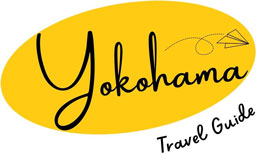
Yokohama Christmas Market
Hammerhead yokohama, your guide to the japan rail pass, luup yokohama, gundam factory yokohama.
Discover the awe-inspiring Gundam Factory Yokohama, where technology and imagination merge. Experience the life-size Moving Gundam, indulge in original food, and explore limited edition products.
Yamashita Park: A Serene Escape
Escape to Yamashita Park in Yokohama and immerse yourself in its serene ambiance. With its lush landscapes and captivating waterfront, this tranquil oasis offers a peaceful retreat from city life.
Osanbashi Terminal: A Maritime Hub
Immerse yourself in the vibrant atmosphere of Osanbashi Terminal in Yokohama. Explore its architectural brilliance, captivating waterfront views, and cultural experiences.
Cosmo World Yokohama
Cosmo World in Yokohama is the perfect destination for those seeking thrilling rides, attractions, food and drink, and events and festivals. With the iconic Ferris wheel and Vanish roller coaster, visitors will never forget their experience.
Bashamichi: Yokohama’s Historic Gem
Step into the allure of Bashamichi in Yokohama, a timeless street where history meets modernity. Stroll through cobbled paths, admire architectural treasures, indulge in culinary delights, and explore cultural gems.
Exploring the Charms of Motomachi
Uncover the allure of Motomachi in Yokohama, where history meets modernity. Stroll along its charming streets, indulge in diverse shopping, savor culinary delights, and experience the tranquility of Motomachi Park.
Yokohama Chinatown: A Cultural Delight
Yokohama Chinatown is the largest Chinatown in Japan and offers a wide variety of authentic Chinese cuisine, traditional Chinese goods, and cultural events. Visitors can indulge in a culinary adventure through China’s regional cuisines and participate in traditional Chinese festivals and events.
Noge: Explore the Lively Neighborhood
Explore the lively neighborhood of Noge in Yokohama, where old meets new and the food scene is diverse and delicious.
Don Quijote: Japan’s Discount Store
Sogo yokohama department store, mark is minatomirai: a shopper’s haven.
Discover Japan’s beauty with the Japan Rail Pass. Explore historic cities and breathtaking landscapes hassle-free.
Public Transport in Japan: Embracing Silence
Discover the unique custom of not talking on public transport in Japan, where silence reigns and unspoken connections are forged. Immerse yourself in the tranquility and cultural harmony of this age-old tradition.
Taking Off Your Shoes in Japan
Discover the significance of taking off your shoes in Japan. From respecting cleanliness to showing respect, explore the cultural traditions behind this custom and learn how to navigate shoe etiquette during your visit.
Learn Japanese: A Japan Travel Tip
Japan is a country that values etiquette and manners. To ensure a smooth and pleasant trip, it’s recommended to learn some basic Japanese before you go. In this article, we’ll discuss the reasons why learning Japanese is important.
Latest Posts
Type above and press Enter to search. Press Esc to cancel.
- Media & Industry
- Meetings & Events
- Select Language 简体中文 繁體中文(香港) 繁體中文(臺灣) India (English) Bahasa Indonesia 한국어 ภาษาไทย Tiếng Việt Singapore (English) Philippines (English) Malaysia (English) Australia/New Zealand (English) Français Deutsch Italiano Español United Kingdom (English) Nordic countries(English) Canada (English) Canada (Français) United States (English) Mexico (español) Português العربية Japan(日本語) Global (English)
- India (English)
- Bahasa Indonesia
- Singapore (English)
- Philippines (English)
- Malaysia (English)
- Australia/New Zealand (English)
- United Kingdom (English)
- Nordic countries(English)
- Canada (English)
- Canada (Français)
- United States (English)
- Mexico (español)
- Global (English)
- Fujiyoshida
- Shimonoseki
- Ishigaki Island
- Miyako Island
- Kerama Island
- Tokyo Island
- Koka & Shigaraki
- Hida Takayama
- Ginza, Nihonbashi
- Beppu & Yufuin (Onsen)
- Ginzan Onsen
- Nagasaki Islands

- Kumano Kodo
- Shikoku Karst
- Amami Oshima
- Hachimantai
- Omihachiman
- Aizuwakamatsu

- Diving in Japan
- Skiing in Japan
- Seasonal Flowers in Japan
- Sustainable Outdoors
- Off the Beaten Track in Japan
- Scenic Spots
- World Heritage
- Home Stays & Farm Stays

- Japanese Gardens
- Japanese Crafts
- Temple Stays
- Heritage Stays
- Festivals and Events
- Theater in Japan
- Japanese Tea Ceremony
- Cultural Experiences in Japan
- Culture in Japan

- Local Cuisine Eastern Japan
- Local Cuisine Western Japan
- Local Street Food
- Japan's Local Ekiben
- Japanese Whisky
- Vegetarian and Vegan Guide
- Sushi in Japan Guide
- Japanese Sake Breweries

- Art Museums
- Architecture
- Performing Arts
- Art Festivals
- Japanese Anime and Comics
- Japanese Ceramics
- Local Crafts

- Scenic Night Views
- Natural Wonders
- Theme Parks
- Samurai & Ninja
- Iconic Architecture

- Wellness Travel in Japan
- Japanese Ryokan Guide
- A Guide to Stargazing in Japan
- Relaxation in Japan
- Forest Bathing (Shinrin-yoku)

- Experiences in Japan
- Enjoy my Japan
- National Parks
- Japan's Local Treasures
- Japan Heritage
- Snow Like No Other
- Wonder Around Japan

- Visa Information
- Getting to Japan
- Airport Access
- COVID-19: Practical Information for Traveling to Japan
- Anime Tourism
- Countryside Stays
- Accessible Tourism
- Hokkaido Great Outdoors
- Scenic World Heritage in Tohoku
- Shikoku’s Nature and Traditions
- Southern Kyushu by Rail

- Traveling by Rail
- How to Travel by Train and Bus
- JR Rail Passes
- Scenic Railways
- Renting a Car
- Sustainable Travel in Japan
- Travel Brochures
- Useful Apps
- Online Reservation Sites
- Eco-friendly Accommodation
- Luxury Accommodations
- Traveling With a Disability
- Hands-free Travel
- How to Book a Certified Tour Guide
- Volunteer Guides
- Tourist Information Center

- Japanese Manners
- Spring in Japan
- Summer in Japan
- Autumn in Japan
- Winter in Japan
- Cherry Blossom Forecast
- Autumn Leaves Forecast

- Japan Visitor Hotline
- Travel Insurance in Japan
- Japan Safe Travel Information
- Accessibility in Japan
- Vegetarian Guide
- Muslim Travelers
- Safety Tips

- JAPAN Monthly Web Magazine
- Arts & Cultures
- Nature & Outdoor
- Festivals & Events
- Insider Blog
- Things to do
- Local Guides
- Food & drink
- Traditional
- Hokuriku Shinetsu

My Favorites
${v.desc | trunc(25)}
Planning a Trip to Japan?
Share your travel photos with us by hashtagging your images with #visitjapanjp
KANAGAWA Yokohama Japan's cosmopolitan window to the world
- NEAR YOKOHAMA
- Destinations
Japan's cosmopolitan window to the world
Yokohama is a vibrant, modern city, a blend of Japanese tradition with that of China and the West. Whether you're looking to savor delicious cuisine, immerse yourself in culture and history, or absorb spectacular views, the area in and around this jewel of Japan offers something for everyone.
- Yokohama Chinatown's shops and restaurants
- The cityscape, grand during the day, dazzling at night
- Spectacular wintertime illuminations at Lake Sagami
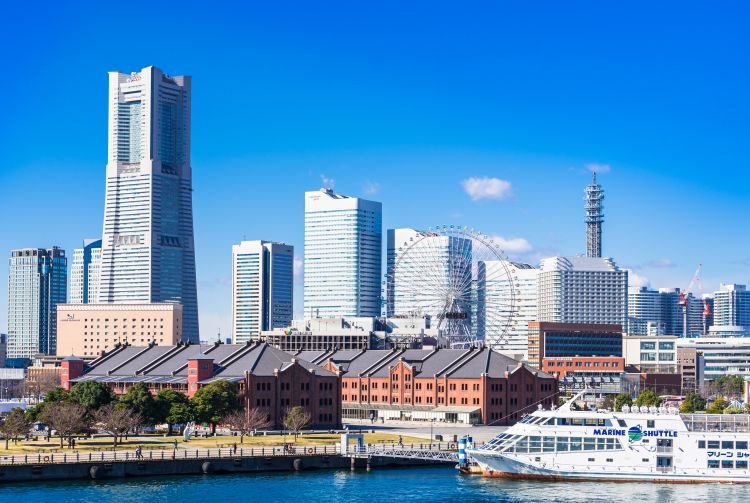
How to Get There
Yokohama is a short and easy trip from Tokyo with direct links to area airports and shinkansen service for cities further afield.
Visitors coming from downtown Tokyo can take JR or one of several private rail lines to reach Yokohama Station, which is more central than Shin-Yokohama, in an hour or less.
The fastest rail link from Western Japan is the Nozomi Shinkansen stopping at Shin-Yokohama Station. The journey takes about one hour and 25 minutes from Nagoya, two hours from Kyoto and Osaka, and three hours and 40 minutes from Hiroshima.
Between Haneda Airport and Yokohama Station, the Keikyu train lines take about 20 minutes each way. A shuttle bus takes 30 minutes.
The Narita Express train and shuttle buses traveling between Narita Airport and Yokohama Station area take about 90 minutes each way.
Shopping and dining Yokohama style
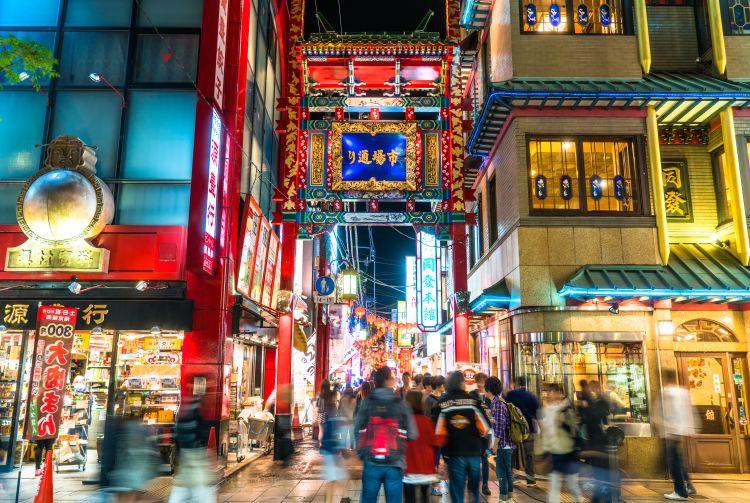
Chinatown at night

Motomachi streetview
Museums and more
Now it houses a variety of shops, cafes, restaurants and event spaces. It even has a jazz club. Climb up to the third-floor balcony for great views over the harbor.

Yokohama Red Brick Warehouse
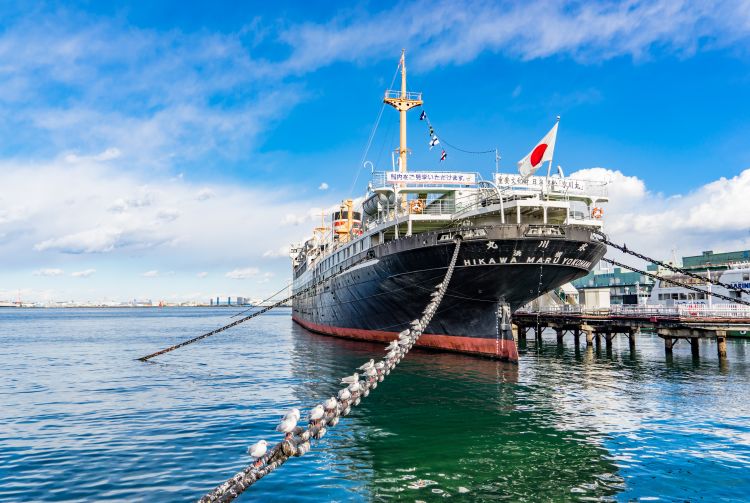
NYK Hikawa Maru
Stunning urban views
Down at Yokohama's waterfront, you don't have to spend money to have fun. Yokohama Bay and the development along the shore make for gorgeous photos from just about anywhere along its stretch, day or night.
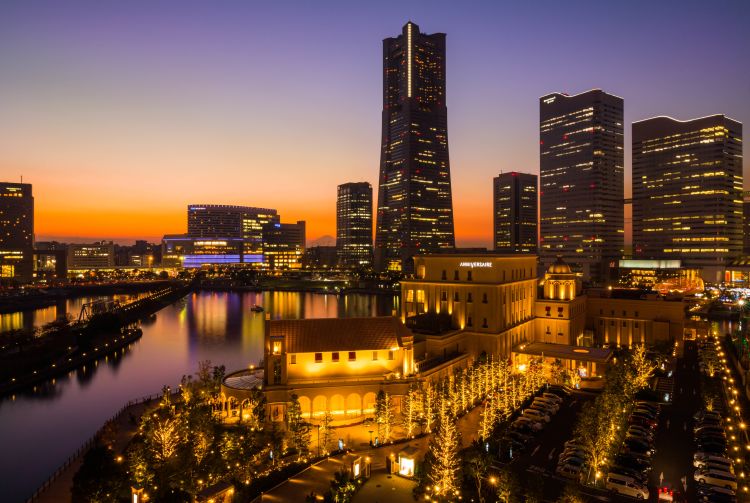
Another way to take in the scenery is the Sea-Bass, a ferry that makes several stops along the waterfront.

Sagamiko Illumillion
Outdoor leisure
Have some fun fishing, or take a paddle boat out on the lake. Kids will love the amusement park with its Muscle Monster, a gargantuan tower of an obstacle course that will challenge even the most adventurous travelers. Kids accompanied by adults can brave the beast, too.
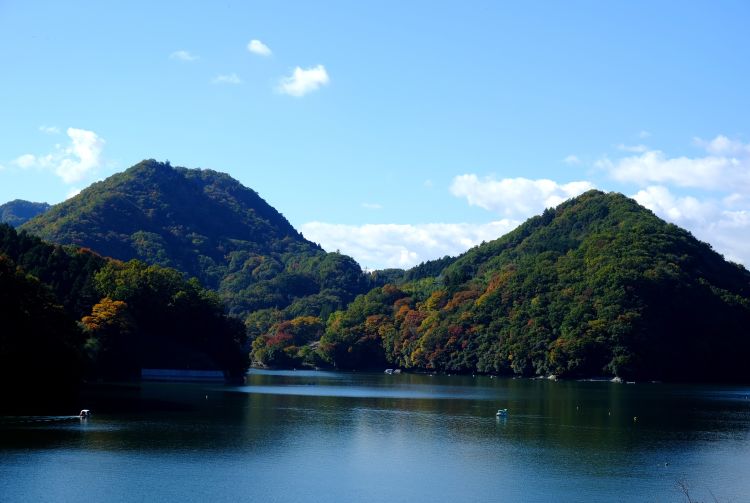
* The information on this page may be subject to change due to COVID-19.
Recommended for You
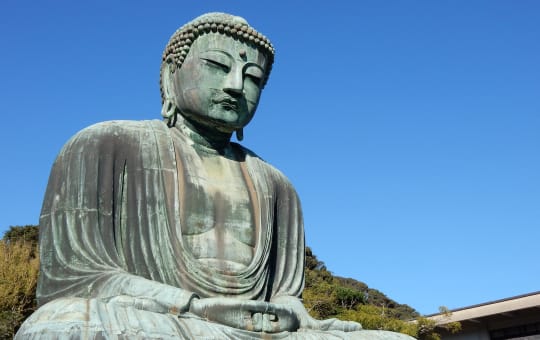
Did this information help you?
out of found this information helpful.
Thank you for your feedback.
Related links.
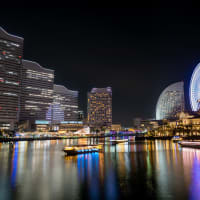
Please Choose Your Language
Browse the JNTO site in one of multiple languages
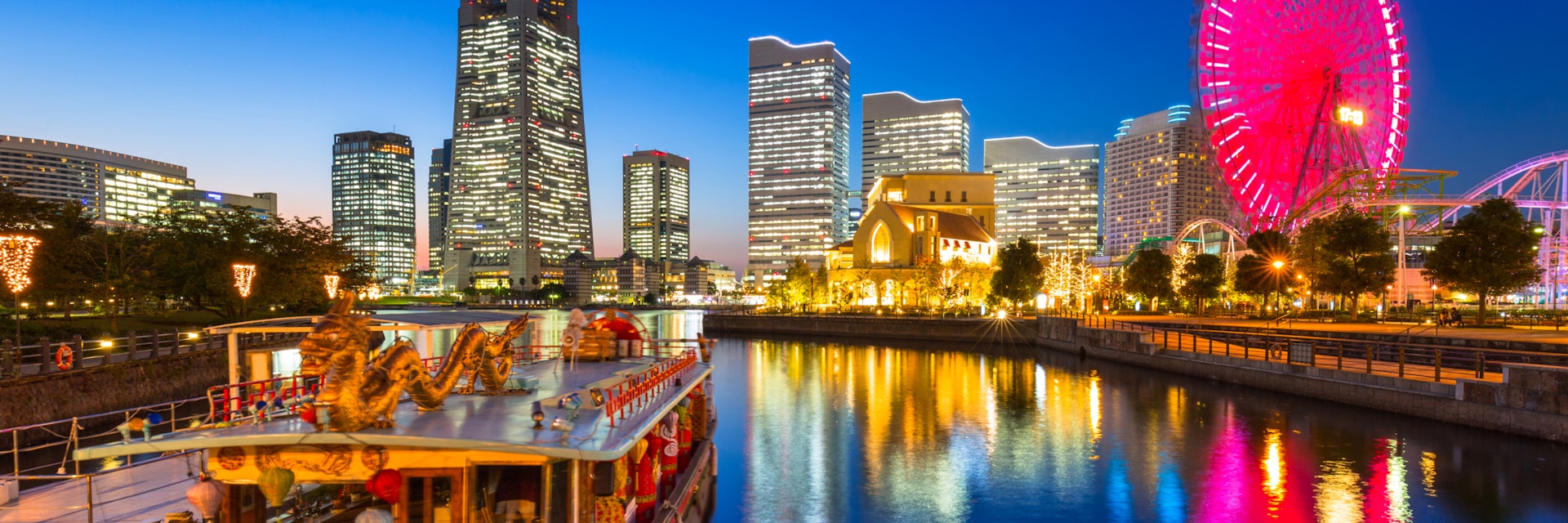
Shutterstock / Patryk Kosmider
Even though it's just a 30-minute train ride south of central Tokyo, Yokohama (横浜) has an appealing flavour and history all its own. Locals are likely to cite the uncrowded, walkable streets or neighbourhood atmosphere as the main draw, but for visitors it's the breezy bay front, creative arts scene, multiple microbreweries, jazz clubs and great international dining.
Leave the planning to a local expert
Experience the real Yokohama. Let a local expert handle the planning for you.
Attractions
Must-see attractions.
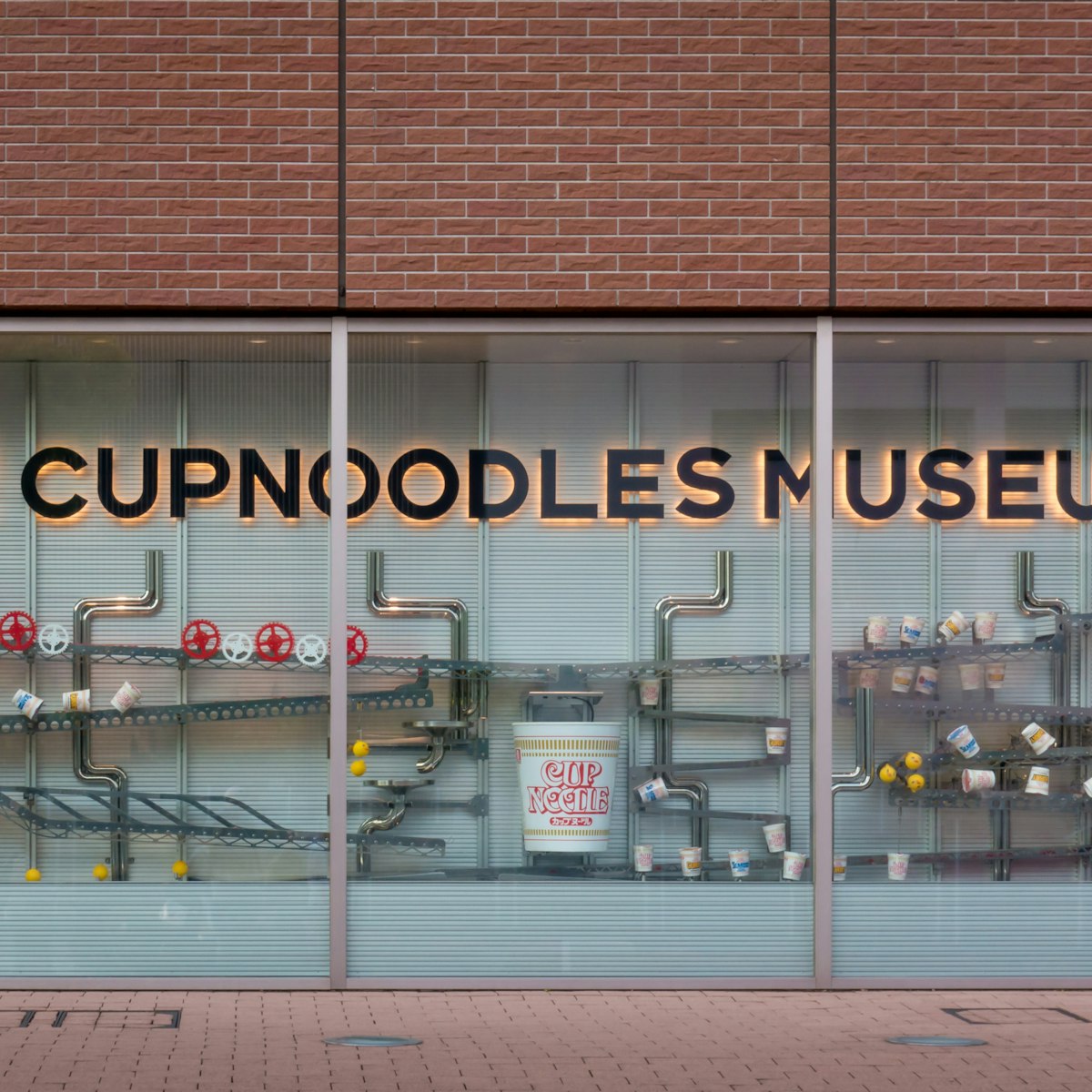
Cup Noodles Museum
This impressively slick attraction is dedicated to, you guessed it, cup noodles. But in reality, its focus is more broad, with numerous exhibitions…
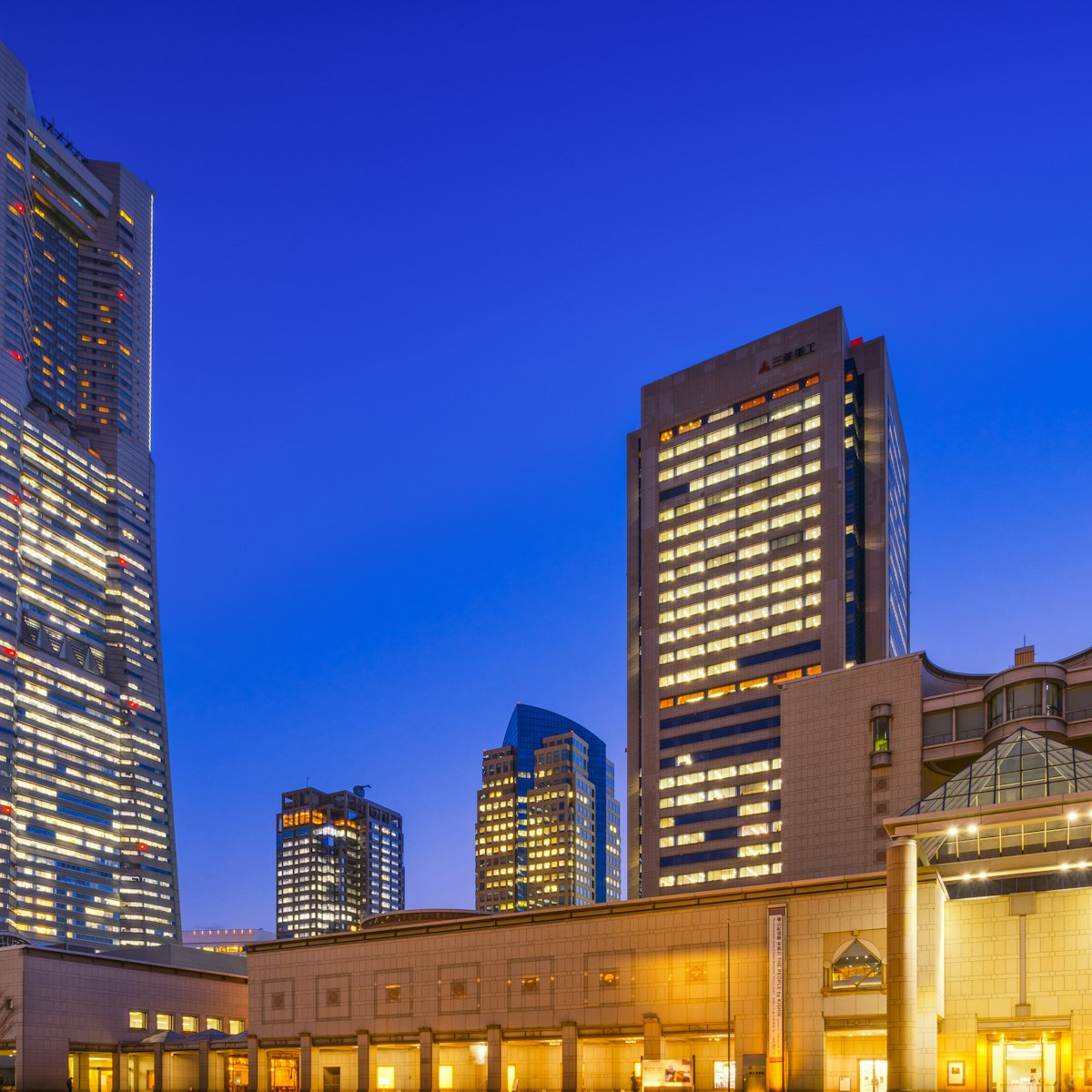
Yokohama Museum of Art
The focus of the Yokohama Triennale (2020, 2023), this museum hosts exhibitions that swing between safe-bet shows with European headliners to more daring…
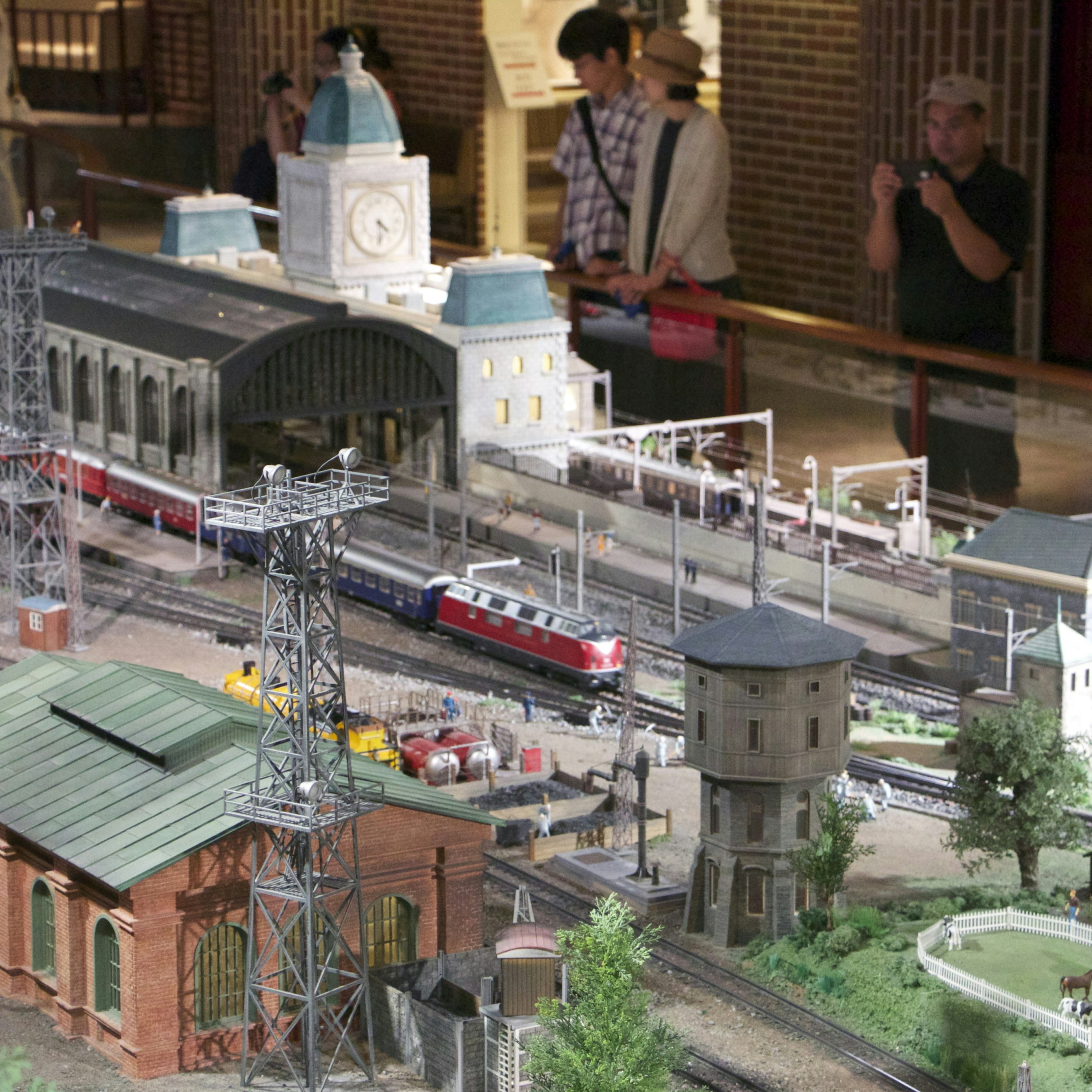
Hara Model Railway Museum
Hara Nobutaro (1919–2014) was Japan's pre-eminent trainspotter, taking the pastime to a typically Japanese level of obsessiveness as this superb personal…

Shin-Yokohama Ramen Museum
Nine ramen restaurants from around Japan were hand-picked to sell their wares in this theme-park-style replica of a 1958 shitamachi (downtown district)…

NYK Hikawa Maru
Moored at the eastern end of Yamashita-kōen, this 1930s luxury liner has stories to tell from its days conveying well-heeled Japanese passengers to…

Nippon Maru Sailing Ship
This magnificent, four-masted barque (built in 1930 as a training ship for naval cadets) sits in a wet dock adjacent to the Yokohama Port Museum, and is…
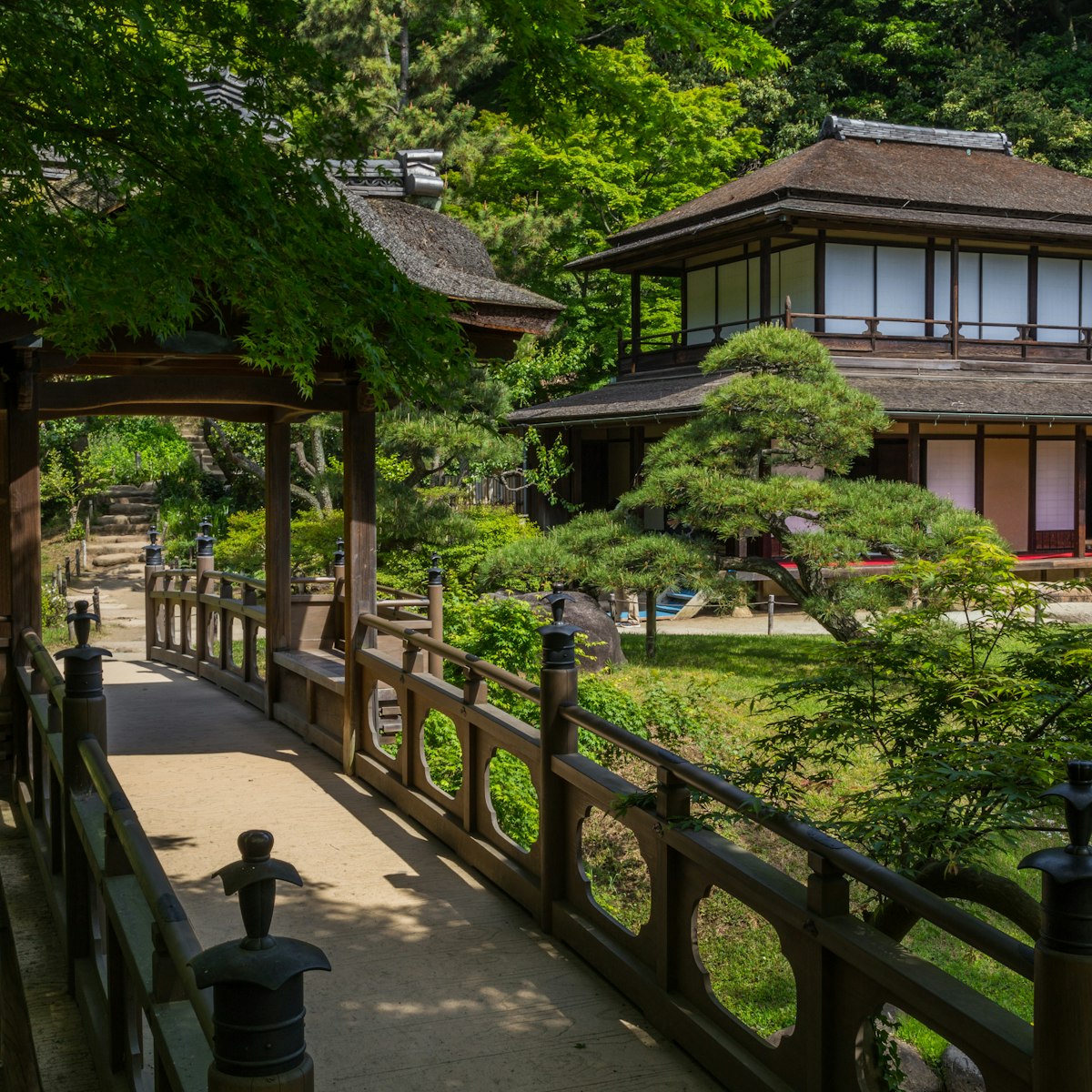
This beautifully landscaped garden was established by a wealthy silk trader, Sankei Hara, and opened to the public in 1906. Paths winding between ponds…
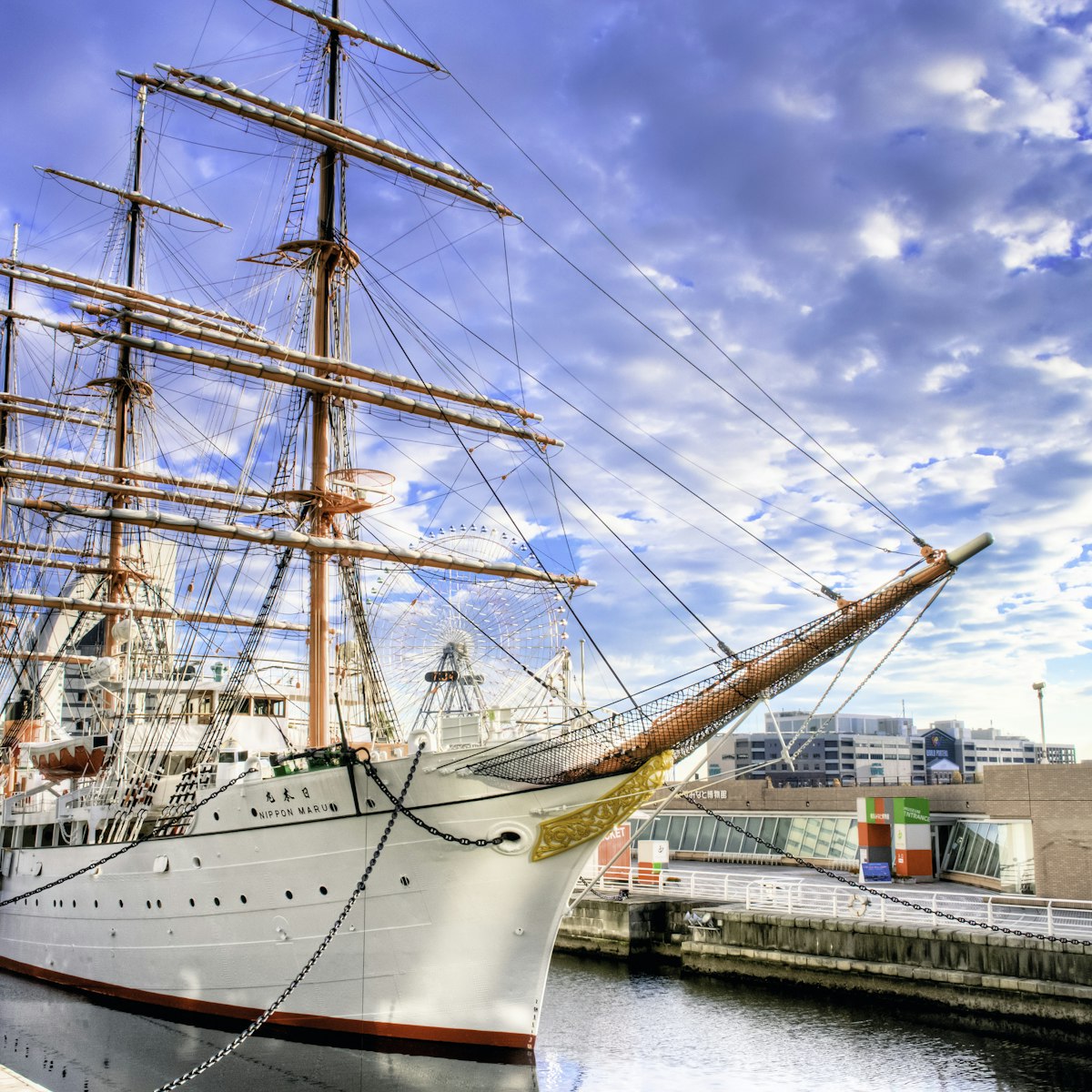
Yokohama Port Museum
Adjacent to the magnificent Nippon Maru, is this comprehensive, if somewhat dry, port museum. It's worth a visit for its detailed model ships and ship…
Plan with a local
Experience the real Japan
Let a local expert craft your dream trip.

Latest stories from Yokohama

May 9, 2017 • 6 min read
Tokyo is dazzling, frenetic and fashionably cool, but there are times when the population crush and non-stop energy turns this urban paradise into a…
in partnership with getyourguide
Book popular activities in Yokohama
Purchase our award-winning guidebooks.
Get to the heart of Yokohama with one of our in-depth, award-winning guidebooks, covering maps, itineraries, and expert guidance.

Discover & Book! 26 Fun Things To Do In Yokohama Japan
Discover the top things to do in Yokohama , from historic sights to delectable cuisine, with our travel guide. A day trip from Tokyo to Yokohama offers unique and exciting experiences that are often overlooked. Book your trip now!
Why is Yokohama so unique?
How to get to yokohama city from tokyo, cultural experiences, historic and scenic views.
- Shopping and Urban Exploration
- Food and Culinary Experiences
- Outdoor Activities and Sports
- Family and Kids Activities
- Festivals and Seasonal Events
- Recommended Yokohama tours
Stepping into Yokohama is like stepping into a fusion of timelines. As Japan's second-largest city, Yokohama effortlessly combines the grace of history with the pulse of modernity. Here, traditional gardens nestle just beyond the towering skyscrapers, and quaint shopping streets lead you to bustling, state-of-the-art entertainment complexes. It's a city that has beautifully embraced its past while looking forward to the future. Originally Yokohama was a small fishing village , but when Japan reopened to the world after a period of national isolation, it became one of the first ports which allowed foreign trade. From these humble beginnings, it quickly grew with foreigners settling in the Kannai area. For this reason, Yokohama became the first place in Japan for Western fashion to become popular, for an English language newspaper to be published, and more. Even today, it remains a bustling port – the second busiest in Japan and in the top fifty largest seaports in the world.
By Train: The easiest and most convenient way to get to Yokohama from Tokyo is by train. From Tokyo Station , hop on the JR Tokaido Line or the JR Keihin-Tohoku Line. The journey takes approximately 25 to 30 minutes and will drop you off at Yokohama Station, right in the heart of the city. By Shinkansen (Bullet Train): For a super speedy ride, take the Shinkansen from Tokyo Station to Shin- Yokohama Station. This will only take about 20 minutes, but do note that Shin- Yokohama Station is a bit further from downtown Yokohama , so you might need a subway ride to reach the city center. By Subway: You can also reach Yokohama from Tokyo via the Tokyo Metro's Minatomirai Line. Starting from Shibuya Station, take the Tokyo Toyoko Line to Yokohama Station. The journey should take approximately 30 to 40 minutes. Yokohama is a destination that is included in the JR Rail Pass, the JR Tokyo Wide Pass, and even the N’EX Round Trip Ticket.
- JR TOKYO Wide Pass (3-Day ) : Best for visitors traveling only around the greater Tokyo area.
- JR Osaka-Tokyo Hokuriku Arch Pass (7 Days) : Best for visitors planning to travel between and around Tokyo, Kyoto, and Osaka.
- JR Pass for Whole Japan (7, 14, 21 Days) : Best for visitors planning an extended trip to a large variety of places across Japan.
Discover the fun things to do in Yokohama - a hidden gem that's waiting to surprise you at every turn!
1. Wander Around Yokohama Red Brick Warehouse (Akarenga Soko)
Another jewel in the Minto Mirai crown is the iconic Yokohama Red Brick Warehouse which dates back to the early 20th century. This historic structure originally served as a customs inspection center and goods storage area. Through the years, it silently witnessed the growth of Yokohama as a thriving international port. Today, the Akarenga complex comprises two main buildings — Warehouse Number 1 and Warehouse 2. In 2022, Warehouse 2 underwent a makeover, now housing a delightful mix of eclectic eateries and stylish boutiques. When it comes to dining at the Yokohama Red Brick Warehouse, you're spoiled for choice. Eat at Shogun Burger, a bento at Kiyoken, or maybe splurge on a romantic meal at Chano-ma. Later scarf down fluffy pancakes at Bills, or bottled desserts at Milk Marche for dessert. Beyond eating and shopping, Warehouse 2 also has a balcony with a harbor view, perfect for people-watching. Warehouse No 1 serves as a cultural and entertainment hub playing host to artistic shows and performances year around. People flock to this lively attraction in the Yokohama Bay area during colder months to skate in the seasonal ice skating rink. Tourists often stumble upon the warehouse being drawn by the musical symphonies emerging from the Red Brick Park , where plenty of outdoor events are held throughout the year. The hipster-looking red brick exterior, paired with the scenic azure waterfront, creates a picturesque setting for a short stroll.
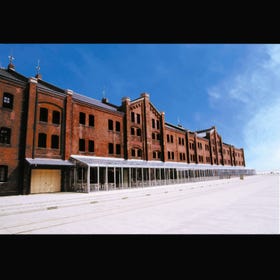
- Address 1-1, Shinkou, Naka-ku, Yokohama-shi, Kanagawa, 231-0001 View Map
- Nearest Station Sakuragicho Station (JR Negishi Line / Line 3 (Yokohama Blue Line))
- Phone Number 045-211-1515
2. Take in the views at Yamate and Yokohama Foreign Cemetery
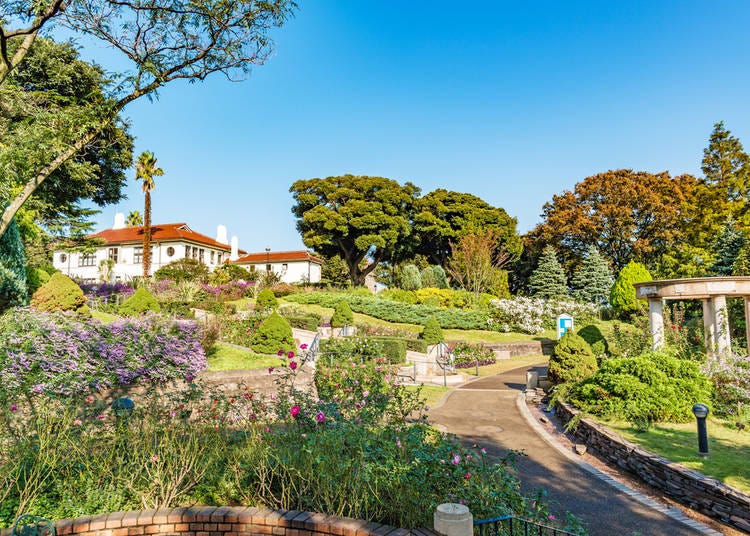
When Yokohama opened as an international trade port foreigners started settling in the area of Yamate, not many of their houses survived until today. But in Harbor View Park you can see some of the oldest ones. This park also has a lovely view of the harbor, which means you can experience the history of the houses, which are open to the public, and take some great pictures of Yokohama City. Not far from here you can also visit Yokohama Foreign Cemetery where a number of famous westerners were buried; including one of the first westerners to be buried here in 1854 after Japan ended its national isolation.
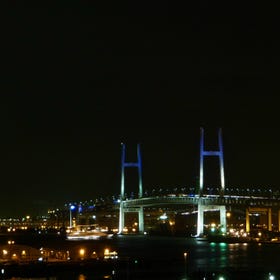
- Address 114, Yamatecho, Naka-ku, Yokohama-shi, Kanagawa, 231-0862 View Map
- Nearest Station Motomachi-Chukagai Station (Minatomirai Line) 5 minutes on foot
- Phone Number 045-671-3648
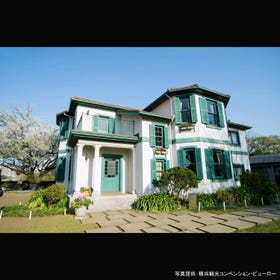
- Address 16, Yamatecho, Naka-ku, Yokohama-shi, Kanagawa, 231-0862 View Map
- Nearest Station Ishikawacho Station (JR Negishi Line) 5 minutes on foot
- Phone Number 045-662-6318
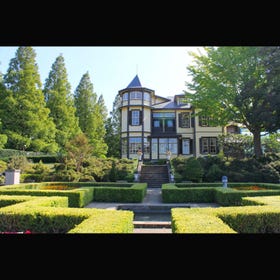
- Phone Number 045-662-8819
3. Explore Yokohama’s Famous Chinatown
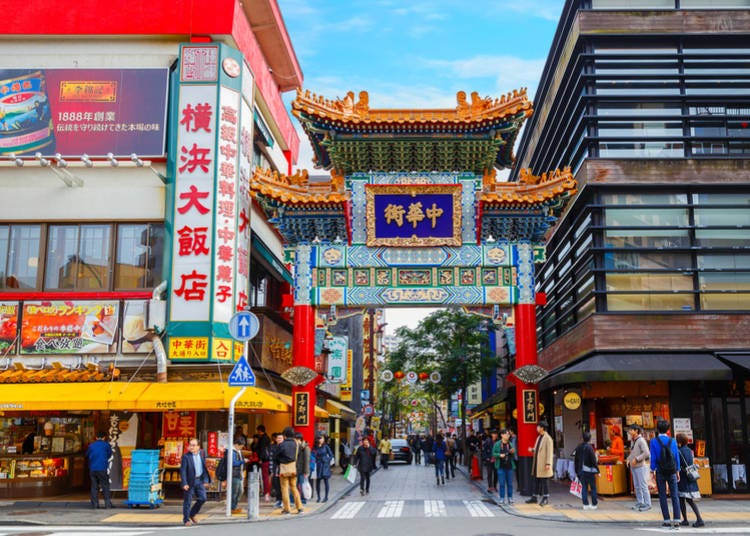
Japan’s reopening to the world also attracted many Chinese people to Yokohama City, who started settling in the area of Chinatown in the 1850s. Today, Yokohama Chinatown is famous for the more than 500 restaurants found within the four gates that make up the entrances to Chinatown , at the center of which Kanteibyo, a temple built in 1873 and dedicated to business and prosperity, can be found. You can choose anything from going into one of the many restaurants offering all-you-can-eat, to simply checking the market stalls and what they have to offer. It is a real culinary treat and among some of the best things to do in Yokohama !
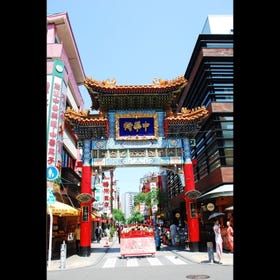
- Address Naka-ku, Yokohama-shi, Kanagawa, 231-0023 View Map
- Nearest Station Motomachi-Chukagai Station (Minatomirai Line) 1 minute on foot
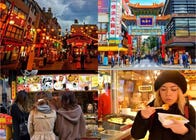
4. Uncover local heritage at the Kanagawa Prefectural Museum of Cultural History
Stepping into the Kanagawa Prefectural Museum of Cultural History feels like stepping into a time machine. This Important Cultural Property of Japan is nestled within a stone's throw from Bashamichi Station on the Minato Mirai Line, and a leisurely stroll away from various lines at Kannai Station. This historical marvel, built in 1904 as the central branch of Yokohama Specie Bank, now serves as a treasure chest of Japanese history and culture. Each era unfolds as you navigate through the exhibitions. Be prepared to travel from ancient times with stone tools and pottery, to the vibrant Edo period, represented by ukiyo-e ( woodblock prints ). These prints tell vivid stories of the foreign residents of Yokohama after the Port opened its welcoming arms to the world. The museum breathes life into Yokohama 's past, showcasing special exhibitions throughout the year. These encapsulate the evolution of Yokohama 's urban landscape and the lives of its people, offering a glimpse into the city's changing face over the centuries. But the journey doesn't end there. The ground floor hosts a library for those hungry for more knowledge, a museum shop selling picture books and original merchandise inspired by the museum 's collections, and a cozy cafe to sit back and digest the richness of your historical journey.
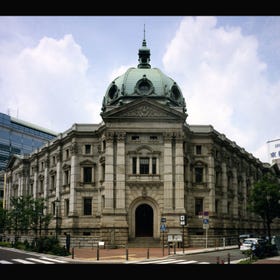
- Address 5-60, Minaminakadori, Naka-ku, Yokohama-shi, Kanagawa, 231-0006 View Map
- Nearest Station Bashamichi Station (Minatomirai Line) 1 minute on foot
- Phone Number 045-201-0926
5. Admire contemporary masterpieces at the Yokohama Museum of Art
The Yokohama Museum of Art, an iconic symbol in the heart of the Minato Mirai 21 district, is a gateway to an immersive art experience. A quick 3-minute stroll from Minato Mirai Station or a 10-minute walk from Sakuragicho Station will transport you to its grand main entrance. Here, a majestic 20-meter-high open ceiling adorned with granite tiles ushers you into a world of artistic brilliance. Boasting a collection of over 10,000 art pieces spanning from the late 19th century to contemporary times, the museum is a melting pot of Japanese and international art. Masterpieces from luminary artists like Dali, Magritte, Cezanne, and Picasso are ready to inspire and fascinate you. The carefully curated permanent exhibitions unravel a narrative, categorizing artworks by themes and enhancing your understanding of the artists' intent. In addition to the splendid art collections, the museum houses an art information and media center. This rich resource of over 110,000 art-related books and 580 images offers deep dives into the art world at no additional cost. Fancy taking a piece of this artistic experience home? The museum shop, accessible without an admission ticket, awaits with unique gifts and souvenirs, perfect mementos of your artistic journey or thoughtful presents for your loved ones.
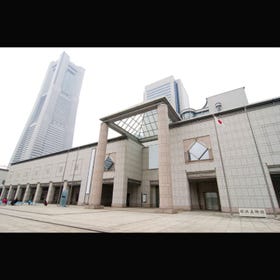
- Address 3-4-1, Minatomirai, Nishi-ku, Yokohama-shi, Kanagawa, 220-0012 View Map
- Nearest Station Minatomirai Station (Minatomirai Line) 3 minutes on foot
- Phone Number 045-221-0300
6. Visit Sankeien Garden, a traditional Japanese garden
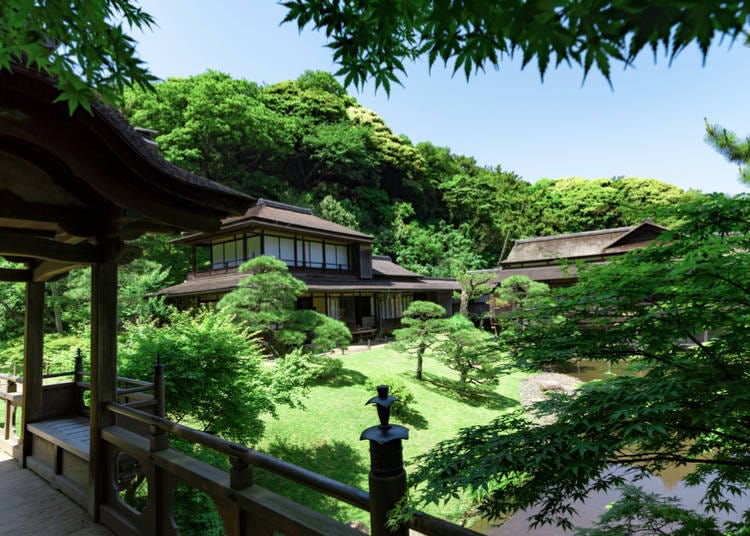
Opened to the public for the first time in 1906, Sankeien Garden was designed as a traditional Japanese garden . The expansive grounds include 17 old buildings that were moved and reconstructed from places such as Kyoto and Kamakura , making it a delightful place to visit in Yokohama for architecture lovers. As just a traditional Japanese garden , it is beautiful in itself, but the fact that as you wander through it you can come across impressive historical structures is awe-inspiring. Discover the Shunsoro, or tea room, which is believed to have been built for Oda Nobunaga’s brother Oda Urakusai, or the Gekkaden, or guest house, which was built in 1603 for none other than Tokugawa Ieyasu.
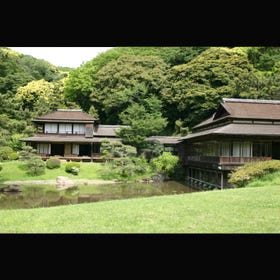
- Address 58-1, Honmokusannotani, Naka-ku, Yokohama-shi, Kanagawa, 231-0824 View Map
- Nearest Station Negishi Station (JR Negishi Line) 10 minutes by bus
- Phone Number 045-621-0634
7. Enjoy beautiful panoramic views from Yokohama Landmark Tower
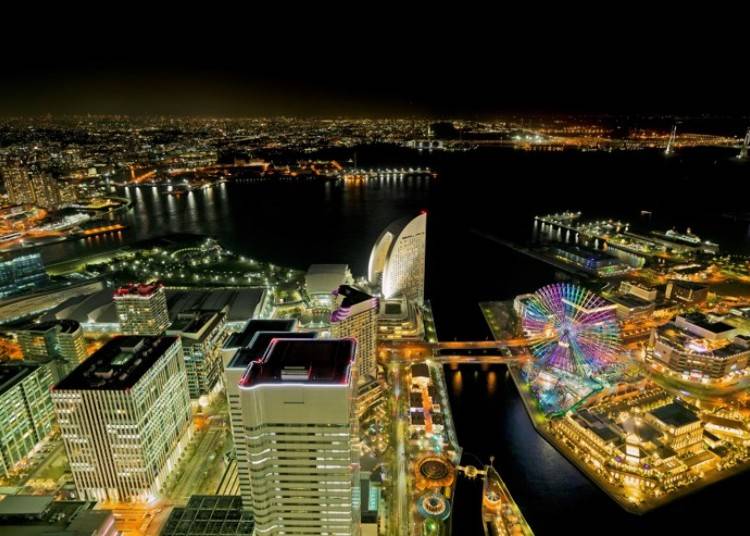
The business district of Minato Mirai is very photogenic and receives tens of millions of visitors every year. In particular, the skyline is beautiful, and there is any number of places from which you can really appreciate it including but not limited to the Ferris wheel in Cosmo World Amusement Park , Kishamichi Promenade, and Yokohama Landmark Tower. One of the joys of this area is that it is very pretty during the day, but absolutely gorgeous at night, and there is no better place to appreciate the view than from the observation deck of the Yokohama Landmark Tower. It is among the tallest buildings in Japan and on a very clear day it is even possible to see Mount Fuji .
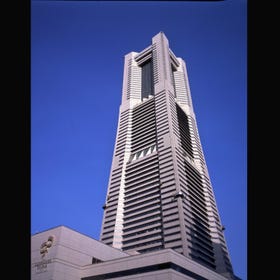
- Address 2-2-1, Minatomirai, Nishi-ku, Yokohama-shi, Kanagawa, 220-8172 View Map
- Nearest Station Sakuragicho Station (JR Negishi Line / Line 3 (Yokohama Blue Line)) 5 minutes on foot
- Phone Number 045-222-5015
Truly Tokyo
A Tokyo Travel Guide
- Yokohama Itineraries
Yokohama makes a great day trip out of Tokyo. Our one-day and two-day itineraries allow you to make the best use of your time.

Yokohama is easy to navigate, so you can swap out places as you like for these itineraries. Choose the best one below to suit your schedule.
- For information on the sights mentioned here, see our Things to Do in Yokohama page .
- For transport information, see our Getting Around Yokohama page .
- For restaurant suggestions, see our Places to Eat in Yokohama page .
- For my hotel suggestions, see our Yokohama Hotels page .
Yokohama One-Day Itinerary
One day is enough time to see the main sights in Yokohama. It can be done as a day trip from Tokyo, though it will be a longer day with an early start. It will be a little more leisurely if you spend a night in Yokohama. For some suggested hotels, see the Yokohama Hotels page .

8:30am Start at Tokyo Station
Start at Tokyo Station. Take the JR Negishi Line (connects from the JR Keihin-Tohoku Line) to Negishi Station. From here, take a 10-minute bus ride to Honmoku on lines 58, 99, or 101. The whole journey will take about 1 hour 20 minutes.

9:30am Explore Sankeien Garden
Begin your morning with a dose of greenery and beauty by exploring Sankeien Garden. There’s much to see in this sprawling traditional Japanese garden. A leisurely pace is good here. It’s best to visit early in the morning to avoid crowds, especially during cherry blossom or fall foliage season.
11:30am Lunch in Yokohama Chinatown
Follow your morning walk with lunch in Japan’s largest Chinatown. Take the No. 8 bus back into central Yokohama until you hit Yamashita-cho; Chinatown is a short 5-minute walk away. The streets of Chinatown are packed with stalls and restaurants selling everything from dim sum to bubble tea to dumplings. Fill up on snacks, or have a proper sit-down meal at one of the many excellent restaurants. Check out our Places to Eat in Yokohama page for some great eating suggestions in the area.

1:00pm Walking in Yamashita Park
It’s time to stretch your legs at Yokohama’s most famous public park, consisting of open green space and a delightful promenade stretching for 750m along the waterfront. The park itself is located just 10 minutes on foot from Chinatown. Enjoy views of the city as you stroll alongside Yokohama Bay. After the park, you’ll arrive at Osanbashi Pier. This is the main international passenger terminal, and it’s worth wandering around for a few photos.
2:00pm Check out the Red Brick Warehouse
Known as Akarenga in Japanese, this handsome red brick building was originally a customs office for Yokohama Port. It’s a tourist attraction today, having been converted into restaurants and boutique shops inside. This is a good place to pick up some souvenirs, as many of the shops sell locally-made crafts and goods.

3:30pm Have fun in the Minato Mirai area
Heading northwards from the Red Brick Warehouse, the seaside urban area of Minato Mirai 21 is home to many of Yokohama’s most-visited attractions. Places like the Cup Noodle Museum and Cosmo World are great ways to wrap up a full day out in Yokohama. Alternatively, take a break at a cafe in the area.
6:00pm Dinner in Yokohama
You can return to Tokyo for dinner, but Yokohama has its fair share of excellent dining options. Check out our Places to Eat in Yokohama page for some ideas. Post-dinner, Minato Mirai is a lovely place for a stroll and to enjoy the night skyline.
Yokohama Two-Day Itinerary
Two days is a good amount of time to spend in Yokohama. It allows you to slow down a little and thoroughly savour all the sights you’re seeing. Ideally, you’ll be staying overnight in Yokohama. For some suggested hotels, see the Yokohama Hotels page .
8:30am Yokohama Station
Start at Yokohama Station. There’s a Tourist Information Centre at the East Exit if you need to pick up any day passes or maps.
9:00am Sankeien Garden
Begin your morning with a leisurely exploration of Yokohama’s most beautiful traditional Japanese garden. It’s easily accessible from Yokohama Station by taking bus number 8 or 148. To make the most of your time, go early in the morning to avoid crowds. There’s plenty to see here so it’s worth spending a few hours. Plus, there are places in the garden to have mid-morning tea.

12:00pm Lunch in Yokohama Chinatown
Have a leisurely lunch in Chinatown – there are dozens of restaurants serving hearty, delicious Chinese food. If the restaurants seem too busy or the queues at food stalls too long, consider eating in nearby Motomachi or Yamate districts just south of Chinatown. We have a number of suggestions for you on our Places to Eat in Yokohama page.
2:00pm Explore nearby green spaces
Spend the rest of your afternoon wandering around the open green spaces in the surrounding area. There’s the lovely Yamashita Park along the waterfront, but the Yamate district is also worth exploring. The district is home to the peaceful Yokohama Foreign General Cemetery, the quirky Yokohama Doll Museum, and Harbour View Park. The latter is a landscaped park where you have great views of the harbour; there’s also a charming rose garden and some Western-style buildings that once housed Western diplomats during the Meiji period.
4:00pm Return to Yokohama Station
Head back to Yokohama Station by train or bus.
9:00am Yokohama Station
Start at Yokohama Station.

9:00am Negishi Forest Park
Begin your morning in a calm, green space. This beautiful park in a residential neighbourhood is especially lovely for morning blossom-viewing or fall foliage-viewing . Bring some food and water for a picnic.
12:00pm Lunch in the Minato Mirai Area
Have lunch at one of the restaurants in the Minato Mirai area. The Red Brick Warehouse also has a number of cafes and restaurants overlooking the port, and it’s a nice place to do some shopping afterwards. See the Places to Eat in Yokohama page for suggestions.
2:00pm Cup Noodles Museum
Visit the colourful, whimsical Cup Noodles Museum in the Minato Mirai area. You could easily spend up to 3 hours in the museum, especially if you include a noodle-making workshop after visiting the exhibits.

4:00pm Cosmo World
Cross the road and ride some of the attractions at this urban amusement park. The roller coasters are especially popular with teenagers and the young at heart. It’s also a good place for families with young kids to burn off some extra energy. Alternatively, there are plenty of cafes in the area for a coffee break.
6:00pm Dinner in Yokohama, or at the Shin-Yokohama Ramen Museum
Yokohama has many good restaurants for dinner. Alternatively, you may like to head over to the Shin-Yokohama Ramen Museum, where you can sample up to 9 different “mini” bowls of ramen across a variety of genres and styles. If you love delicious ramen, you’re sure to appreciate being able to try so many at one time!
Yokohama Travel Guide:
- Yokohama Travel Guide Overview
- Things To Do In Yokohama
- Places To Eat In Yokohama
- Yokohama With Kids
- Yokohama Cherry Blossoms
- Yokohama Fall Foliage
- Yokohama Districts
- Yokohama Ryokan
- Yokohama Hotels
- Yokohama Map
- How To Get To Yokohama
- Getting Around Yokohama
- Best Time To Go To Yokohama
Tokyo Vacation Checklist
- For all the essentials in a brief overview, see my First Time In Tokyo guide
- Check Tokyo accommodation availability and pricing on Booking.com and Agoda.com - often you can book with no upfront payment and free cancellation
- Need tips on where to stay? See my one page guide Where To Stay In Tokyo
- You can buy shinkansen (bullet train) tickets online from Klook - popular routes include Tokyo to Kyoto , Tokyo to Osaka and Tokyo to Hiroshima
- You can buy a Japan SIM card online for collection on arrival at Tokyo Narita or Haneda airports. Or rent an unlimited data pocket wifi router
- See my comprehensive Packing List For Japan
- Compare airline flight prices and timings for the best Japan flight deals . Check my guides to arriving at Narita Airport and at Haneda Airport .
- If you're visiting more than one city, you might save money with a Japan Rail Pass – see if it's worth it for you
- A prepaid Welcome Suica card makes travelling around Tokyo much easier - here's how
- World Nomads offers simple and flexible travel insurance. Buy at home or while traveling and claim online from anywhere in the world
Tokyo District Map

- Imperial Palace Area
- Tokyo Station
- Shimbashi Shiodome Hamamatsucho Shinagawa
- Akihabara Kanda
- Roppongi Akasaka
- Harajuku Aoyama
- Ebisu Daikanyama Meguro
Disclosure: trulytokyo.com is a participant in the Amazon Services LLC Associates Program, an affiliate advertising program designed to provide a means for sites to earn advertising fees by advertising and linking to amazon.com and amazon.co.uk. World Nomads provides travel insurance for travellers in over 100 countries. As an affiliate, we receive a fee when you get a quote from World Nomads using this link. We do not represent World Nomads. This is information only and not a recommendation to buy travel insurance.

21 AWESOME Things to Do in Yokohama, Japan [2024]
- Last Updated: January 25, 2024
Don’t miss this list of the best things to do in Yokohama, Japan to help you make the most of your next vacation to these fascinating city.
You’d be forgiven for thinking of Yokohama as just another suburb of Tokyo since it’s located a mere 35km away.
The endless list of places to see and things to do in Yokohama City makes it worth visiting, and whether it’s celebrating instant noodles, dressing up in a kimono or taking a peaceful walk through a Japanese garden – there is something for everyone in Yokohama.
With a quarter of Tokyo’s population, an escape from the hustle and bustle to historical charm, pop culture and seaside fun is an easy train ride away.
Yokohama was one of the first Japanese ports opened to foreign trade in 1859 so it also offers some unique attractions to its port town identity.
READ MORE: Check out our ultimate Yokohama itinerary for if you have one, two or three days!
Table of Contents
1) CUPNOODLES Museum
2) visit the yokohama noh theater, 3) check out the largest chinatown in japan, 4) tour a world cup stadium, 5) go to a game at yokohama stadium, 6) try every kind of ramen at the shin yokohama ramen museum, 7) taste 100 different types of sake, 8) explore one of yokohama’s most hipster buildings, 9) head out for a night of japanese jazz, 10) shipdeck rooftop, 11) visit the yokohama museum of art, 12) ride the giant ferris wheel at cosmo world in minato mirai, 13) take a tour through kirin brewery, 14) go on a swimming bus tour, 15) relax in a natural hot spring, 16) dress up in a kimono, 17) visit the yokohama port museum and climb aboard a sailing ship, 18) enjoy cityscapes from a sky garden in the yokohama landmark tower, 19) get the chance to skate on an olympic size rink, 20) find harmony at sankei-en garden, 21) wander the arcade on rokkakubashi shopping street, the best hostel in yokohama – guesthouse futareno, the best budget accommodation for couples – sotetsu fresa inn yokohama sakuragicho, best mid-range hotel – hotel monterey yokohama, best luxury hotel in yokohama – yokohama royal park hotel, best restaurants in yokohama, japan, the top things to do in yokohama.
There’s no shortage of awesome activities to check out when wondering what to do in Yokohama, Japan.
Whether you’re interested in culture, food, history or spending time outdoors, you’re bound to find some great Yokohama attractions for any style of travel.
Catch a game at Yokohama Stadium or tour the famous Shin Yokohama Ramen Museum. Admire the hipster Red Brick Warehouse or overwhelm your senses at Yokohama Cosmo World.
This city is a real gem of the Kanagawa Prefecture, and it’s easy to reach from Tokyo by public transport.
You can book your train ticket online in advance for 3,000 Yen on Klook, and your ticket will include a restaurant coupon!
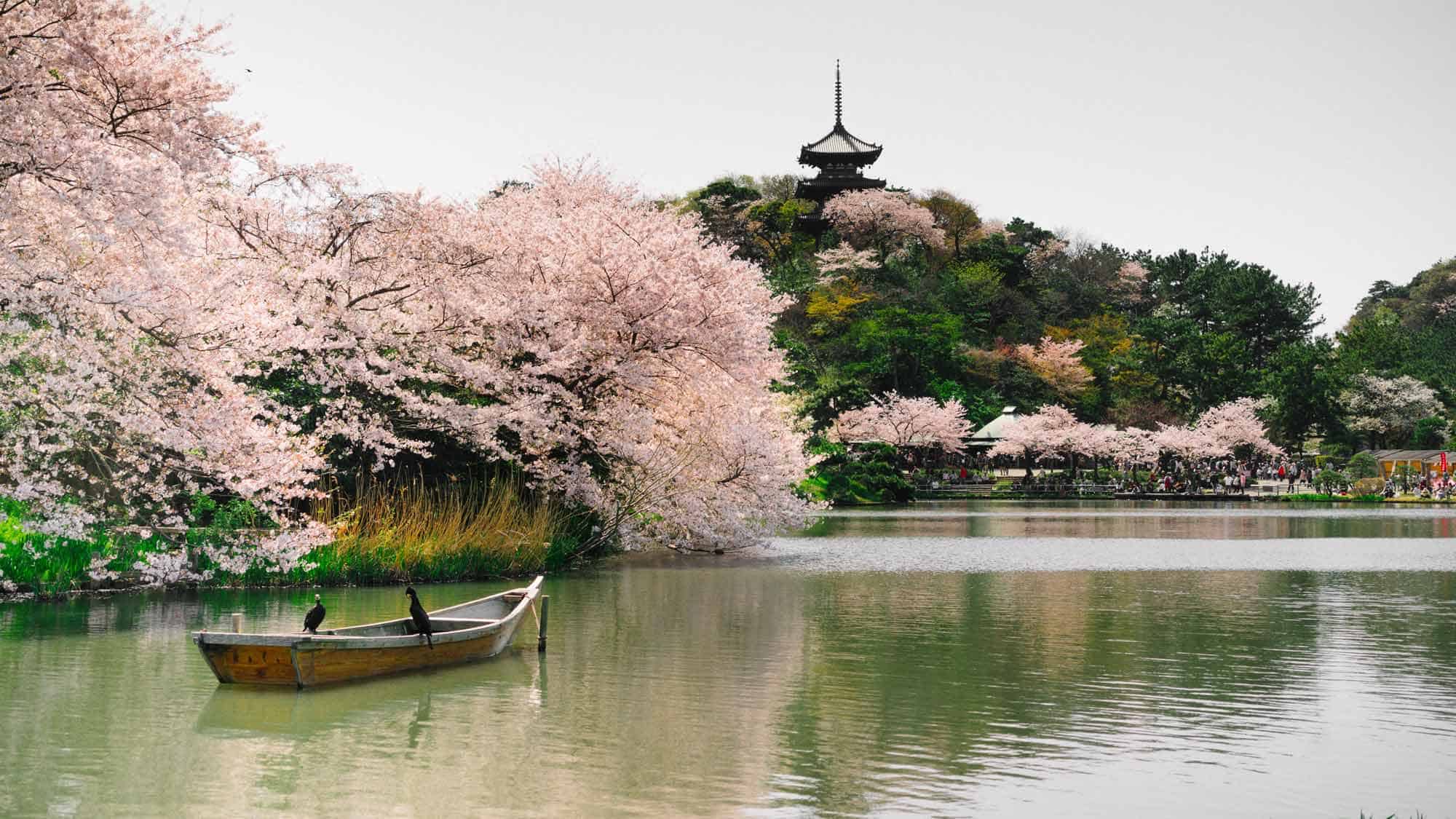
We have all been guilty of relying on humble instant noodles to get us through those late night study sessions, seasons of being broke or a quick meal in under 2 minutes. And yes, in Yokohama you can find an entire museum dedicated to the first CUPNOODLES .
The interactive ramen museum has a number of different exhibitions and attractions and is designed to inspire creativity and curiosity. Learn how to make Chicken ramen by hand in a workshop or create your own original CUPNOODLES by selecting your own flavour combinations and designing the packaging.
The museum pays homage to Momofuku Ando, the inventor of instant noodles who went on to invent CUPNOODLES and Space Ramen and even has a theatre playing a 14-minute CG film of his story.
The ramen museum is equally fun for kids and adults so allow yourself at least a couple of hours (or more if you want to get hands-on in the various workshops) and don’t miss out on this one-of-a-kind experience in Yokohama.
READ MORE: Short on time? Check out our blog post on how to do a Yokohama day trip !
If there’s a place to witness tradition and learn about history, it’s the theatre. The Yokohama Noh Theater is well known for its production of traditional performing arts as well as new works through international collaborative programs.
Noh and Kyogen are both forms of classical drama though Kyogen is traditionally a Japanese comic theatre and Noh offers a musical poetic dance style. Both forms are considered two of the world’s oldest performing arts and are performed in this theatre.
The main stage is also the eighth oldest in the country and when not in use for performances, can be seen freely from the second floor. Rather than seeing an empty stage, you should plan your visit ahead of time and check the performance schedule for tickets to watch a play.
Why not book a private day tour of Yokohama with a local? Check out this great experience on Get Your Guide .
Although Yokohama doesn’t have a high population of Chinese residents, it is home to the largest Chinatown in Japan which was developed quickly after the Yokohama Port opened to foreign trade in 1859.
There are apparently more businesses than actual residents living in the Yokohama Chinatown!
The entrance is decorated with four colourful gates and more can be found within. There’s also a coloured temple in the middle of Yokohama Chinatown that was constructed in 1873 by Chinese residents.
If you’re wondering what to do in Yokohama Chinatown though, don’t pass up the delicious cuisine on offer at the many food stands and restaurants.
While it’s not at all a typical Japanese experience, if you want a break from Japanese food and to see a completely different style of architecture and design, Yokohama Chinatown is well worth a visit.
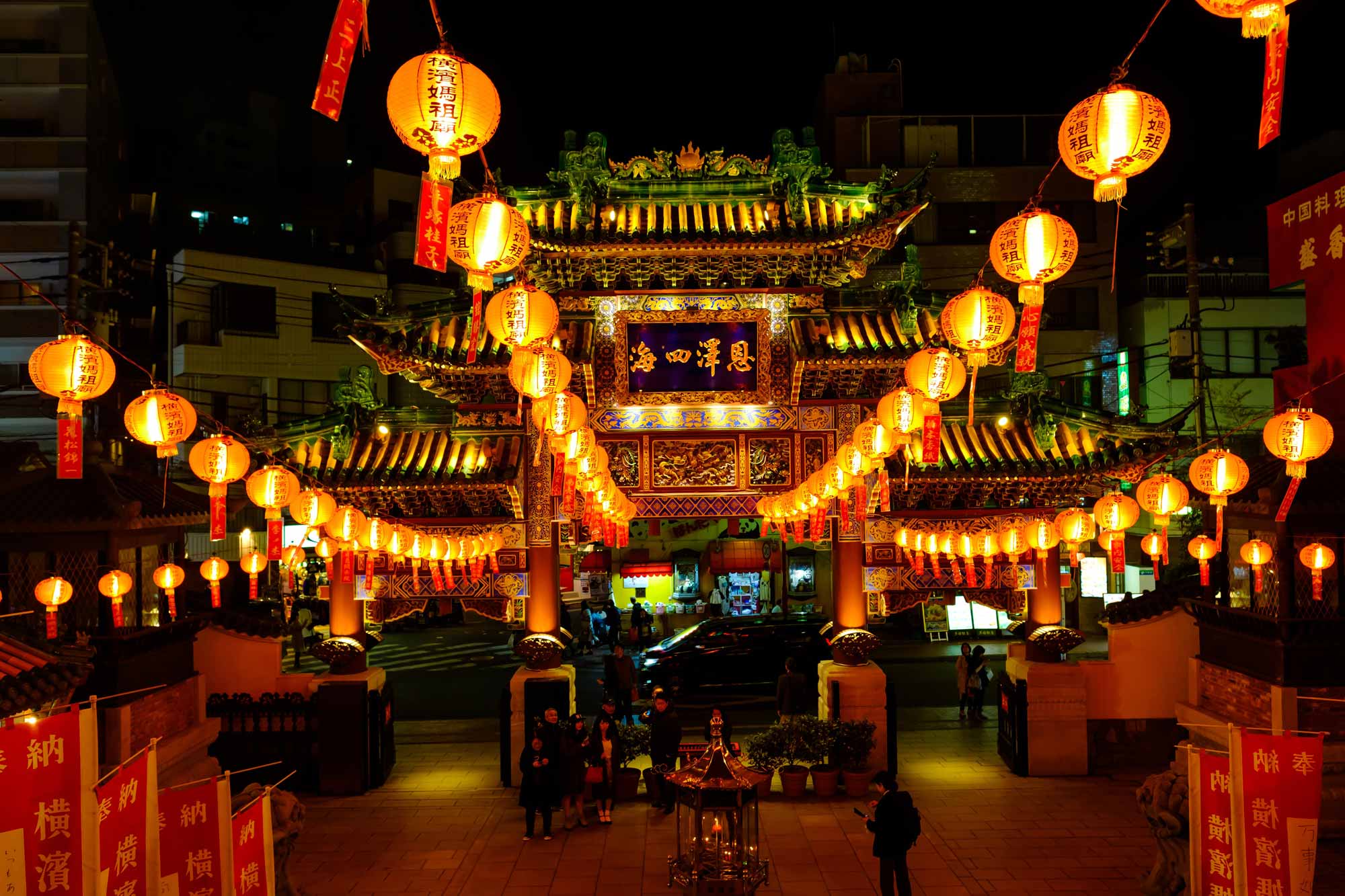
While the Brazilian team captain held the golden cup high, some 2.7 million paper cranes flew down from the sky in Nissan Stadium. This marked the end of the 2002 FIFA World Cup and Japan’s first time hosting (shared with South Korea).
The stadium held four games, including the finals, and has a seating capacity of over 70,000. The stadium offers one hour tours on specific dates for 500 yen. Information on tour dates can be confirmed here.
READ MORE: Check out all these awesome things to do in Tokyo !
Yokohama is home to four professional sports teams – two soccer teams, a baseball team and a basketball team.
If you’re a sports fan or just want to be amongst some passionate locals, get yourself to a baseball or football game.
The professional baseball season starts in late March and finishes in October with games taking place on any day of the week excluding Mondays.
Baseball games are a lot of fun and held in Yokohama Stadium. Spectators can join in on events like dance contests and after the top of the seventh inning.
Other fun happenings at Yokohama Stadium include fans singing the team song and letting rocket balloons fly into the sky with a prayer for the team’s victory.
Tickets can be purchased online for as little as 1,900 yen.
Japan’s professional football league (J.League) commences in March and ends in early December and typically help on Saturday afternoons.
Yokohama has two teams: the Yokohama F. Marinos and Yokohama FC. Tickets start from 2,500 yen and games are played at Nissan Stadium or NIPPATSU Mitsuzawa Football Stadium.
You can also check out the Kawasaki Frontale team, who are also in the Kanagawa prefecture, in case the Yokohama teams are out of town on your visit.
READ MORE: Check out our ultimate list of the best things to do in Japan !
Shin Yokohama Ramen Museum is the world’s first food-themed amusement park and is essentially a two-storey museum devoted to ramen. Yep, that’s another museum dedicated to noodles and we don’t mind at all.
Different regions throughout Japan are famous for different styles of ramen like Tonkotsu ramen, a pork broth, which originated in Fukuoka or Wakayama ramen, made of soy sauce and pork bones which originated in the Kansai region.
The Yokohama ramen specialty is called ie-kei, and consists of thick, straight noodles served in soy flavoured pork broth with various toppings.
If you’re salivating just reading this, get yourself down to the Shin Yokohama Ramen Museum and compare the distinct styles and find out which is your favourite. Consider it an experiment!
Whether or not you’re a big drinker, you can’t come to Japan and not try sake.
Sake is Japan’s most famous native alcohol and is made from fermented rice.
Often referred to as nihonshu, the foundations of good sake are quality rice, clean water, koji mould and yeast.
Since the drink is brewed, not distilled, it isn’t strong like spirits. The alcohol content is usually around 16% and is relatively easy to drink.
While the famous sake-producing regions are Niigata, Kobe and Kyoto, Meishu Center Yokohama is a sake tasting and retail shop that offers over 100 different types of sake with prices around 300-400 yen a glass.
Just a reminder, the legal drinking age in Japan is 20 years old and as always, drink responsibly!
Tip: If you are after something to try sans alcohol, head to the supermarket and ask for amazake which is a naturally sweet fermented rice drink and is considered the ‘non-alcoholic sake’ alternative.
The Yokohama Red Brick Warehouse has been restored and is arguably Yokohama’s most hipster building.
The style of architecture and design for the Yokohama Red Brick Warehouse is unique, making it one of the more special things to see in the city.
It’s made up of two warehouses and is home to a shopping mall, banquet hall, event venues and other unique shops, cafes and restaurants.
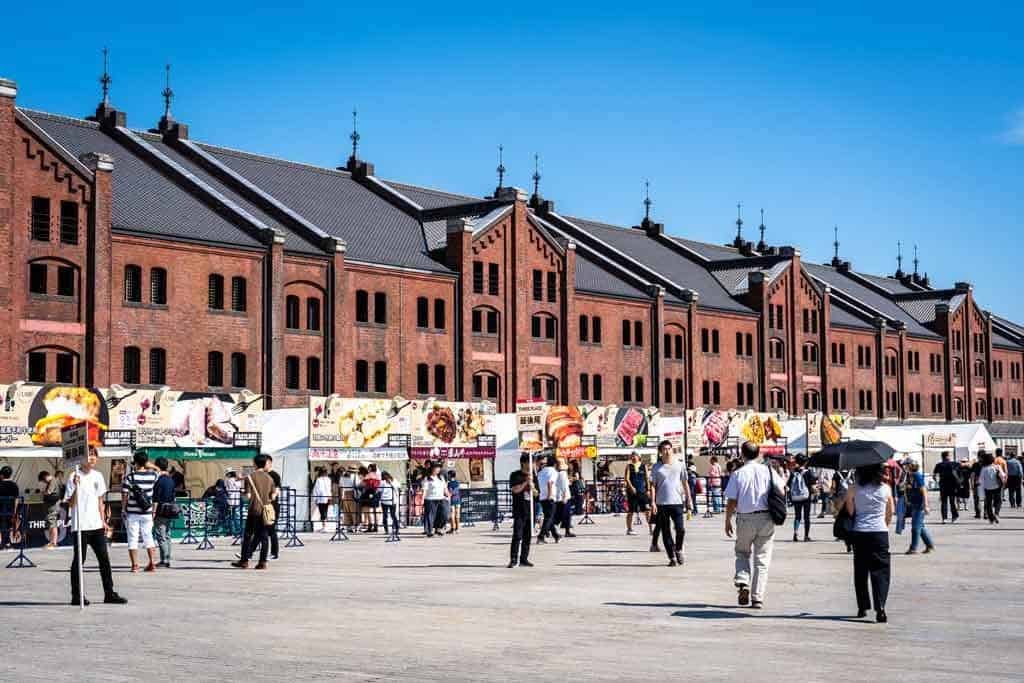
Early jazz music was popularised in Japan thanks to international trips by various jazz bands and Yokohama is the birthplace of jazz in Japan.
If you find yourself here in October, look out for the city’s annual Yokohama Jazz Promenade, one of Japan’s largest jazz music festivals.
Otherwise, one of the most fun things to do in Yokohama at night is to spend an evening going jazz bar hopping throughout the city. Start with Windjammer – the oldest jazz bar in Yokohama with an interior that looks like the inside of a vintage ship. It’s one of the top places to visit in Yokohama!
The bar has been a part of the live music scene since 1972 and has a host band that plays live every evening. There’s also a great food and cocktail selection here.
If you’re already visiting the Red Brick Warehouse, head over to Motion Blue Yokohama, a popular venue for watching live gigs featuring aspiring and big-name musicians.
Since opening its doors in 2002, the bar offers swanky interior styling and is the perfect place for people who have a taste for style, good music and gourmet food.
For a break from Japanese food, head to El Sueno, a cool jazz dining bar with a fine selection of Italian food and wine. El Sueno has a private room available for booking and a jazz hall that seats 30 for live performances. The best part is it doesn’t charge extra for live performances!
READ MORE: Planning a trip? Here’s our guide to the best places to visit in Japan .
The Osanbashi International Passenger Terminal services vessels up to large-scale cruise ships and the pier were reconstructed as part of a project to redevelop the Yokohama Port area.
Designed by London-based architects, all the floors in the public spaces are wooden, making it feel like you are walking on a ship’s deck.
The 24-hour rooftop includes grass-covered areas which are the perfect spot on a spring day for relaxing and winding down.
The pier is especially popular with couples in the evenings because of its views of the surrounding area.
Yokohama Museum of Art opened to the public in 1989 and is one of the largest art institutions in Japan.
The building itself is iconic as it was designed by Kenzo Tange, the Japanese architect who won the 1987 Pritzker Prize for architecture, and allows for an abundance of light to pour through a huge skylight above the courtyard.
The museum is made of seven gallery spaces and focuses on collecting and showcasing modern and contemporary art created since the late 19th century.
Here, you can find works of Dali, Magritte, Milo, Picasso, Cezanne and artists with strong ties to Yokohama from the end of the Edo/Meiji period onward.
Since Yokohama is one of the places in Japan where photography was first introduced, the museum also holds an extensive collection of photographs.
The museum exhibits its collections about three times a year at the “Yokohama Museum of Art Collection Exhibit” and holds themed exhibits about four times a year. It’s a Yokohama must see for all art lovers.
(Currently, the museum is closed for rennovations but is reopening in 2024. Check their website for updates!)
Spend some time exploring the waterfront district known as Minato Mirai. While you’re down at Minato Mirai, head to Yokohama Cosmo World for a ride on the giant Ferris wheel.
While you shouldn’t expect too much from the amusement park that houses Cosmo Clock 21, the Ferris wheel offers a spectacular 360-degree view of the city and the Minato Mirai waterfront.
Originally constructed at a height of 107.5 metres (353 ft), Cosmo Clock 21 held the title of the world’s tallest Ferris wheel for three years until 1992.
In 1999, the Ferris wheel was relocated onto a taller base which increased its overall height to 112.5 metres (369 feet). One rotation of the wheel takes 15 minutes.
Inside the carriage on the wheel, an interactive touchscreen points out major points of interest seen from Cosmo Clock as well as some fun facts. If you’re someone who’s afraid of heights and wants to leap at the chance to challenge yourself, this is for you.
The theme park of Yokohama Cosmo World itself is quite small compared to some of the other famous ones around Japan, but does have charm and offers a few different rides, roller coasters and carnival stalls.
An alternative way to view Yokohama Cosmo World is from the water! Book a dinner cruise around Minato Mirai and enjoy a meal on the water while sailing past the best Yokohama sights, including the glittering Ferris wheel.
READ MORE: Here’s everything you need to know about travelling in Japan.
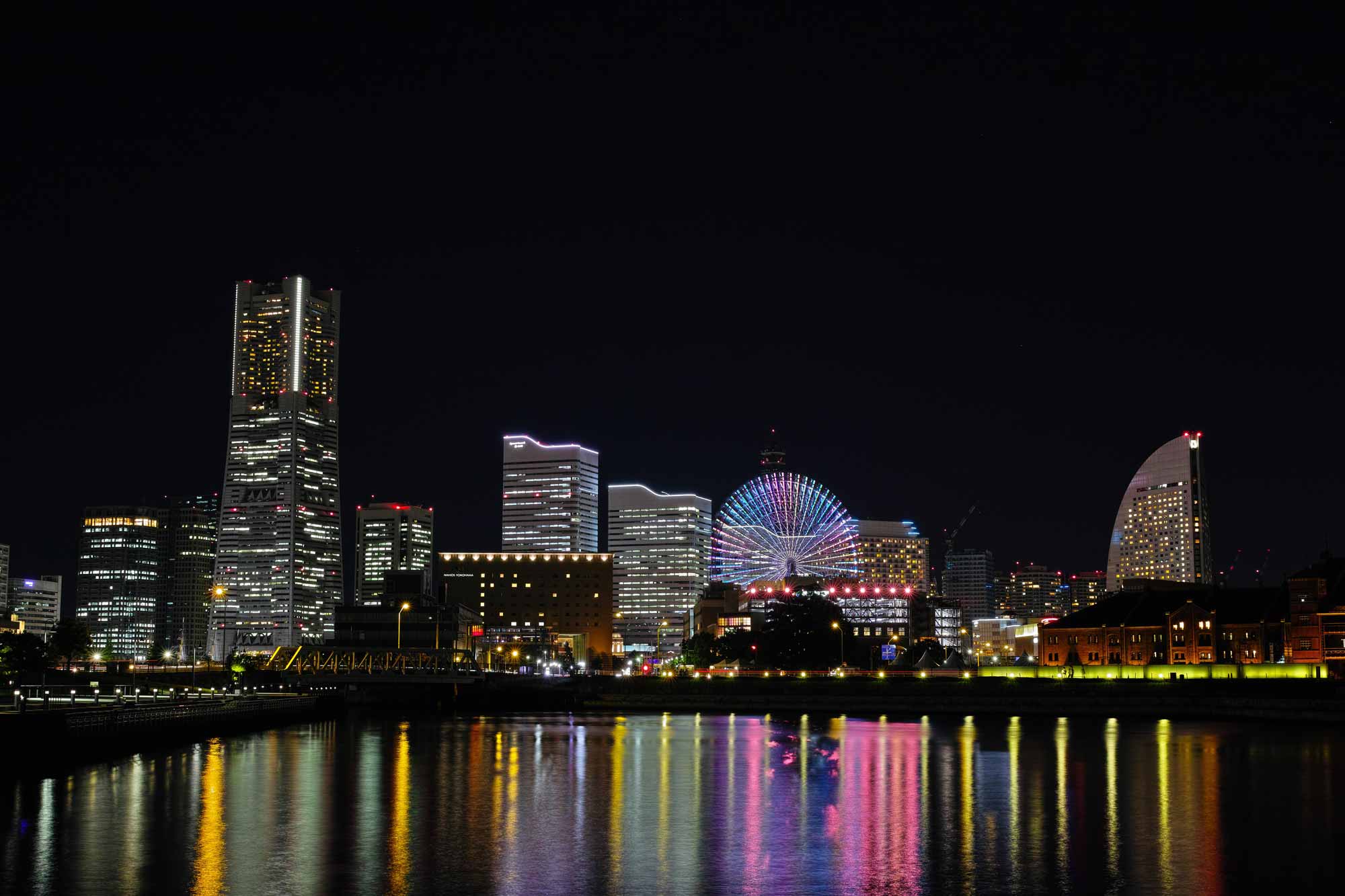
The Kirin Brewery Company is one of Japan’s four leading beer breweries and was founded in Yokohama. Also called the Kirin Yokohama Beer Village, the factory offers free Kirin Ichiban Brewery Tours which takes you on the journey to make Kirin beer.
The tour starts with the base materials of beer, where you can taste the malt, touch the hops and smell its aroma. You’ll then be shown the mashing, fermentation and storage areas of the factory and learn how the flavours are balanced and aromas created.
The tour is around 60 minutes long and finishes with a free tasting where visitors are given a couple of beers to sample and some snacks.
If you’re after one of the cool things to do in Yokohama, this is it! Sky Duck Yokohama is a double-decker bus that travels on a road along Yokohama Bay guiding around some famous towers in the area before returning to the bay to dive in the water.
From here, the bus circles the port slowly so that you can enjoy the Yokohama Bayside Area from the sea.
The tours run for around 50 minutes, depart from Nipponmaru Memorial Park and only in Japanese but you can still enjoy the theatrics and view regardless.
Tours operate a few times daily and reservations can be made online.
A visit to Japan is incomplete without a trip to an onsen. Onsen are natural hot spring baths and have been around since the beginning of recorded history in Japan.
Since Japan is a volcanically active country, there are thousands of hot springs scattered throughout the country.
Onsen are famous for their healing qualities because of the minerals in the water that comes from below the Earth’s crust so it’s a place of rejuvenation and rest.
You can find different types and styles of onsen around the country that include additional spa facilities, saunas or offer indoor and outdoor baths.
If you’re after something simple and minimalist, try Kohokunoyu –where the entrance fee is only 870 yen on weekdays and is open from 10 am to midnight.
If you’re after a little more luxury, try Yokohama Tennen Onsen which is open all the time except from 9am – 10:30am for cleaning.
Onsen usually have separate facilities for men and women (although some are mixed baths). You must be completely naked and clean yourself thoroughly at the bathing stations before entering the baths. Soap, shampoo and conditioner are always provided.
READ MORE: Here’s our ultimate guide to the best things to do in Kyoto !
The Japanese traditional kimono is an essential style for ceremonies like weddings, parties and receptions.
For those who enjoy playing dress up, you can explore the Yokohama Port dressed up in a kimono with your hair done in a uniquely Japanese style called nihon-gami.
Yokohama Haikara offers half or full-day rentals where you are completely styled and can go on a self-guided walking tour dressed up.
Options start from 8,000 yen for a group of two or more and bookings should be made in advance – details are online.
While locals won’t usually take offence to foreigners dressed up in kimonos (it’s something that most people quite enjoy seeing), please remember to be respectful and behave appropriately at all times.
Yokohama has been Japan’s biggest port since the mid-19th century and the city’s maritime history is best learned about in the Yokohama Port Museum.
Your ticket actually gets you two attractions and your visit to the Museum begins aboard the Nippon Maru, a 97 metre-long four-mastered barque sailing ship.
The Nippon Maru was built in 1930 as a training ship for Japanese naval cadets and had a 54-year active lifespan.
During that time, the ship sailed the equivalent of over 45 times around the globe! In 1984, the Nippon Maru as retired and donated to the City of Yokohama.
Expect to spend around half an hour here (or more if you’re particularly interested in life at sea) exploring the various cabins, checking out some old equipment and admiring the soaring masts and rigging.
The exit of the ship leads you to the Yokohama Port Museum with different zones or exhibits. Walk through the History Zone and follow the chronology of how Yokohama developed into Japan’s biggest port into its destruction after World War II.
Afterwards, head to the Rediscovery Zone where a simulator allows you to practice bringing a virtual ship into the harbour. The museum and ship can be enjoyed by children and adults alike and is one of the more fun things to do in Yokohama.
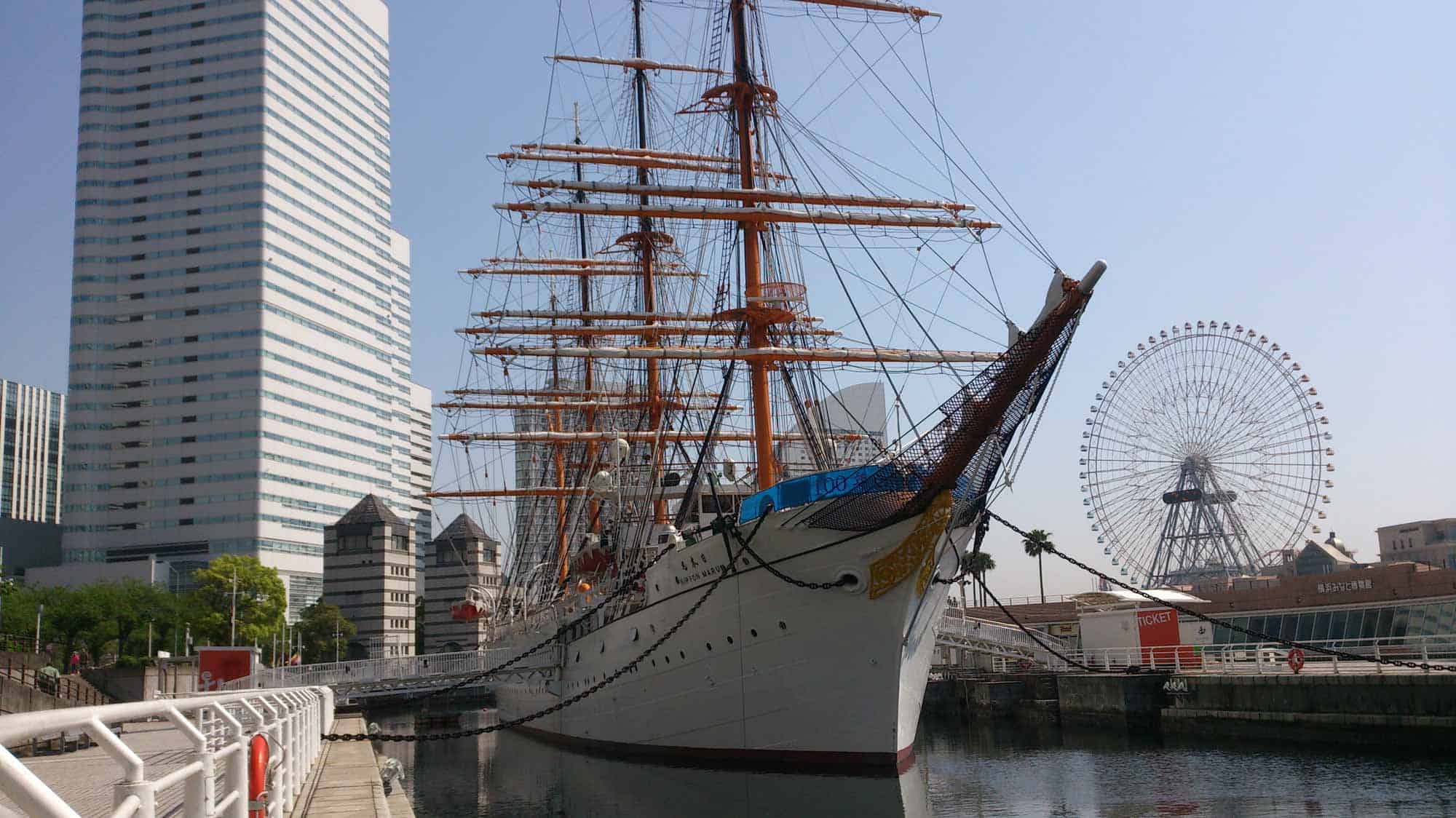
No matter which tower of Tokyo you climb, you will never get to see the whole city. On the contrary, you can head up to the best Yokohama sightseeing location and travel up 69 floors in 40 seconds in the Yokohama Landmark Tower.
At the top of the Landmark Tower, you’ll reach the Sky Garden which offers an unbeatable 360-degree view of the entire city and more.
On a clear day, you can see the sunset over Mt Fuji and watch the city slowly light up. Be sure to hang around and wait until it’s dark as you’ll be rewarded with a pretty special view of Yokohama.
This view should be at the top of your list of what to see in Yokohama!
For some family-friendly head, try one of the more popular Yokohama activities at KOSE Shin Yokohama Skate Center, only a 5-minute walk from Shin Yokohama station.
The centre operates an Olympic size (30m x 60m) ice rink open all year round and there are periodically held figure skating classes that are open to skaters of all levels.
If you’ve ever dreamed of trying figure skating, come and have a shot!
For travellers with children, there Skate Center also holds short-term classes for children during vacation periods.
The centre has a skating goods store, a café and a convenience store. Definitely a great indoor activity if the weather isn’t ideal outside.
READ MORE: Here’s our ultimate guide to the best things to do in Kyoto !
And last, but certainly not least, finish off by enjoying some peace and quiet in Sankei-en Garden. Sankei-en Garden was built in 1906 on a huge 17.5 hectares.
A successful businessman, Sankei Hara, had a fine sense for the arts and brought old buildings from cities such as Kyoto and Kamakura to be transported to the garden.
The 17 structures offer a balance and harmony between nature and Japanese architecture. Hara’s family donated the garden to the City of Yokohama following his death.
The garden suffered wartime damage but was restored and is now one of the National Historic Sites. Sankei-en continues to attract visitors all year-round with its picturesque landscapes and beautiful buildings.
The garden is the most idyllic setting for some quiet moments or time for reflection.
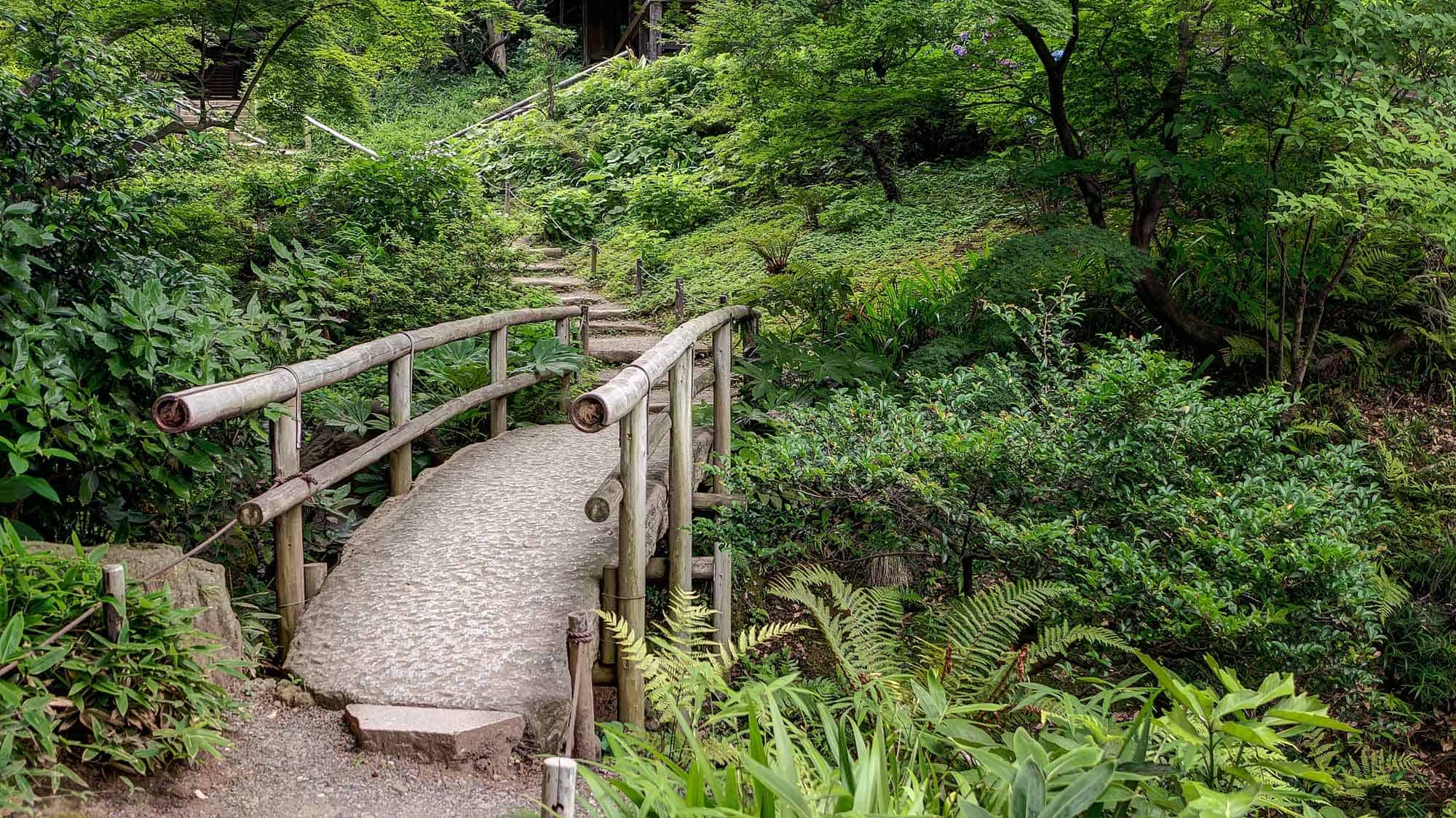
In a city where everything seems to be becoming more modern, it’s wonderful to see a part that is staying true to its heritage.
Around the Rokkakubashi neighbourhood, you’ll find a collection of small stores (mostly owned by locals) that seem to have not changed in years.
Wandering around the area, especially around Nakamise Street, is like stepping back in time and seeing how Japan used to be.
The shopping isn’t set up for tourists. Instead, you’ll find lots of traditional wares, such as grocery stores, real kimono shops and even places selling old Japanese sandals.
The cafe scene is also great, making it a perfect place to check out around lunch time.
Yokohama Travel Guide
In order to help you make the most of your time in the city, we’ve put together this mini Yokohama travel guide, complete with details on where to stay and where to eat.
If you can visit Yokohama in August, you might even be lucky enough to see the Kanagawa Shimbun Fireworks Festival! Make sure you book your accommodation well in advance as this is a busy time in the city.
Best Accommodation – Where to Stay in Yokohama
Accommodation standards in Japan are generally very high so while you can hostels or luxury places in Yokohama, you can expect most (if not all) places to be clean and offer free wifi.
If you’re wondering where to stay in Yokohama that provides everything you need that’s budget-friendly, we recommend staying at Guesthouse FUTARENO as it offers dorm or private room options.
Budget options in Yokohama City are more expensive than the rest of South-East Asia but have hotel-quality standards.
To enjoy all the activities in Yokohama, you should stay at least a couple of nights.
Guesthouse FUTARENO is a traditional Japanese-style wooden hostel with very calm and cozy vibes.
The hostel is a 7-minute walk from two train stations and is centrally located for you to enjoy various activities in Yokohama and Minato Mirai.
There’s also a park next door that offers beautiful views of Yokohama City.
The hostel itself is quite chic, with wooden bunks and very comfortable beds. There’s a small kitchen for guests to use and even a bath (extra fee) to soak your body after a long day.
Staff are friendly, helpful and welcoming so this is the ideal place to start your trip in Japan.
For couples wanting a nice budget hotel, Sotetsue Fresa Inn provides the ideal mix of value, comfort, convenience and charm. The hostel is centrally located so a 20-minute walk will get you to most of the fun places in Yokohama.
The breakfast here is delicious and offers an awesome spread of Japanese, Chinese and Western cuisines so there’s plenty of variety to keep it interesting.
Rooms aren’t very spacious here (as is the case for most places in Japan) but are comfortable and have air-conditioning, a refrigerator and desk.
A classic-modern designed hotel, here you’ll have a stunning panoramic view of Yokohama. Located right by Yamishta Park, you’ll have a view of the sea and the ginko trees, the ideal combo for stunning photos in autumn.
The hotel is only a few minutes away from public transport and a short walk to the tourist spots of Yokohama Chinatown.
There’s a bit of an olde feel here with chandeliers, big foyers and spacious rooms, a classic design nod to its sister city, Vancouver.
Rooms are fairly spacious for Japan and you have a choice between king size bed or a twin. if you want the largest rooms though, ask for the twin rooms.
For the ultimate Yokohama experience, stay in the infamous Yokohama Landmark Tower. Nothing can beat a central location like this hotel that occupies the 52nd to the 67th floor, giving you the best seats in the house when it comes to views over the city.
All the usual hotel amenities are here but are of awesome quality. There’s a pool, spa, gym and of course free wifi.
Start your mornings off with breakfast on the 70th floor at the Sky Lounge before diving right into the many activities in Yokohama.
For dinner, if you don’t want to travel out, there are some classing dining options here with eight different restaurants in the building that suit any occasion whether it’s business or a date.
Yokohama Royal Park Hotel is a great value option given its high luxury standards and breathtaking view.
When it comes to food, the Japanese know how to do it. You could eat at almost any restaurant in Yokohama and be impressed. If you’re new to Japanese cuisine, Yokohama is a fantastic place to introduce you to some classic dishes.
Try tonkotsu, a panko crumbed pork dish served with rice at Katsuretsu An. This place just does tonkotsu so you know it’s going to do it well.
For traditional Yokohama style Sukiyaki, don’t pass up Araiya Bankokubashi which has an English menu, helpful staff and delicious food.
Splash out at one of the top-rated restaurants in Yokohama at Shikitei , which offers fine dining on the 68th floor of a skyscraper.
DISCLAIMER: Some of the links in this article are affiliate links, which means if you book accommodation, tours or buy a product, we will receive a small commission at no extra cost to you. These commissions help us keep creating more free travel content to help people plan their holidays and adventures. We only recommend the best accommodations, tours and products that ourselves or our fantastic editorial team have personally experienced, and regularly review these. Thanks for your support, kind friend!
Amanda Tran
Hi, We’re Alesha and Jarryd!

We’ve been traveling the world together since 2008, searching for the planet’s best destinations and adventures.
Love Travel?
Sign up for our free weekly newsletter for the best travel tips, ideas and deals!
We respect your privacy. Unsubscribe at any time.
READ MORE...
The Perfect 3 Days in Tokyo Itinerary
The Best Day Trips from Every City in Japan [2024]
18 Amazing Things to Do in Kyoto at Night (2024 Guide)
Related Posts
33 epic things to do in japan [2024 ultimate guide], 25 awesome things to do in tokyo, japan, experiencing a traditional ryokan in murakami, japan, 19 best things to do in osaka, japan [2024 edition], leave a comment cancel reply.
Save my name, email, and website in this browser for the next time I comment.
- Today's deals
- Search travel guides

Yokohama Featured Articles
Yokohama guides.
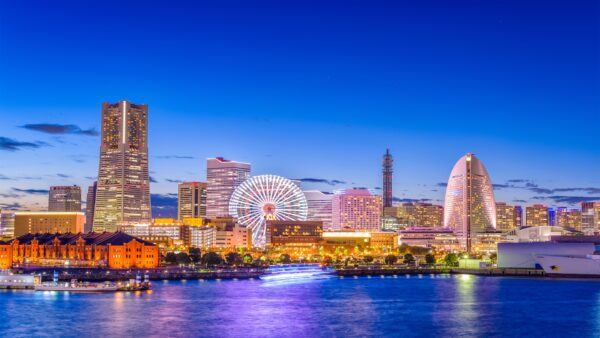
Current language
All languages.

- South Africa
- Afghanistan
- North Korea
- Adventure + Outdoors
- Amusement Parks
- Backpacking Trips
- Boating + Cruises
- Budget Travel
- Bus + Train Travel
- Coasts + Islands
- Country Trips
- Fall Vacations
- Family Vacations
- Green Travel
- Heritage + History
- Honeymoons + Romance
- Inspiration + Guide
- Landmarks + Attractions
- LGBT Travel
- Markets + Bazaars
- National Parks + Reserves
- Nature + Wildlife
- Parks + Gardens
- Pets + Animals
- Photography
- Airlines + Airports
- Budgeting + Currency
- Business Travel
- Celebrity Travel
- Customs + Immigration
- Deals + Rewards
- Family Travel
- Hotels + Resorts
- Luggage + Packing Tips
- Offbeat News
- Photography Tips
- Responsible Travel
- Solo Travel
- Tech + Gear
- Travel Etiquette
- Travel Warnings
- Bars + Clubs
- Celebrity Chefs
- Restaurants + Cafés
- Wine + Vineyards
- Beach Hotels
- Boutique Hotels
- Hotel Openings
- Hotel Reviews
- Luxury Hotels
- Mountain + Ski Resorts
- Spa Resorts
- Vacation Rentals
- Asia Cruises
- European Cruises
- Festivals + Events
- Museums + Galleries
- Style + Design
- Travel’s Best
- Hotel with Agoda.com
- Hotel with Booking.com

Must eat in Hong Kong — 7+ must eat & must…

Coron itinerary 5 days — What to do & how to…
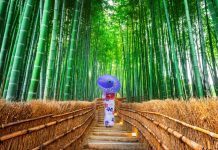
Arashiyama travel blog — The fullest Arashiyama travel guide with top…

India trip tips — 9+ things to know before going to…
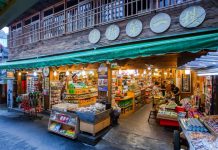
Explore Fenqihu old street — What to do in Fenqihu in…
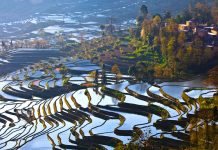
Where to go in Kunming? — 15+ top Kunming attractions &…

All about tips in Nepal — How much to tip in…

Cambodia travel tips — 15+ what to know & things to…

When is the best time to visit Kyoto? — The best,…

Must eat in Georgetown — 10+ famous, must-eat & best street…

Must eat in Melaka — 10+ famous Malacca street food &…

Hong Kong Soya sauce Chicken Rice and Noodles — The first…

Top hotels in Siem Reap — 8+ best places to stay…

Top hotels in shanghai — 15+ best hotels in Shanghai

Top hotels in Malacca — 10+ good & best hotels in…

Top places to stay in Bali — Top 10 best areas…

10 must-know things for your best first time European river cruise

Top 3 best luxury cruises in Halong Bay, Vietnam

Cherry blossom festival Korea 2024 — Top 5 cherry blossom festivals…

Ghibli museum blog — The fullest Ghibli museum guide for first-timers

Kyoto festival — Top 10 best events & most famous festivals…

National Palace Museum Taipei blog — What to see in National…

Japanese waterfall — Top 10 most beautiful waterfalls in Japan in…

19+ most beautiful towns in Europe every tourist need to visit…

Georgia travel photos — 20+ captivating photos show Georgia is heaven…

Explore Damnoen Floating Market — The oldest floating market of Thailand

Visiting Fenghuang Ancient Town — One of the most charming ancient…


Mekong Delta travel blog — Beyond rivers of Southwestern Vietnam

14 reasons why you should travel when you are young

Shigaraki Tanuki – An animal symbol of good luck in Japan

Living in the charms of cave houses in Andalucia, Southern Spain

20+ jaw-dropping tiny homes around the world
Yokohama travel blog — the fullest yokohama travel guide & suggested yokohama itinerary for 2 days for first-timers.
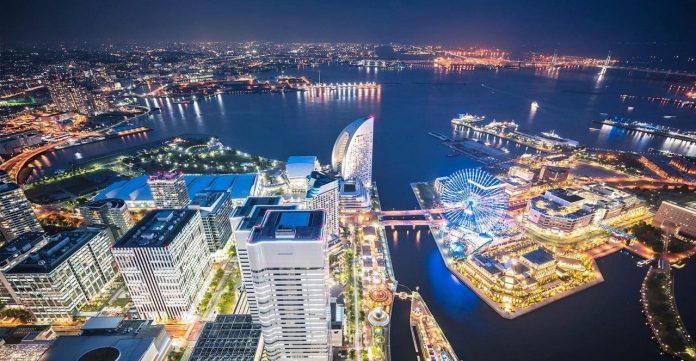
As the second largest city in Japan, Yokohama attracts visitors with its vibrant modernity in its own way. It has the world’s largest ferris wheel, the famous Hakkejima ocean park, the vibrant Chinatown, the extremely unique Ramen museum, … and many other interesting places. Yokohama is also known as the “city of dreams”. So, what to do and how to visit Yokohama for the first-time? Let’s check out our Yokohama travel blog (Yokohama blog) with the fullest Yokohama travel guide (Yokohama guide, Yokohama city guide) as well as Yokohama travel itinerary 2 days from how to get there, where to stay, best time and best places to visit, top things to do to find out the answer!
Arashiyama travel blog — The fullest Arashiyama travel guide with top things to do in Arashiyama
- Tokyo best parks — 10+ best & most beautiful parks in tokyo
- Yamanashi blog — The Yamanashi travel guide & top things to do in Yamanashi
- When is the best time to visit Kyoto? — The best, worst, affordable & best season to visit Kyoto
- When is the best time to visit Japan? — The best, worst, cheapest, affordable & best season to travel to Japan
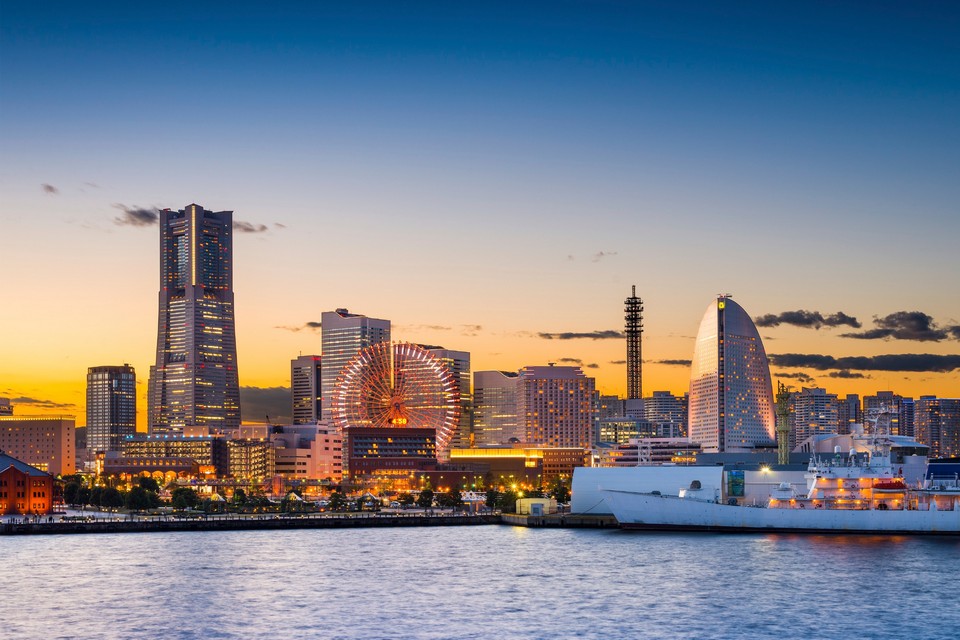
5 reasons to visit Yokohama
- Having the chance to experience the extremely vibrant nightlife.
- Experience rich cuisine with many super delicious Japanese dishes.
- Exploring many famous attractions that you should not miss such as: Minato Mirai, Chinatown, Sky Garden at Landmark Yokohama Tower, Yamashita Park, Sankeien Garden, Ramen Noodles Museum…
- A shopping paradise with many modern shopping malls.
- Be immersed yourself in the extremely bustling Chinatown.
Yokohama travel blog: Overview of Yokohama
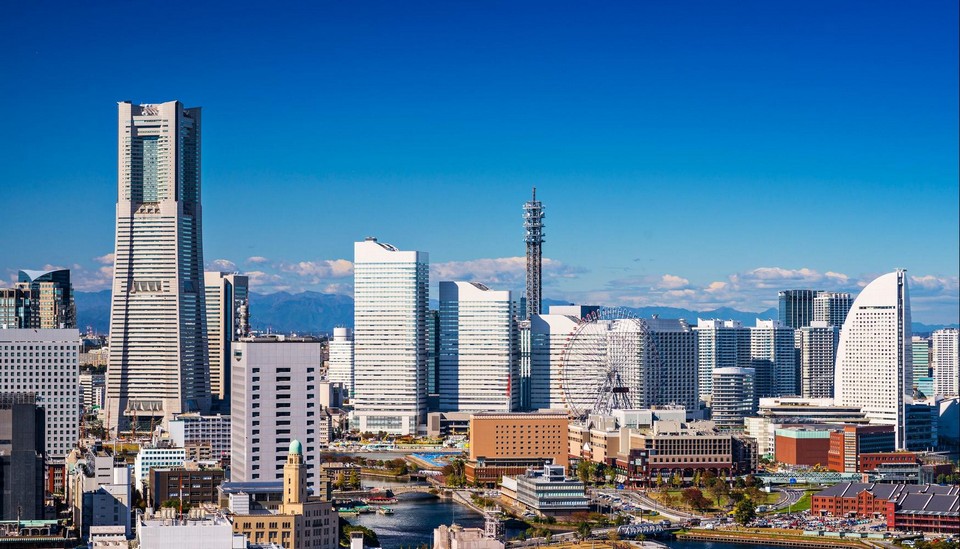
Less than an hour (27.77 km) from Tokyo by train, Yokohama is an oasis, a city full of vitality, blending with traditional and modern Japanese culture, and many unique and interesting places to explore with rich and diverse cuisine culture. Yokohama is the capital city of Kanagawa Prefecture with a population near 4 million with an area of 437.4 km² and a thriving expat community. Yokohama will bring you full of surprises. You can walk along the harbor in the morning and explore the strange museum Cups Noodle Museum. Or watch great art shows each night and playing hard at the live jazz clubs.

As the capital of Kanagawa Prefecture, Yokohama is one of the seaports opened for foreign trade since 1859 after the period of Japanese isolation. From a small fishing village, Yokohama has grown rapidly to become the second largest city in Japan. As it is only about 30 minutes by train from Tokyo, Yokohama has become a popular destination for day trips to avoid the crowds of the capital.
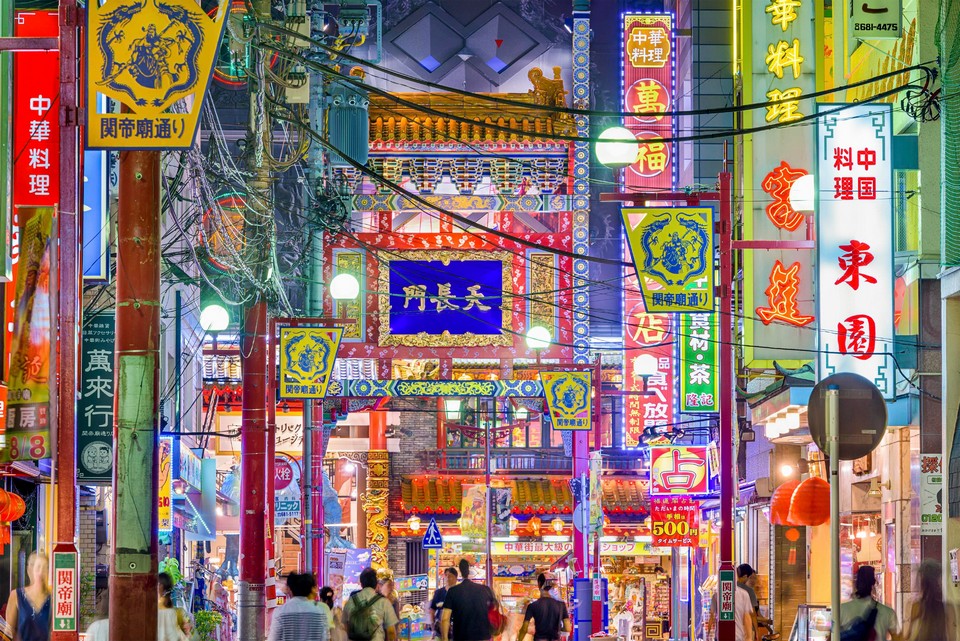
Yokohama Districts
Kannai district includes the historic river Ooka River and many famous tourist spots such as Marine Tower building, Osanbashi Pier. Besides, it is also an extremely ideal sunset viewing spot. Minato Mirai District 21, the most developed and most modern district in Osaka. There are plenty of shopping and dining options including the huge Landmark Plaza / Queen’s Square complex. Yamate and Motomachi are two adjacent districts along the hillside. This is where you’ll find great shopping opportunities amidst the beautiful scenery from the harbor.
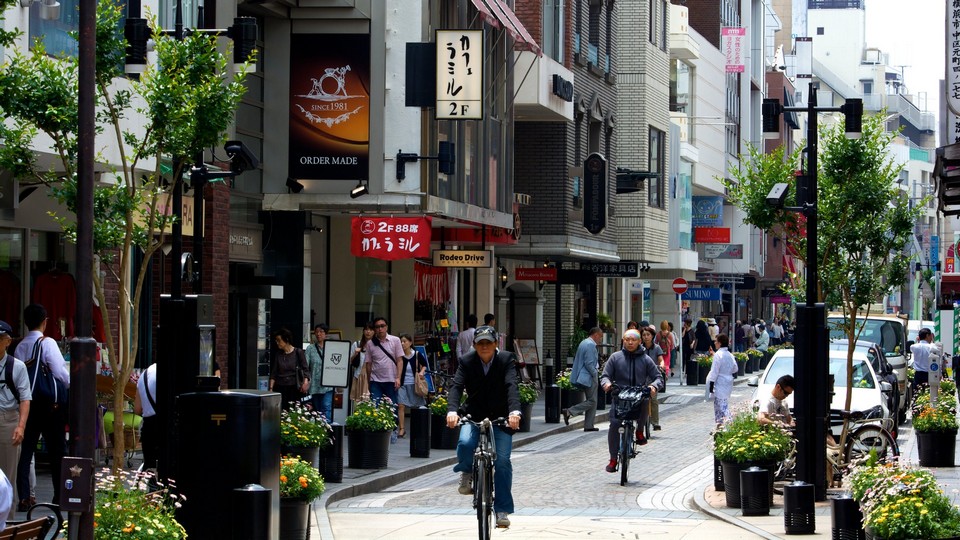
Yokohama blog: When to visit?
The weather in Yokohama is warm all year round. So, you can come here at anytime of year. From March to November, Yokohama daytime temperatures are around 18-30 degrees Celsius, which is the time when the city welcomes the most visitors.
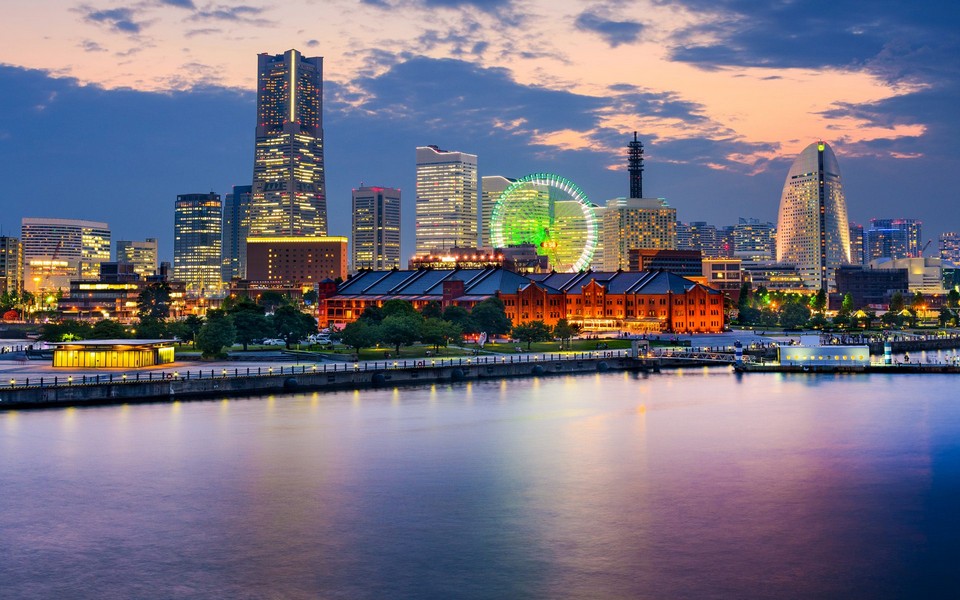
Yokohama travel blog: How to get?
The nearest international airports are located in Tokyo: Haneda and Narita but most international tourists fly to Narita Airport (NRT) and then travel to Yokohama, about 97km away. You can take the Narita Express train to Yokohama for a half-hour ride, costing around 4,380 yen/one-way.
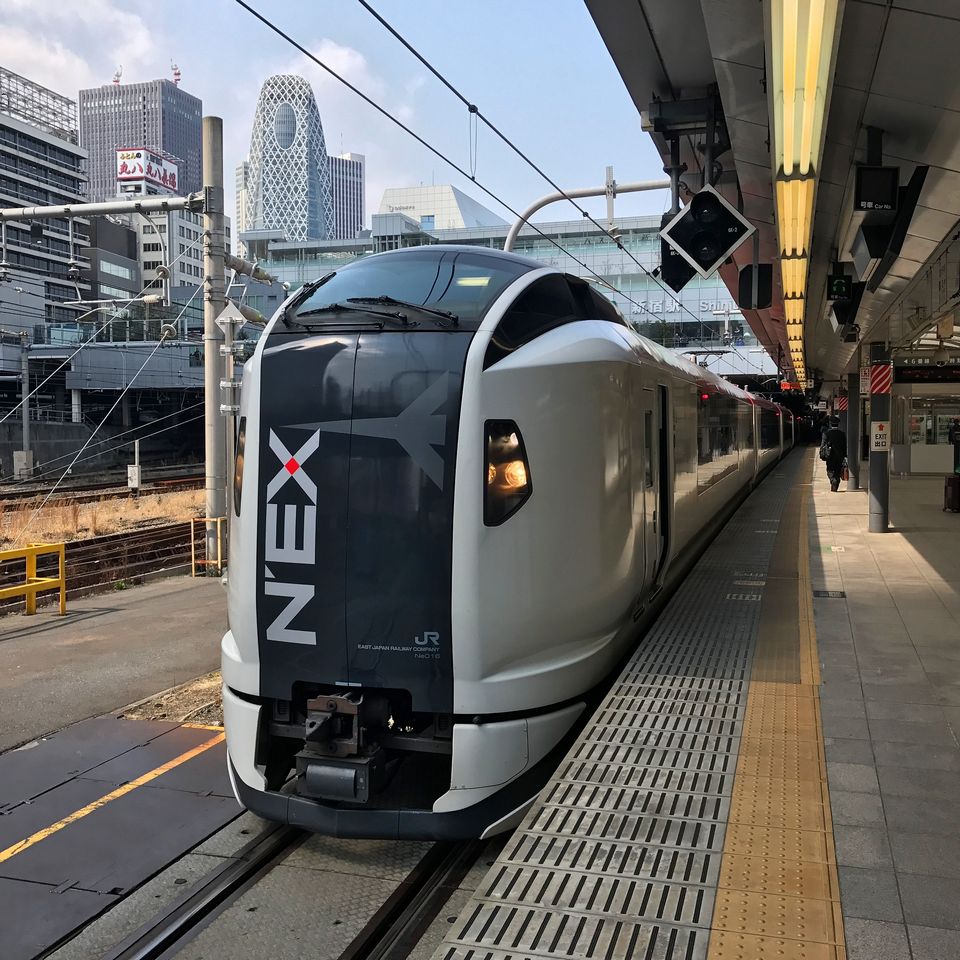
There are many train lines from Tokyo to Yokohama and vice versa and other provinces to Yokohama. In which some popular lines are Tokyu Toyoko Line and JR Keihin-Tohoku Line, JR Tokaido Line, JR Shonan Shinjuku Line, JR Tokaido Shinkansen. There are many lines departing from various major stations around Tokyo that run directly to Yokohama Station, and from there, you can reach most of the main attractions (by walking or by a 10-minute train ride).
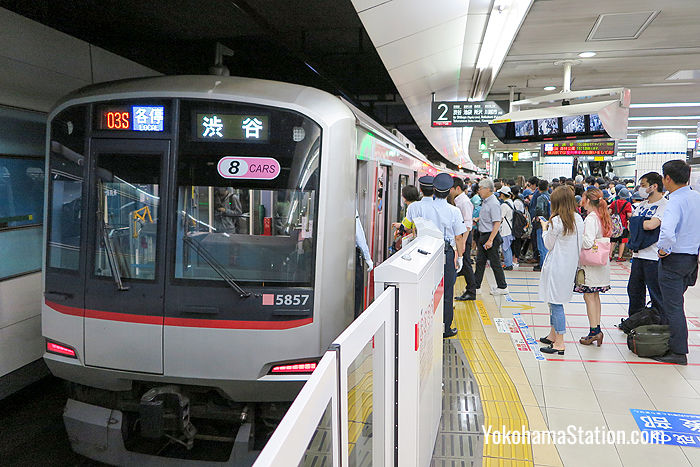
JR Pass for Whole Japan (7, 14, or 21 Days)
- From Shibuya Station: Take the Tokyu-Toyoko Line (towards Motomachi-Chukagai) straight to Yokohama Station (25 minutes) for 280 yen.
- From Tokyo Station: Take the JR Shonan Shinjuku Line (towards Odawara) straight to Yokohama Station (30 minutes) for 480 yen.
- From Tokyo Station: Take the JR Keihin-Tohoku Line (towards Ofuna) straight to Yokohama Station (40 minutes) for 570 yen.
- From Shibuya Station: Take the JR Shonan Shinjuku Line (towards Odawara) straight to Yokohama Station (30 minutes) for 570 yen.
- From Tokyo Station: Take the JR Tokaido Line straight to Yokohama Station (25 minutes) for 480 yen.
There is no direct bus from Tokyo Station to Yokohama. However, there are transport services departing from Tokyo Station (at Yaesu North Exit) and arriving at Yokohama Doll Museum via Haneda Airport (at Terminal 1 Station). This journey, including transfers, takes about 1 hour and 24 minutes.
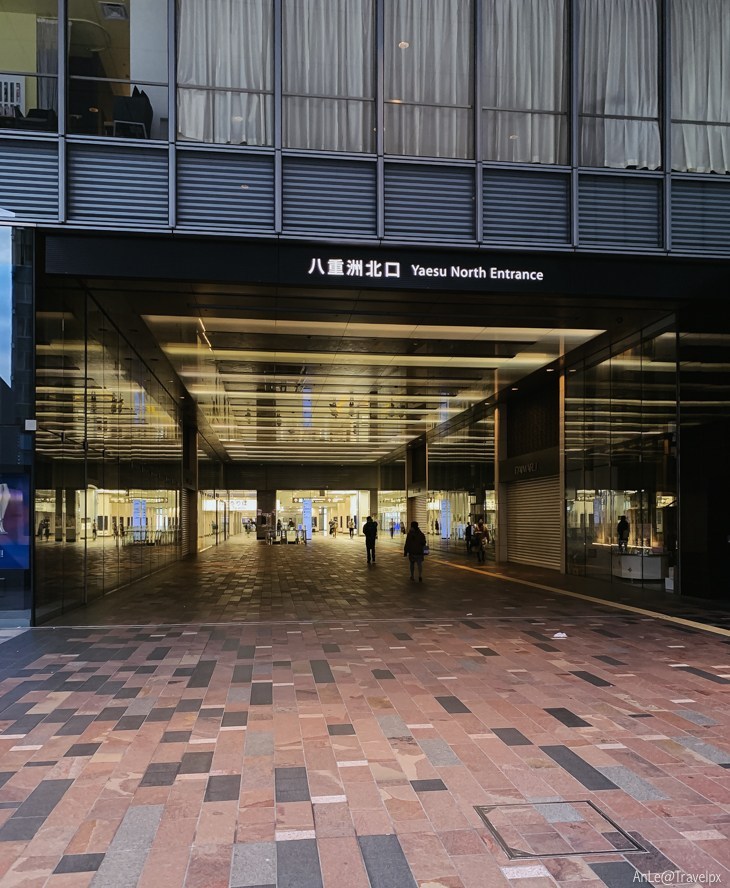
Yokohama travel guide: Getting around Yokohama
Public transport.
There are two subway lines in Yokohama are Minatomirai Line or JR East Line, with an unlimited travel day pass (one day ticket) costs 520 yen/day. And Minato Burari Line or MM21 with one day pass costs 500 yen/day.
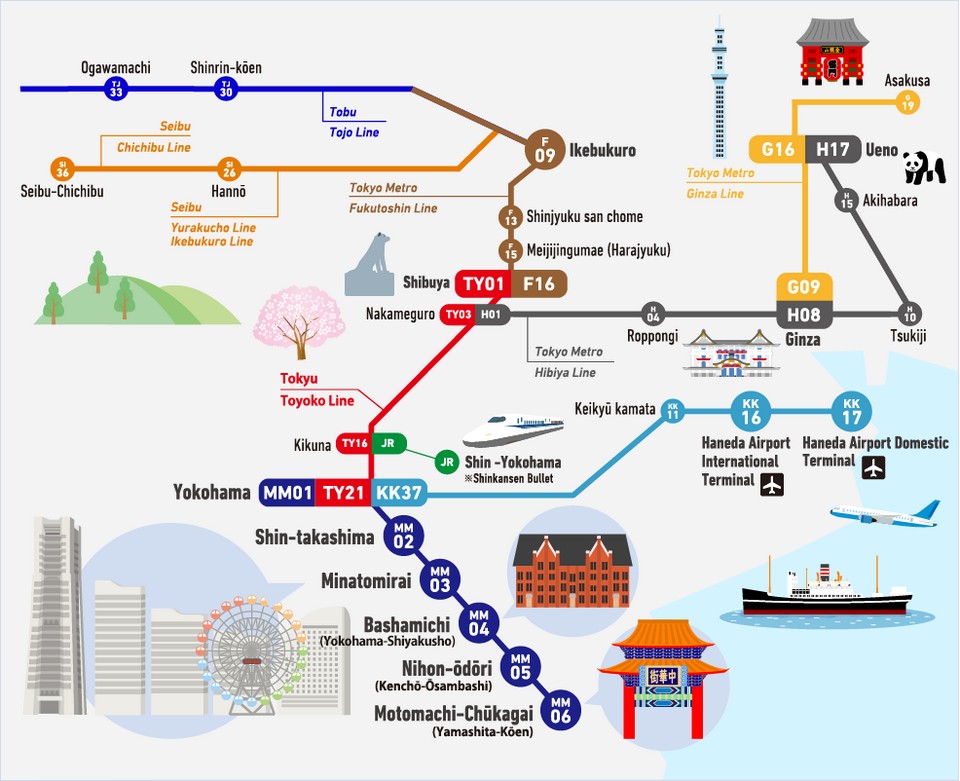
Bus & taxi
One of the best way to explore Yokohama is by bus. You can buy Yokohama Municipal Bus One-day Pass for convenient traveling with prices: Adult 600 yen / Child 300 yen. See details here .
Taxis can be found anywhere in the city, starting at 730 yen, which increases to 310 yen for every 1km.
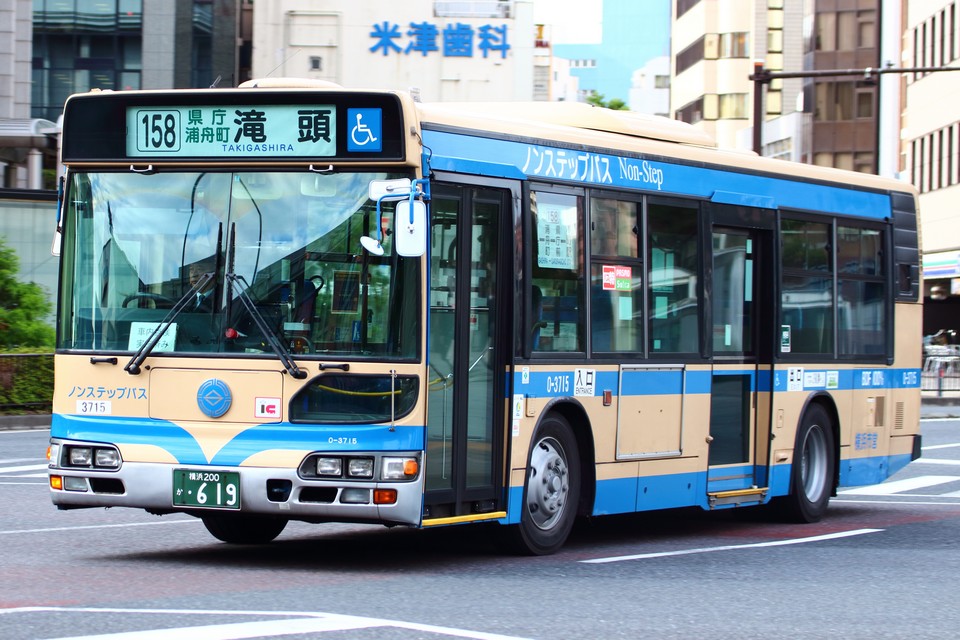
- Yokohama Enjoy Pass
There are many one-day types of tickets, you can refer to prices and types here .
Yokohama travel blog: Where to go and top things to do in Yokohama
The sankeien garden.
The garden once belonged to a wealthy silk merchant named Tomitaro Hara and has impressed visitors since 1906. Over the years, it has become a part of Japan’s collection of historical relics. There is even a three-story pagoda quite similar the golden temple of Kinkaku-ji that originated in Kyoto in the 1400s. The special landscape with bridges, small streams, small waterfalls, bamboo forests and ponds will takes you back into Japanese ancient space.
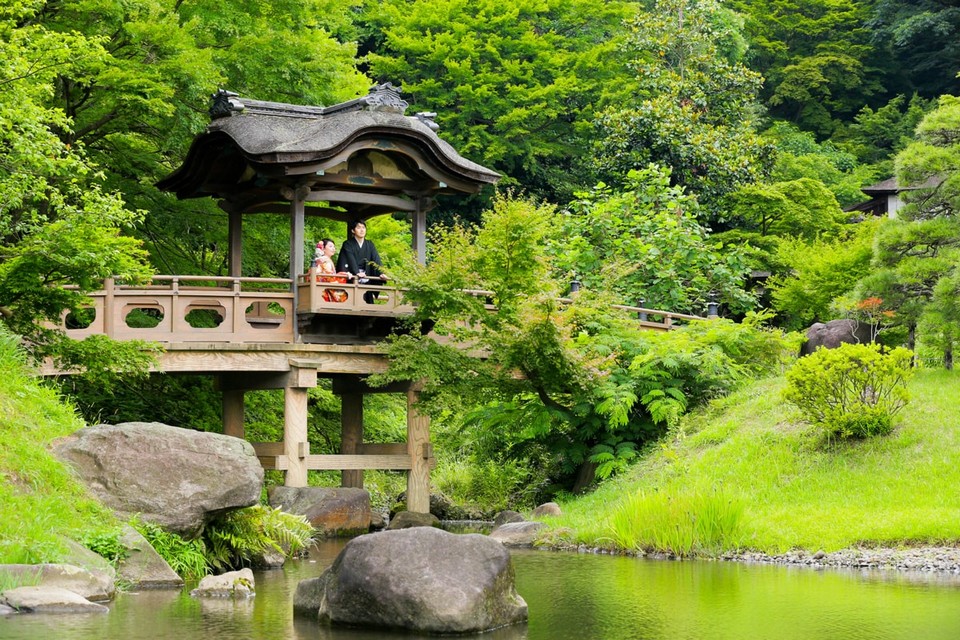
Address: 58-1 Honmokusannotani, Naka Ward, Yokohama, Kanagawa 231-0824, Japan Hours: 9AM–5PM
Shin-Yokohama Ramen Museum
Yokohama is the first place to have a ramen museum in the world, in the Shin-Yokohama Ramen Museum has nine different ramen restaurants, each serving a unique ramen representing different regions in Japan. Get ready to go back in time as you learn about the history of ramen through a 1958 re-enactment village of Tokyo, packed with shops, alleyways, vendors and performers of the past. The main attraction, of course, is many delicious types of ramen that will make you satisfied, all ramen here come along with ‘mini’ sizes help you taste as much as ramen possible.
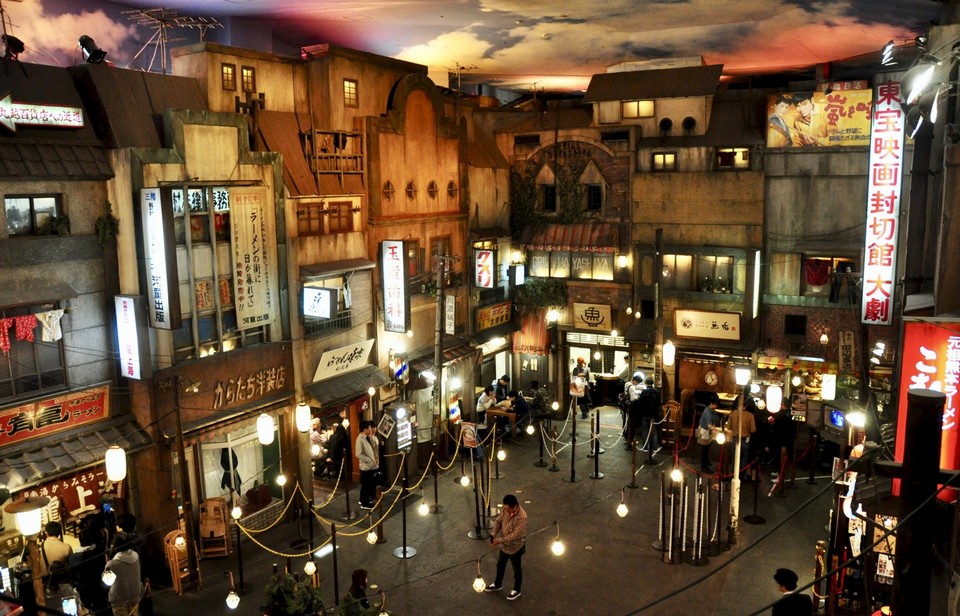
Address: 2 Chome-14-21 Shinyokohama, Kohoku Ward, Yokohama, Kanagawa 222-0033, Japan Hours: 11AM–8:30PM
Hakkeijima Sea Paradise
The many underwater tunnels, dolphin and sea lion shows and rollercoasters make Hakkeijima Sea Paradise as one of the most visited aquariums in Japan. More than 120,000 marine creatures live in this aquatic museum.
Hakkeijima Sea Paradise is an amusement park located in Hakkeijima in Yokohama city. Inside this complex is fully equipped with games, restaurants, shopping stores, hotels … There are many interesting things to have fun all day, so it is a suitable place for families, couples and groups of friends.
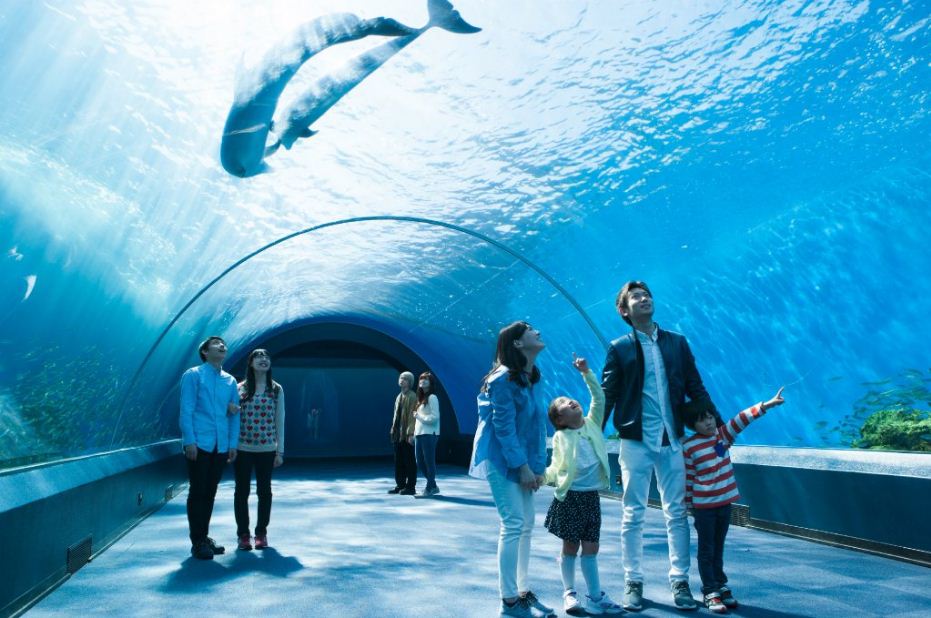
Address: Hakkeijima, Kanazawa-Ku, Yokohama 236-0006 tinh Kanagawa Hours: 10AM–5PM
Red Brick Warehouse
It is one of the hotspots attracting the most tourists in Yokohama. In the 1920s, this place was used as a Cargo Tracking Area in Yokohama Bay. Both red brick buildings have now been converted into big event places, and many shopping malls attract large numbers of visitors every day, especially during festivals.
More seasonal events will be held at the event hall, while the adjacent shopping mall features upscale boutiques, unique cafes and open-style restaurants. Or you can also go to the 3rd floor of the building for a view.
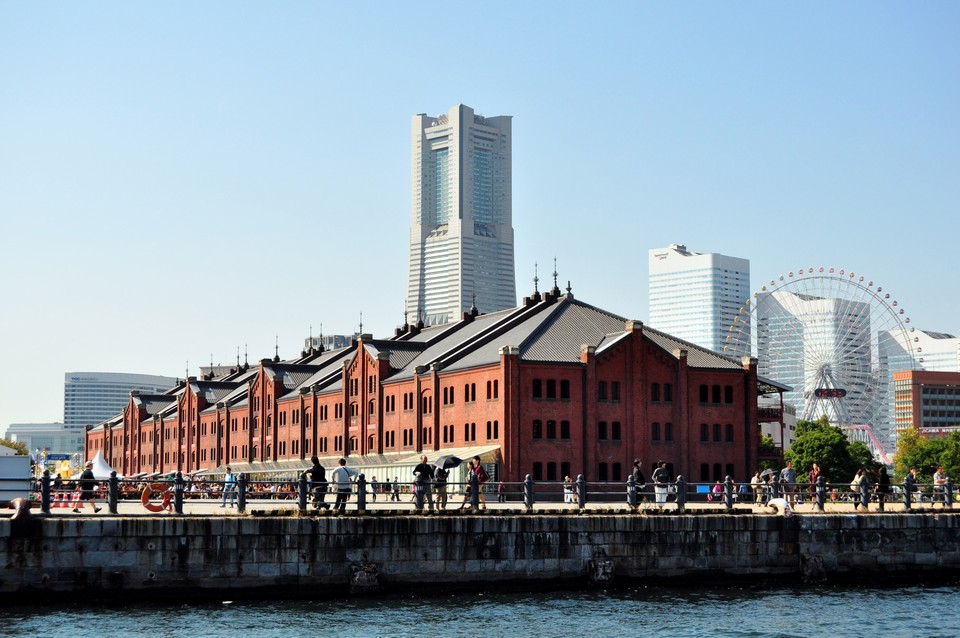
Address: 1 Chome-1 Shinko, Naka Ward, Yokohama, Kanagawa 231-0001, Japan Hours: 11AM–8PM
Hara Model Railway Museum
This Railway Model Museum is very unique and different from other railway museums in the world. The museum’s founder is Nobuto Hara, a Japanese train enthusiast and has collected more than 6,000 train cars, 1,000 of which are on display at the museum.
The museum holds numerous railroad collections as well as intricate and highly-appreciated models of trains. You also can see car models from Japan, Europe, America and many other countries around the world.
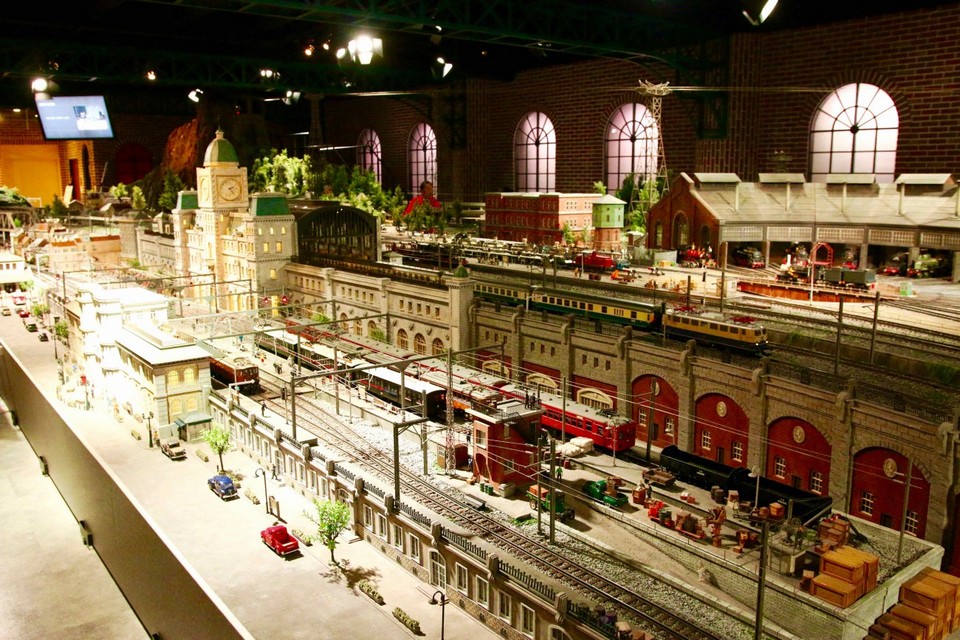
Address: Japan, 〒220-0011 Kanagawa, Yokohama, Nishi Ward, Takashima, 1 Chome−1−2, YOKOHAMA MITSUI BUILDING, 2F Hours: 10AM–5PM/Tuesday: Closed
Kirin Brewery Yokohama Factory
At Kirin Brewery, you can join an interesting guided tour of the brewery process (English documents are available, but no English tour guide available). At the end of the tour, the factory also offers complimentary snacks and drinks including Kirin beer for guests can choose from.
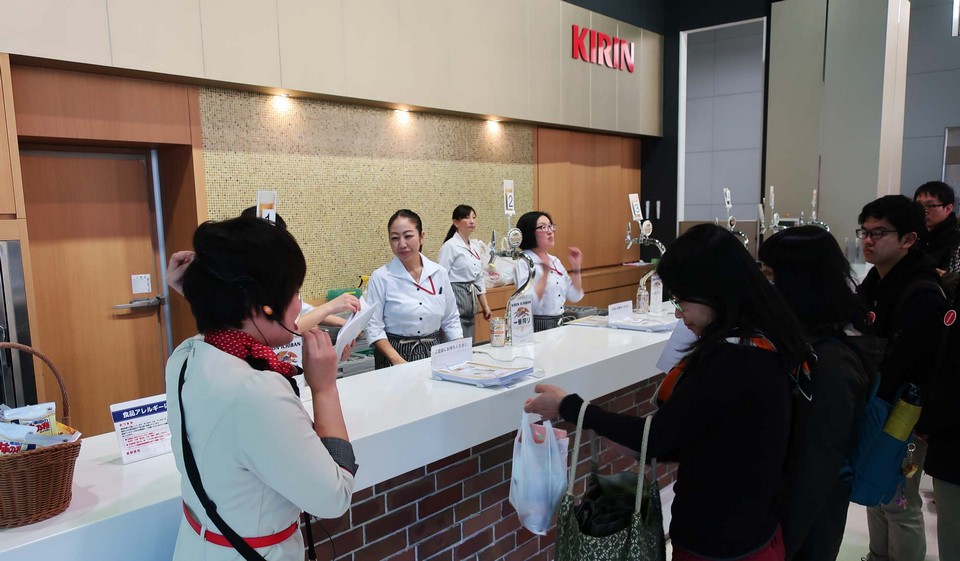
Address: 1 Chome-17-1 Namamugi, Tsurumi Ward, Yokohama, Kanagawa 230-8628, Japan
Minato Mirai 21
In the heart of Yokohama city is Minato Mirai 21 (central business district of Yokohama) which means “future port of the 21st century”, the epitome of a modern, bustling city with a bustling harbor scene. The Minato Mirai 21 area includes a variety of locations such as shopping mall, convention center, amusement park, relaxation center (with hot spring baths), and museum.
There are many high-rise buildings, among them the tallest Yokohama Landmark Tower in Japan until 2014. Minato Mirai is fortunate to have an prime location, running along the coastline and countless famous attractions.
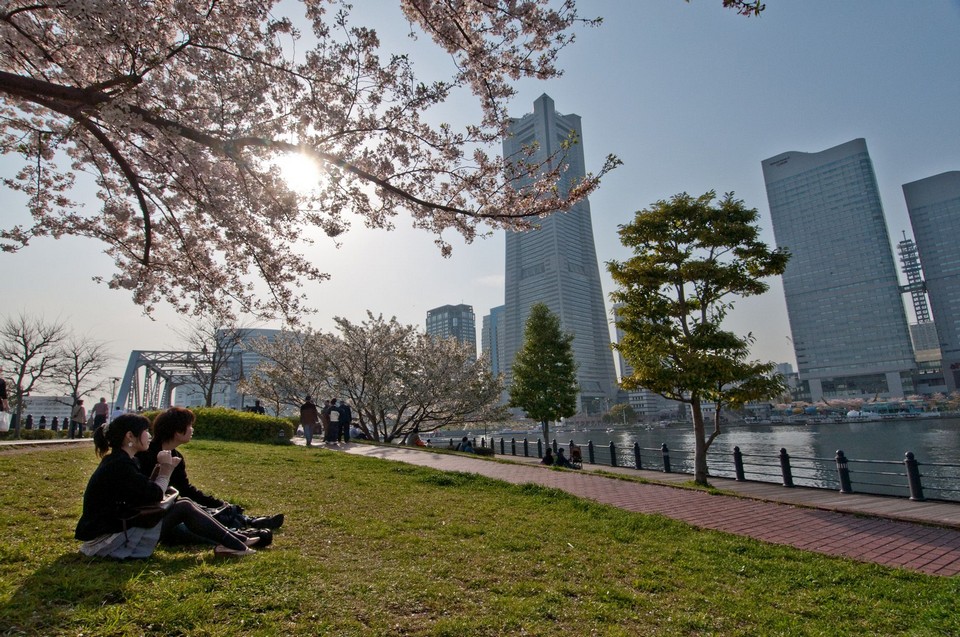
Chinatown in Yokohama (Yokohama Chukagai)
As Japan’s largest Chinatown, with more than 600 stores offering dishes from all parts of China, grocery items hard to find in Tokyo and unique souvenirs, you even might have to plan all day to walk on the lantern-filled streets leading to the temples during the day and see the brightly colored neon signs at night.
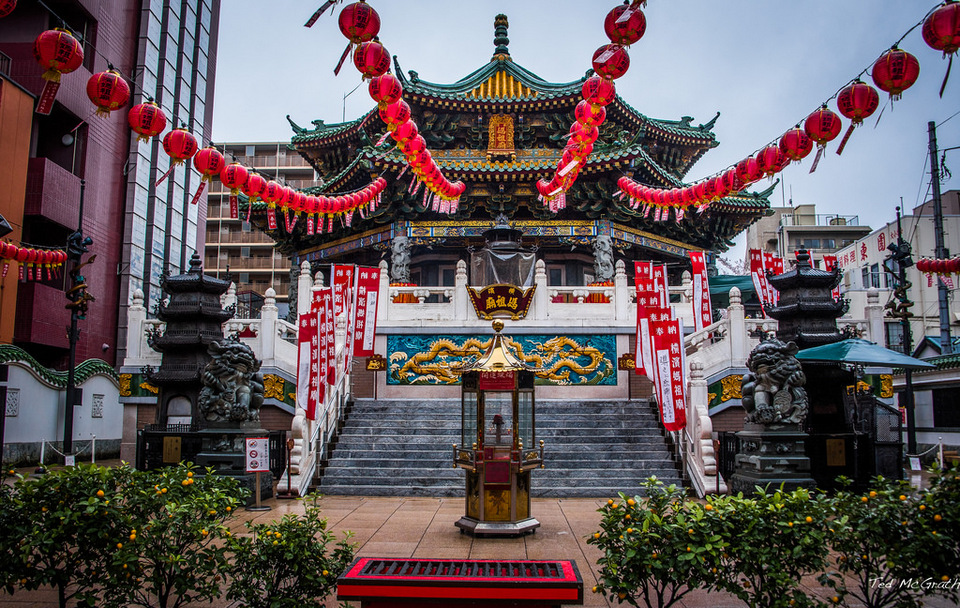
Religious sites such as Kanteibyo Shrine which worshiping Guan Yu of the Three Kingdoms era or Masobyo Shrine which worshipping the god of sea. In addition, the entertainment spot that attracts all children and adults is Yokohama Daisekai, where there are many Chinese restaurants, souvenir shops, art museums, photo studios, …
A few steps away is the Motomachi Shopping Arcade with cafes and high-end fashion shops. If you are passionate about photography, the classical Western architecture of the houses in the Yamate area will surely delight you.
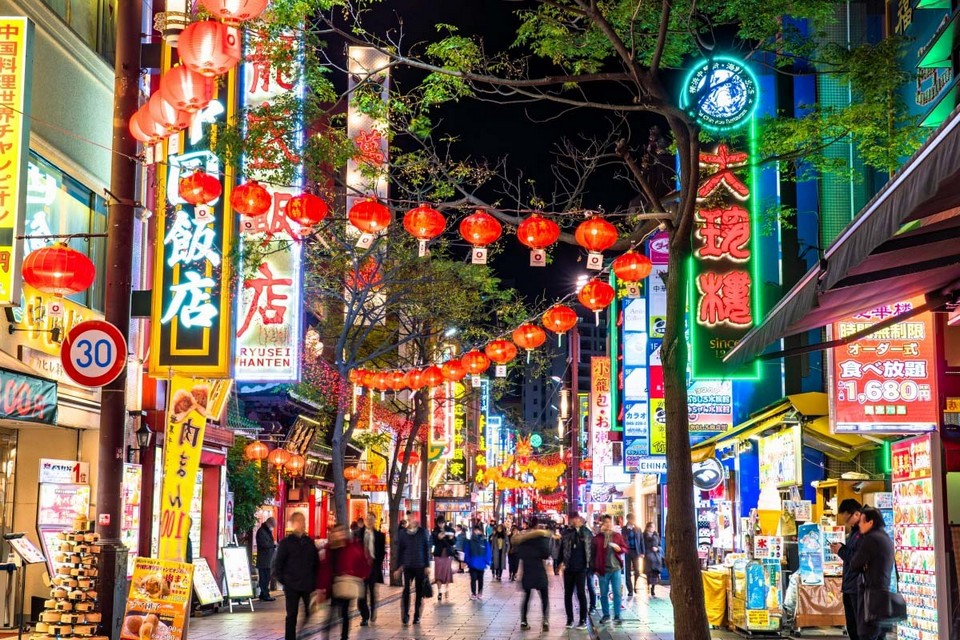
Visiting all day can be exhausting but the Garden Terrace Café, located on the third floor of Yokohama Hakurankan (one of the most famous souvenir shops in Chinatown), can energize you. Here you can experience ashiyu (foot bath) for 100 yen (food and drink included in the menu).
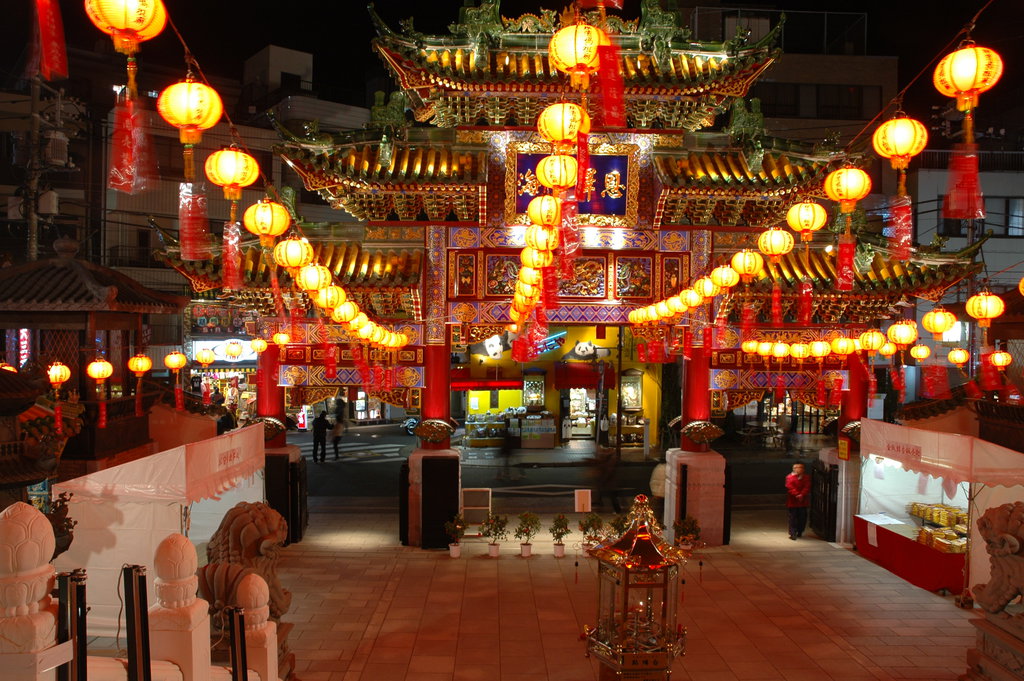
Sky Garden at Yokohama Landmark Tower
The building has a height of 296m with 70 floors. This is the tallest building in Japan, built in the port city of Yokohama. In particular, Sky Garden on the 69th floor will help you observe the whole city with a 360 degree view. On clear days, you can see Mount Fuji, a proud symbol of the Japanese.
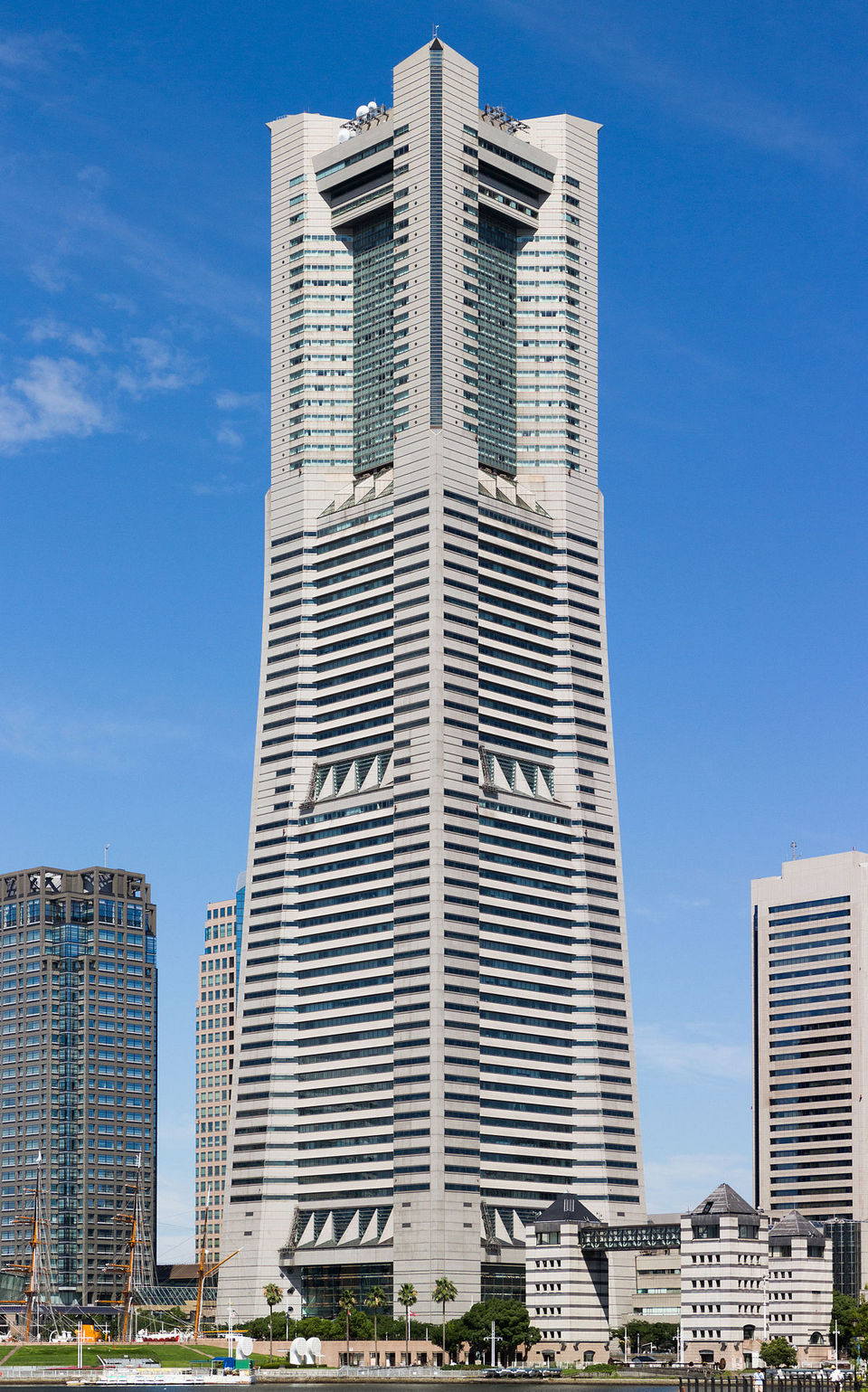
At night, the whole city wears its own color; The light mix of skyscrapers blending with the colors of the night sky creates an astonishing scene. Another interesting thing when you come to Yokohama Landmark Tower is that you will be experienced the fastest elevator in Japan to go to the top floor.
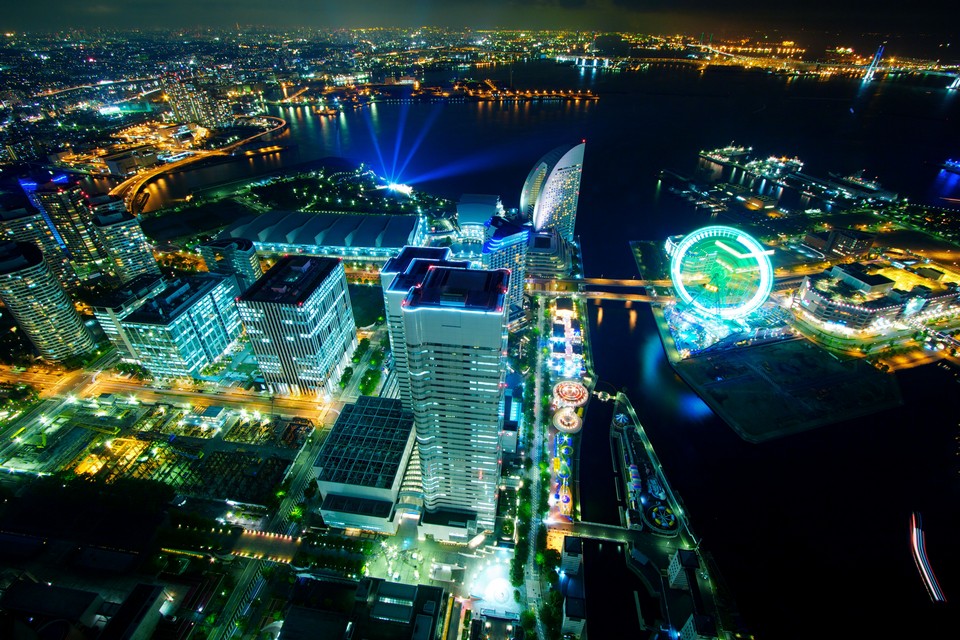
Address: Japan, 〒220-0012 Kanagawa, Yokohama, Nishi Ward, Minatomirai, 2 Chome−2−1, Yokohama Landmark Tower, 69F Hours: 10AM–9PM
Yokohama Zoological Gardens “ZOORASIA”
ZOORASIA is one of the newest, largest and best-preserved parks in Japan. The animals here are preserved in large, open areas like miniature natural ecosystems that you can hardly find in any other park.
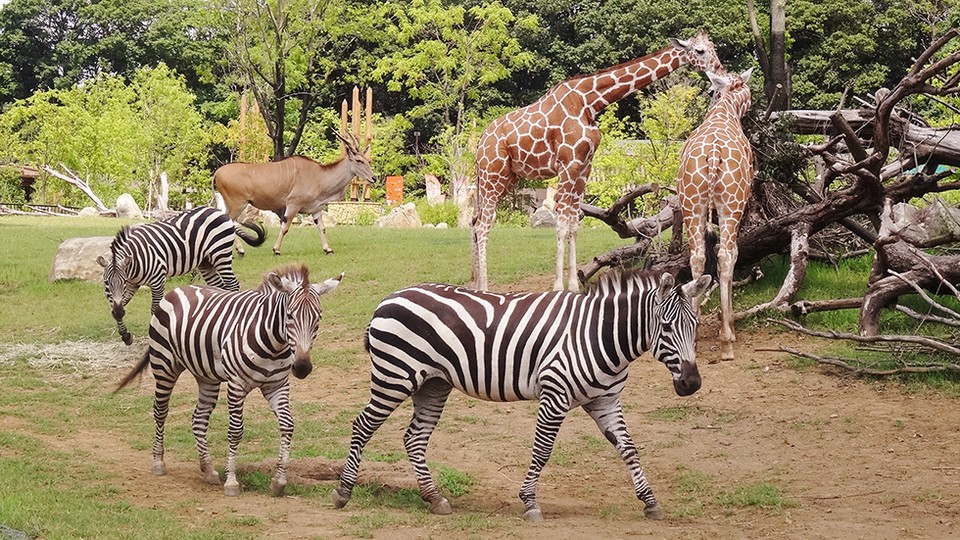
Address: 1175-1 Kamishiranecho, Asahi Ward, Yokohama, Kanagawa 241-0001, Japan Hours: 9:30AM–4:30PM/Tuesday: Closed
Harbor View Park (Minato-no-Mieru Oka Koen)
Harbor View Park is a park located on a low hill overlooking Yokohama Harbor. You can enjoy the panoramic view of the port when you zoom out from the observatory. It used to be the base of the British and French armies, so you should not be too surprised to easily see Western museums in the park such as Yokohamashi Igirisukan, Kanagawa-ken Kindai Bungaku-kan museum (Kanagawa Museum of Modern Literature), Osaragi Jiro memorial museum – the author of works “Muteki”, “Kurama Tengu”.
The park also has a rose garden called Rose Garden which was created to commemorate the city symbol (rose) in 1991. In the Spring and Fall you can admiring up to 1,300 rose trees of 110 species.
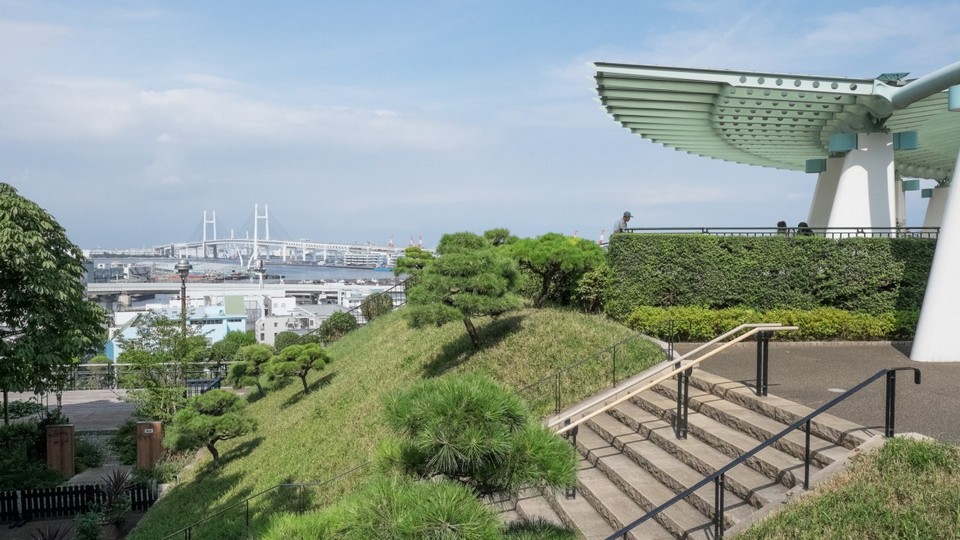
Address: 115 Yamatecho, Naka Ward, Yokohama, Kanagawa 231-0862, Japan
Yamashita Park
The park is located along the coast with an area of up to 74.000 square meters. In the past in 1923 when Japan had the earthquake of the century, the park was almost completely buried in the soil. After 5 years, the park was reopened in 1928. Because it is located next to the coast, visitors can both enjoy the scenery and enjoy the refreshing cool sea breeze with bridges across the sea.
Due to the symbol of this port city being the rose, at the park you can also admire the roses with about 400 rose trees of 60 different types around the world blooming throughout the season.
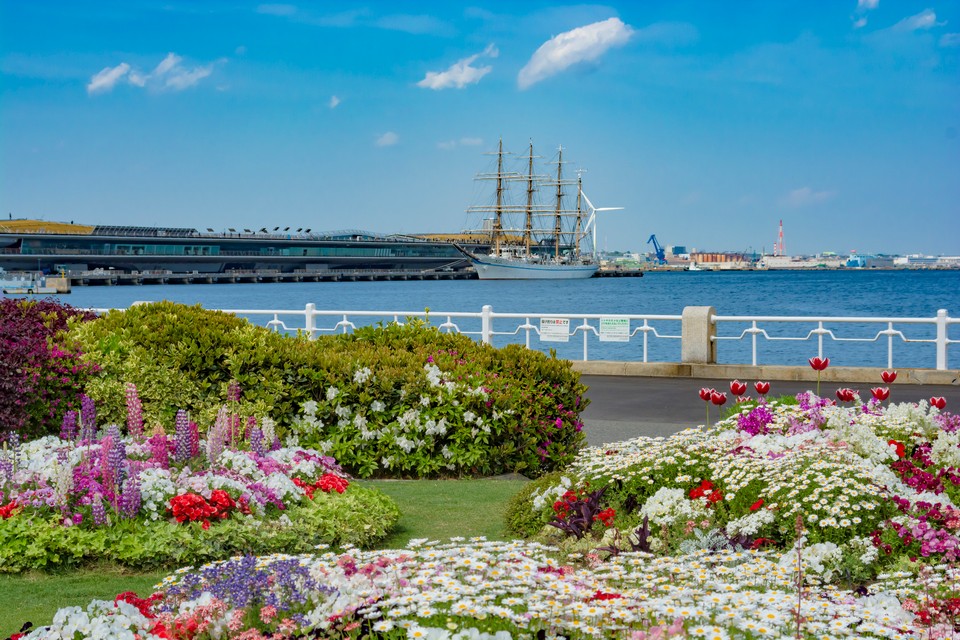
Address: 279 Yamashitacho, Naka Ward, Yokohama, Kanagawa 231-0023, Japan
Osanbashi Pier (Yokohama Intl Passenger Terminal)
Osanbashi Pier is the world’s largest Passenger Terminal capable of assembling cruise ships. Its arched architecture reflects the waves of the ocean surrounding the docks.
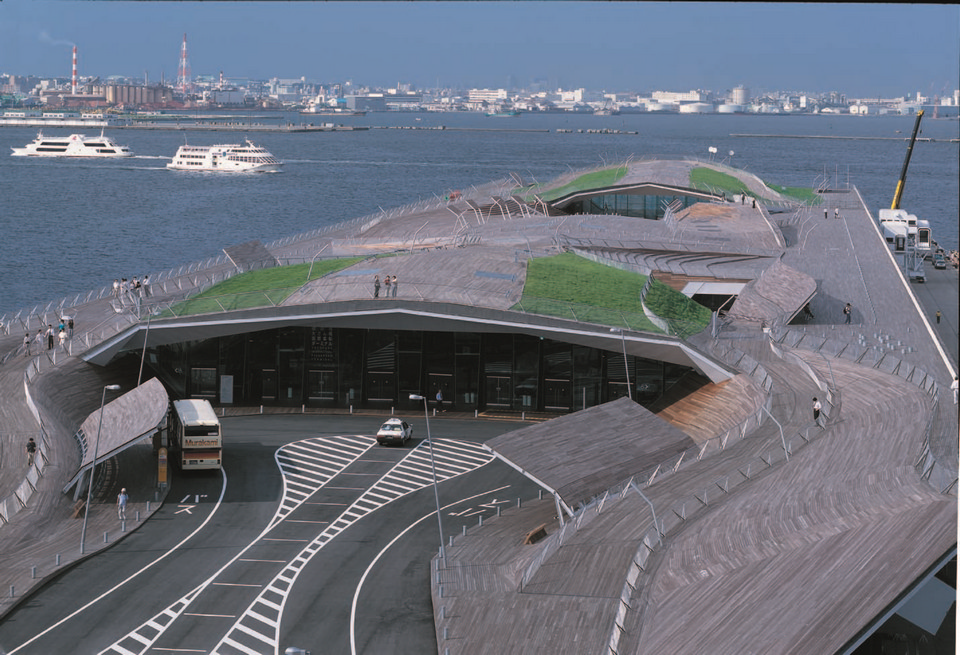
Address: 1-1-4 Kaigandori, Naka-Ku, Yokohama 231-0002, Kanagawa Prefecture Hours: 9:00 AM – 9:30 PM
Hikawa Maru
A luxury cruise that has been in operation since 1029 and today is permanently anchored by the bay by Yamashita Park.
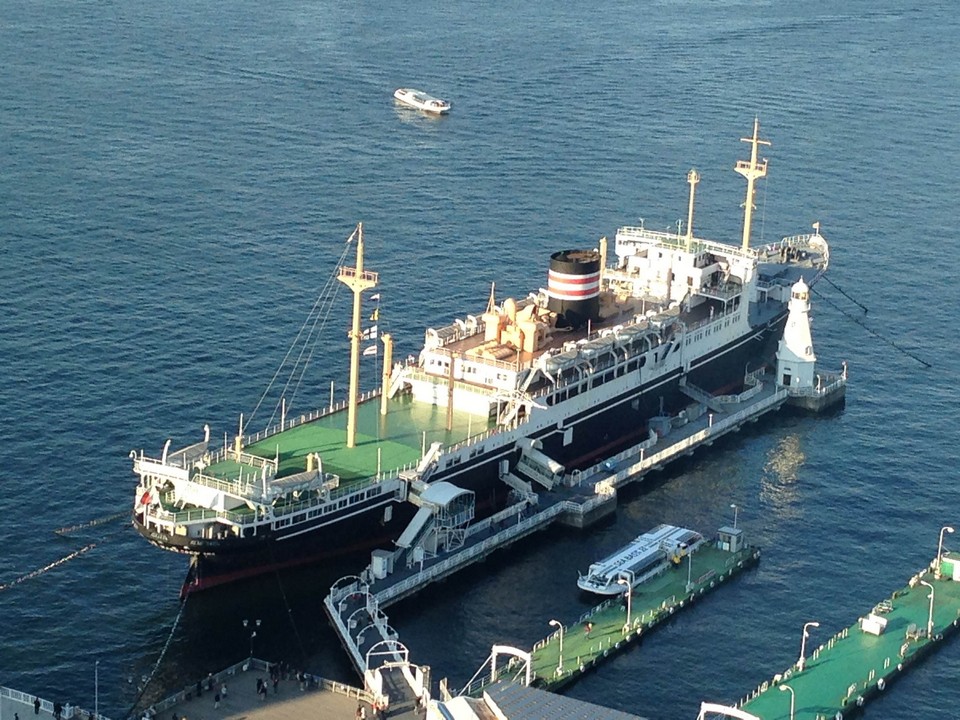
Address: Japan, 〒231-0023 Kanagawa, Yokohama, Naka Ward, Yamashitacho, 山下公園地先 Hours: 10AM–5PM
Kanagawa Shimbun Fireworks Festival
A fireworks festival takes place in early August. You can admire the most beautiful fireworks festival from Osanbashi Pier or Minato Mirai.
Nippon Maru (Sail Training Ship)
Nippon Maru is a ship built in 1930 in Kobe. It’s been around the world 45 times. The Nippon Maru is now anchored right in front of the Yokohama Landmark Tower at Minato Mirai.
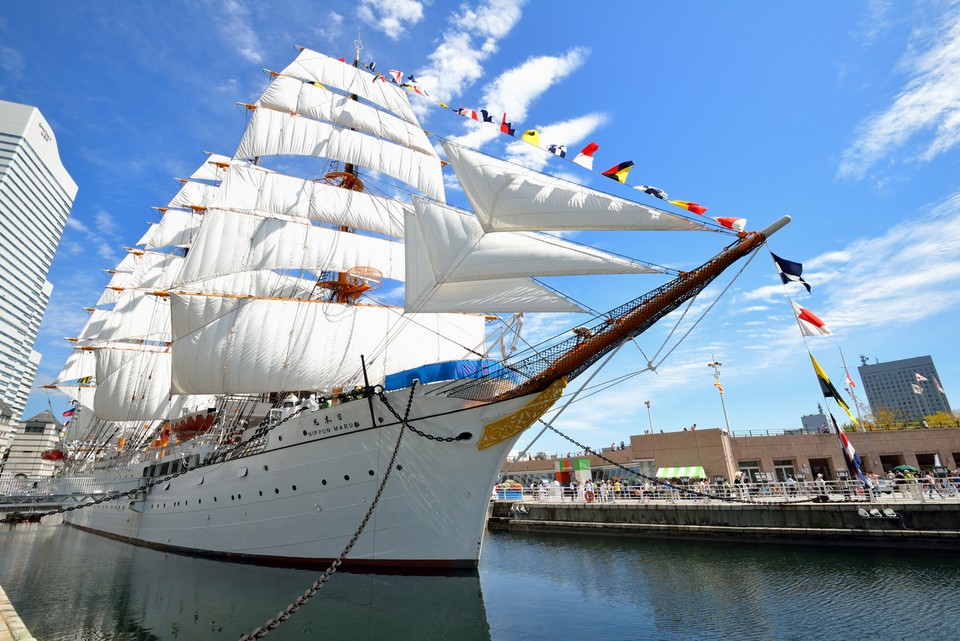
Address: 2 Chome-1-1 Minatomirai, Nishi Ward, Yokohama, Kanagawa 220-0012, Japan Length: 97 m Launched: January 27, 1930 Draft: 5.3 m Hours: 10AM–5PM
Several companies offer a shuttle service around the Minato Mirai area. Seabus service also offers lunch and dinner while cruising. If you go further to Tokyo Bay, you will see the Yokohama Bay Bridge and some other attractions.
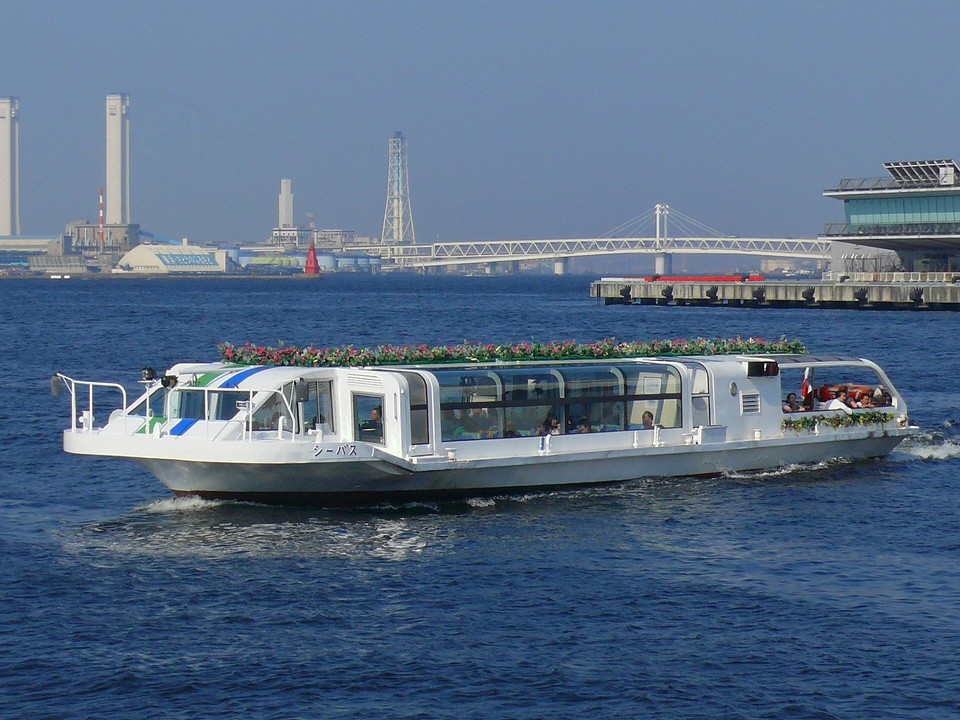
Yokohama Bay Bridge
The Yokohama Bay Bridge is 860m long spanning Tokyo Bay. This is one of the largest suspension bridges in the world. The bridge is white with a very simple architecture that stands out against the blue sky. The view was immense when viewed from this side of the bay.
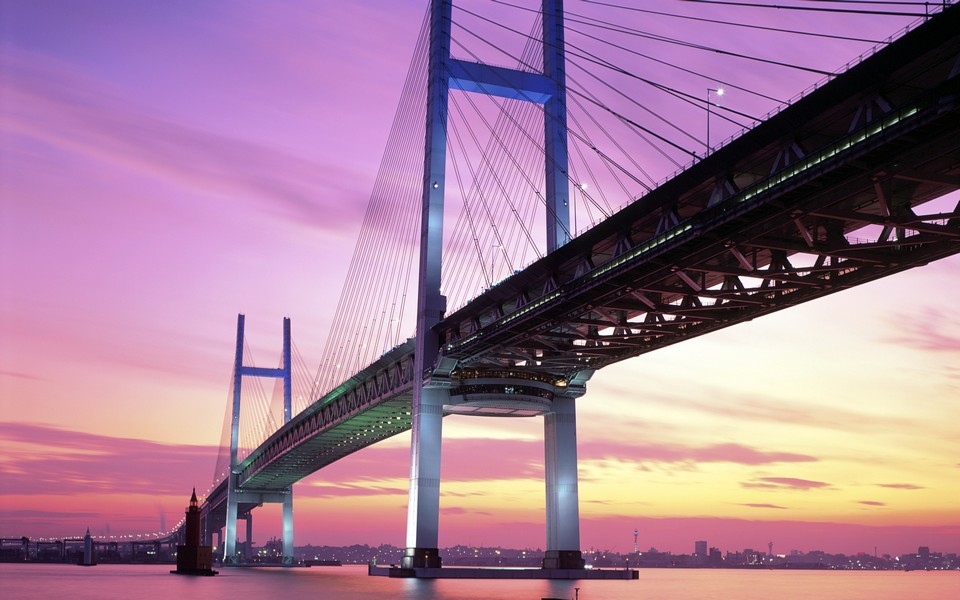
Address: Daikokufuto, Tsurumi Ward, Yokohama, Kanagawa 230-0054, Japan
Yokohama Station Area
Yokohama is the 5th busiest train station in the world serving 760 million passengers a year. It is also a large shopping area with shops, malls and electronics stores.
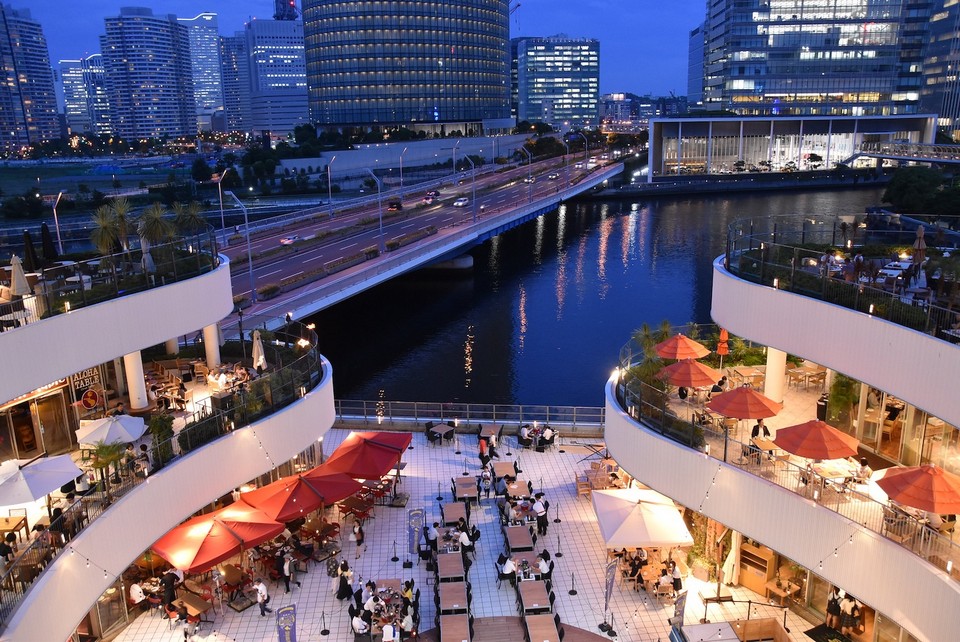
Address: Japan, 〒220-0011 Kanagawa, Yokohama, Nishi Ward, Takashima, 〒220-0005 2 丁目 16
Shomyoji Temple
A temple in southern Yokohama, it’s a hidden gem from the famous temples of Kamakura.
As soon as you go all the way lead to the temple, visitors will encounter a statue of Nio up to 4m high, looking even more giant and impressive at a near position. The temple also has a very impressive landscape with a lake and an impressive red bridge across. This garden is called the Pure Land garden, which means the world of the Pure Land of bliss. If you travel to Yokohama, do not miss the chance to come here to visit and pray.
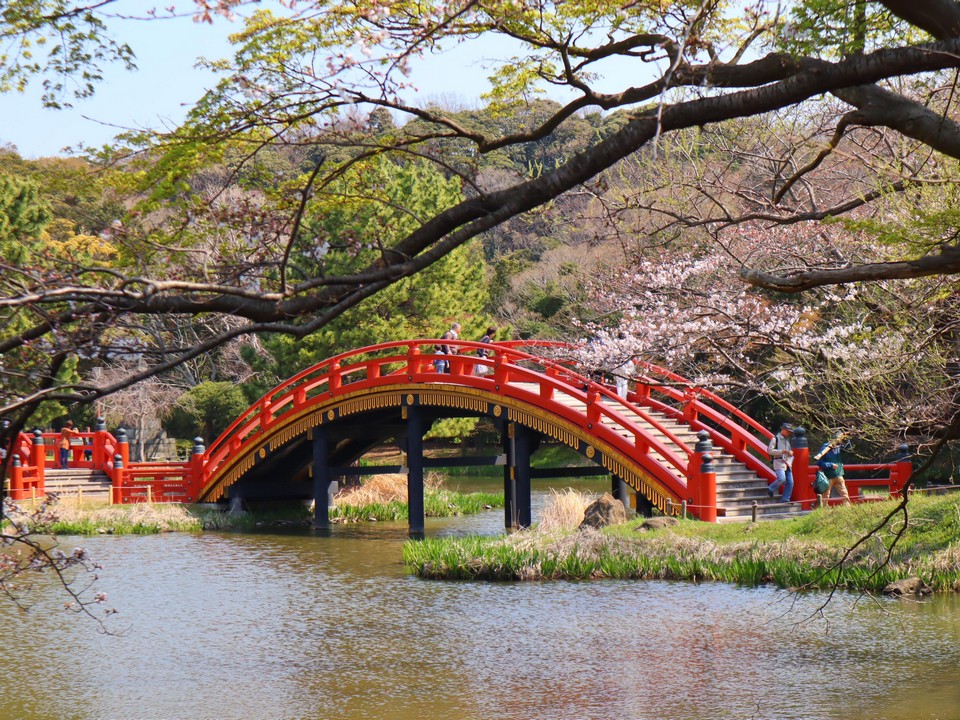
Address: 212-1 Kanazawacho, Kanazawa Ward, Yokohama, Kanagawa 236-0015, Japan
Yokohama Marine Tower
Yokohama Marine Tower was built in 1959 to commemorate the 100th anniversary of its opening of harbour. The marine tower was officially put into operation in 1961 at an altitude of 106m. Inside this famous lighthouse are restaurants, observatory, shops. Initially it served as a regular lighthouse but in 2008 it became a tourist attraction instead of a normal lighthouse.
The observatory is mainly located on floors 29 and 39, with a panoramic view of the harbor at 360 degrees from a height of 100 meters. To get to the observatory you can take the elevator or climb with 335 steps.
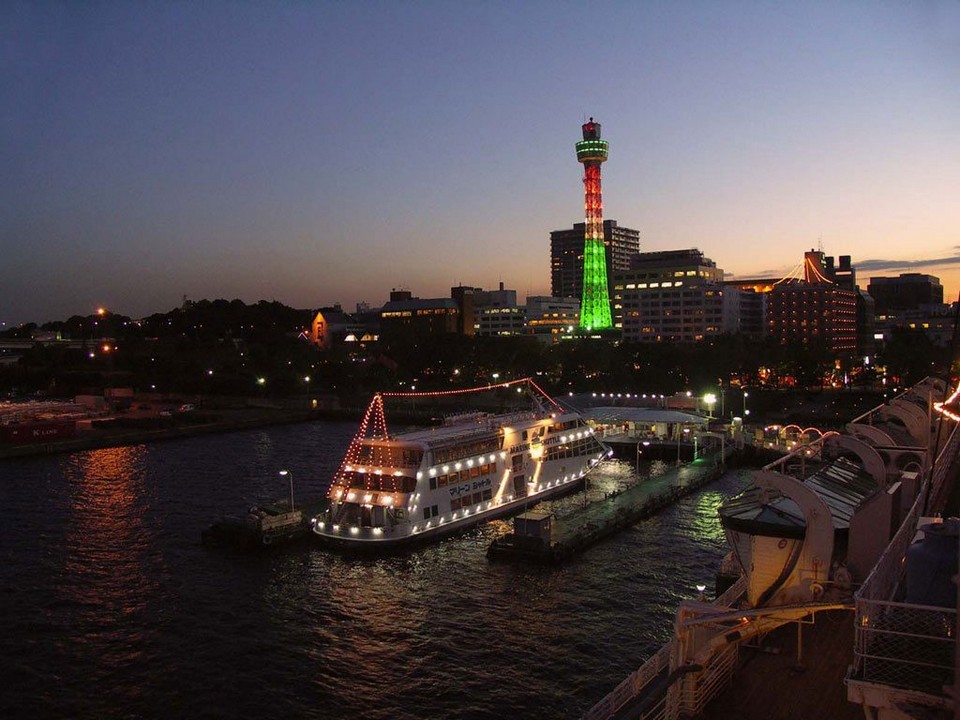
Address: 15 Yamashitacho, Naka Ward, Yokohama, Kanagawa 231-0023, Japan
Tip: To saving cost of visiting in Yokohama, you can buy the Yokohama Enjoy Pass online to free visit 4 of the 7 main attractions you choose in the city, both convenient and simple to save a small amount. For those who are not fluent in Japanese, this is the first choice. You can buy it here .
Yokohama blog: Where to stay?
If you want to stay in the city center for convenience, you can choose the Navios Yokohama hotel ( Agoda.com or Booking.com ) . Or the Yokohama Kokusai Hotel ( Agoda.com or Booking.com ) , located near the Yokohama Train Station, has a more modern and comfortable interior.
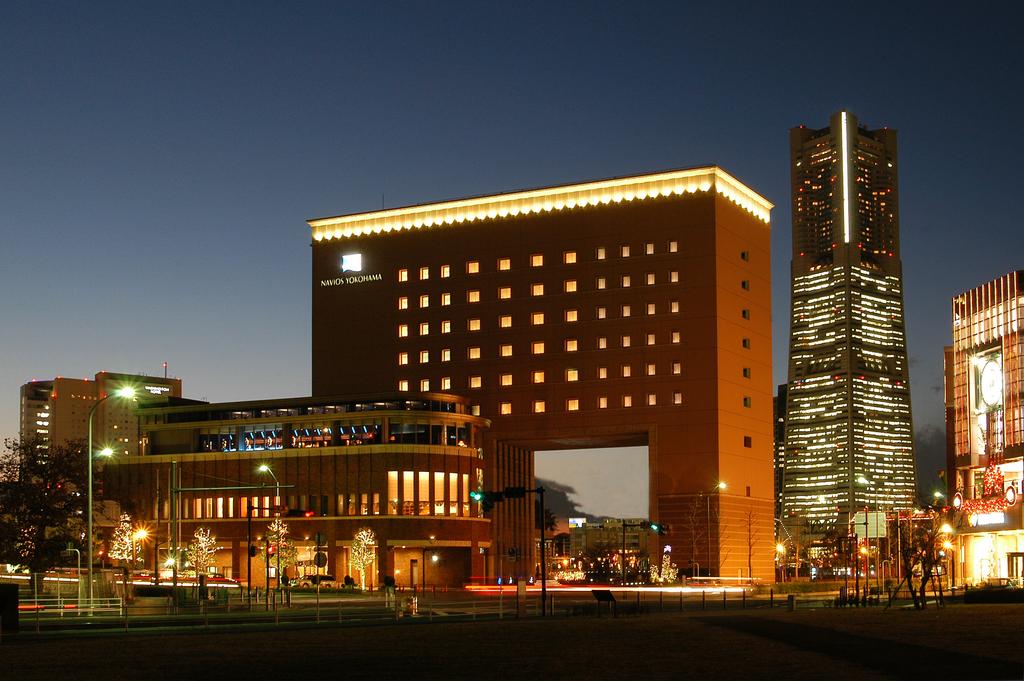
Below we recommend more best cheap, budget, mid-range and upscale hotels with good ratings and reviews you can refer to.
- Yokohama Royal Park Hotel , a top rated 5-star hotel with room rates from $97/night (Check rates on Agoda.com or Booking.com ) .
- The Yokohama Bay Hotel Tokyu , a top rated 5-star hotel with room rates from $120/night (Check rates on Agoda.com or Booking.com ) .
- InterContinental Yokohama Grand , a top rated 5-star hotel with room rates from $111/night (Check rates on Agoda.com or Booking.com ) .
- Hotel New Grand , a top rated 5-star hotel with room rates from $131/night (Check rates on Agoda.com or Booking.com ) .
- Shin Yokohama Prince Hotel , a top rated 4-star hotel with room rates from $67/night (Check rates on Agoda.com or Booking.com ) .
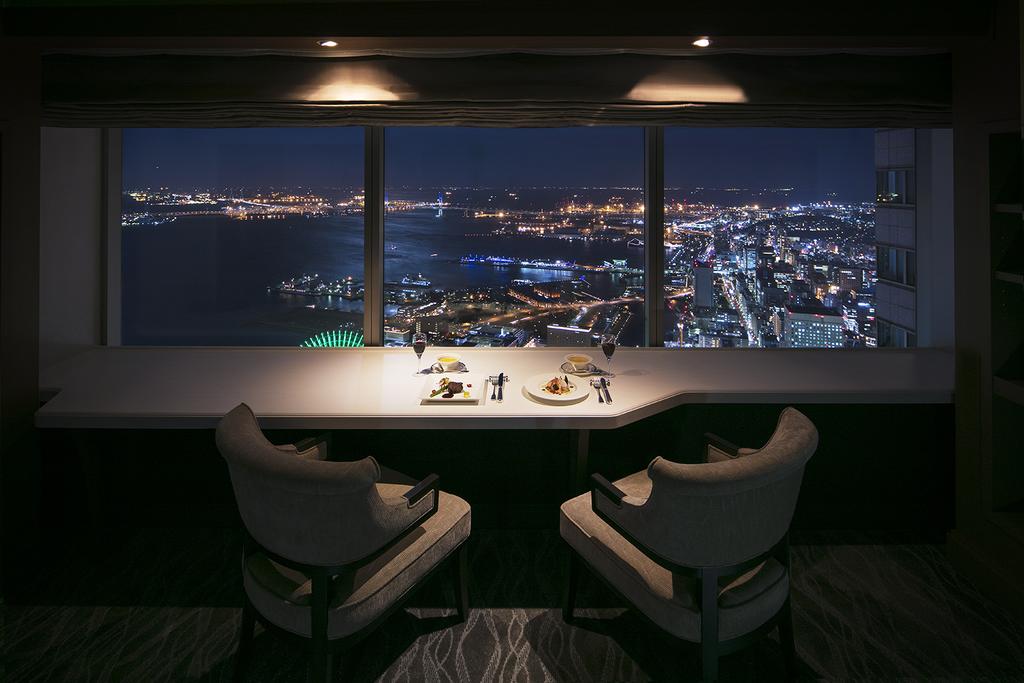
You can find more, check rates, availability & book for hotels in this city on Agoda.com or Booking.com .
Yokohama travel guide: What and where to eat?
Yokohama has a diverse cuisine culture, of which the famous is the traditional beef hotpot at Araiya restaurant (Address: Japan, 〒231-0002 Kanagawa, Yokohama, Naka Ward, Kaigandori, 4 Chome−23-1/Hours: 11AM–2:30PM, 5–10PM) . The menu sets here start at 1,300 yen.
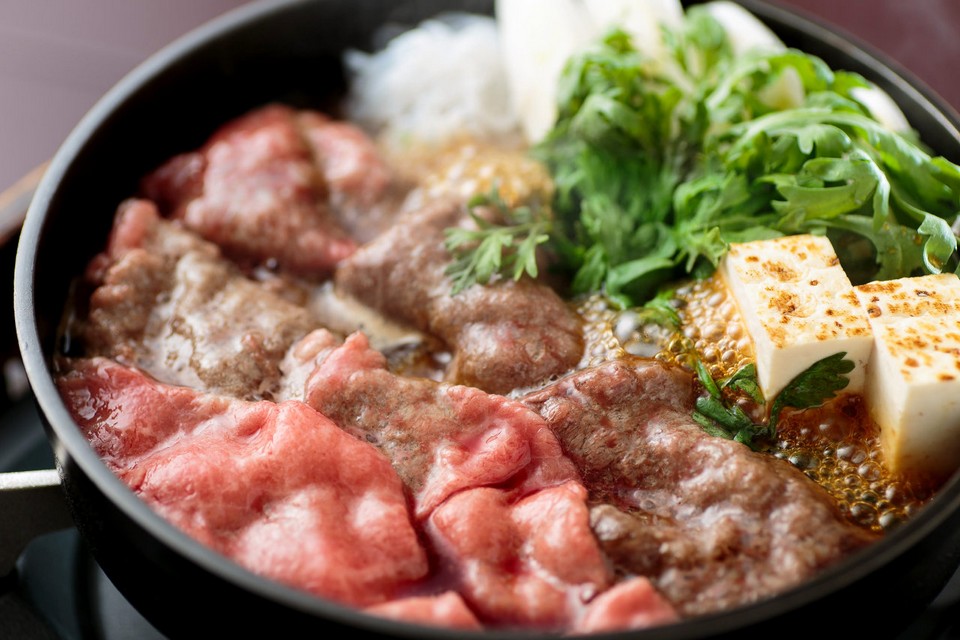
In addition, The Charcoal Grill Green restaurant (Address: 6 Chome Bentendori, Naka Ward, Yokohama, Kanagawa 231-0007, Japan/Hours: 11:30AM–2:30PM, 5–10PM;Saturday: 5–10PM) serves steak, pork, and grilled shrimp accompanied by handmade wine and beer. Main dishes at the restaurant start from 1,100 yen.
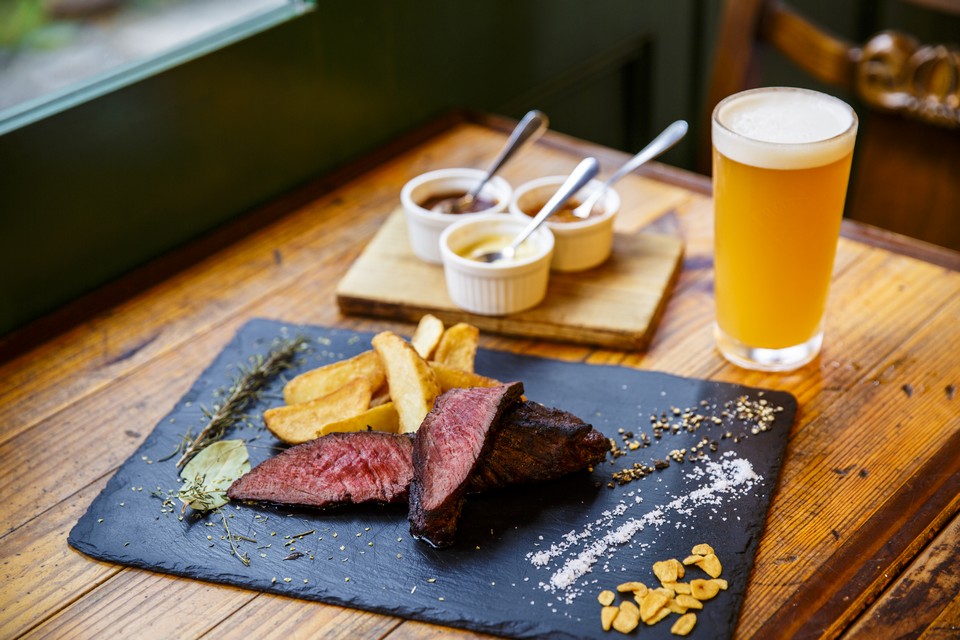
You also can try curry doughnuts at Pompadour Motomachi Honten (Address: 4 Chome-171 Motomachi, Naka Ward, Yokohama, Kanagawa 231-0861, Japan/Hours: 9AM–8PM).
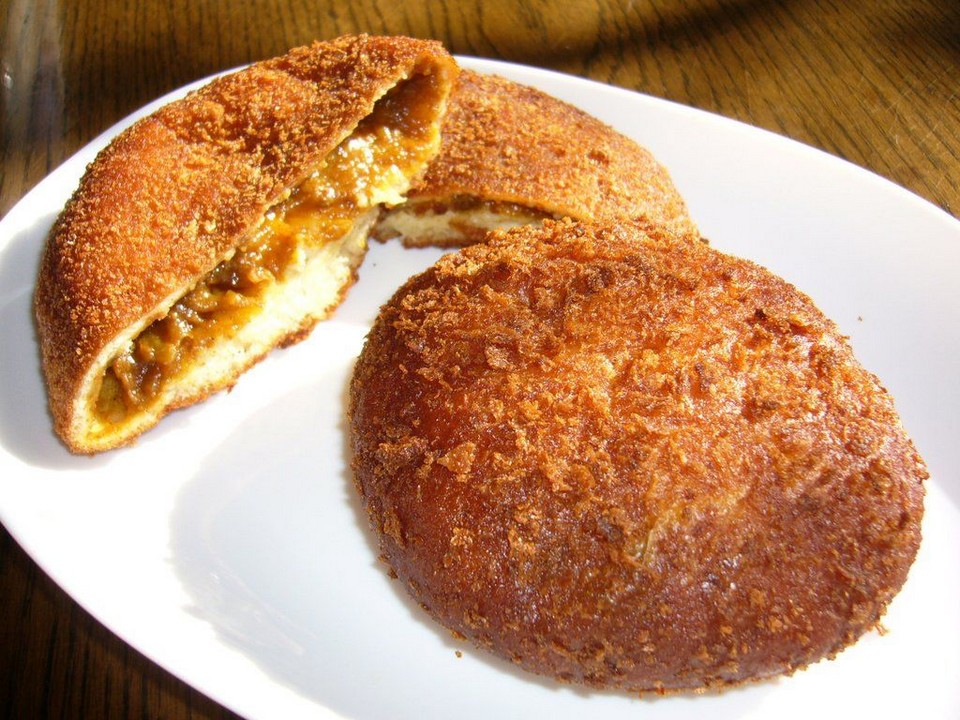
Or omu-rice from La mere poulard Minatomirai Yokohama (Address: Japan, 〒220-0012 Kanagawa, 横浜市西区Nishi Ward, Minatomirai, 3 Chome−5−1 MARK IS 4F).
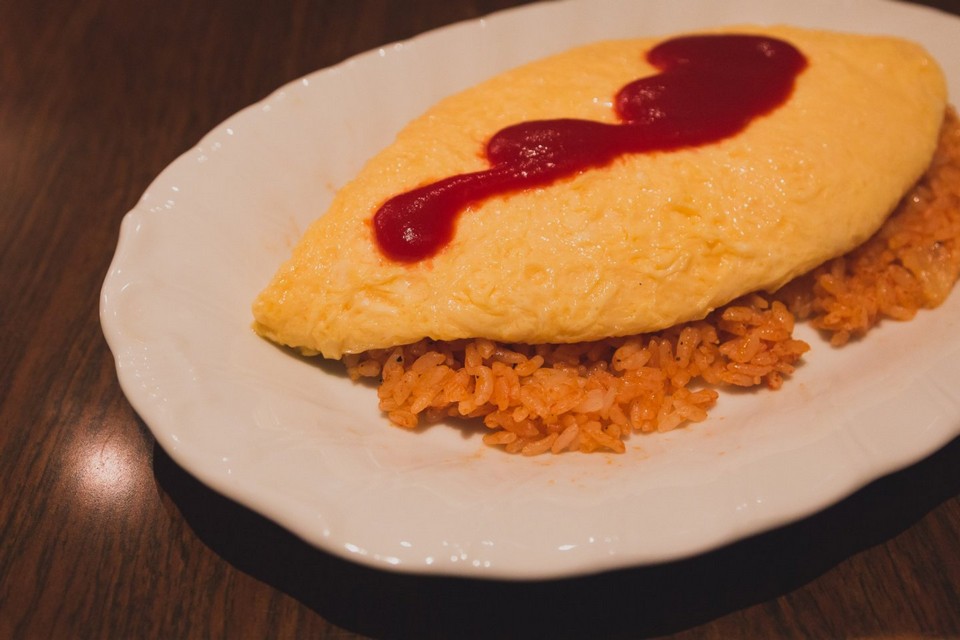
Here are some more typical dishes in Yokohama that you must definitely to try when traveling to Yokohama.
- Sanma-men noodles: This noodle can be enjoyed at the Shin-Yokohama Ramen Museum. You will have the opportunity to enjoy all kinds of ramen throughout Japan.
- Handmade cup noodles: A special feature of this dish is that visitors will prepare a cup of noodles in their own style. To enjoy this homemade cup noodle, visitors also will go to the Shin-Yokohama Ramen Museum to visit and enjoy.
- Gyu-nabe beef hotpot: When coming to Yokohama without enjoying Gyu-nabe beef hotpot is really a pity. The hotpot broth is processed with a characteristic flavor, premium beef is often used by restaurants. The most famous of which is the famous A5 wagyu beef.
- Goma dango: A famous dessert in Yokohama. The dumplings, dimsum in Chinatown.
- Some other dishes like: Napolitan Spaghetti, Hayashi rice, Bill’s pancakes.
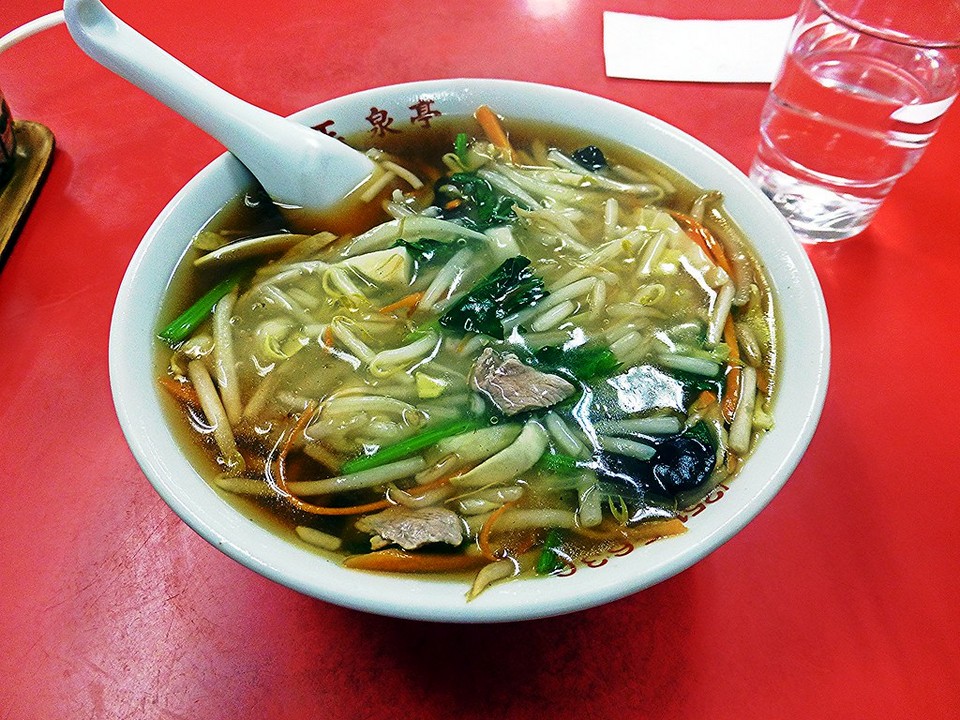
Yokohama travel blog: Suggested Yokohama itinerary 2 days
- Visit the Yokohama Museum of Art
- Visit the Yokohama Landmark Tower
- Explore Shin-Yokohama Ramen Museum
- Visit Yokohama red brick warehouse
- Visiting Yamashita Park
- NYK Hikawamaru Cruise
- Explore bustling Chinatown
- Immersed yourself in Motomachi Street
- Relax at Harbor View Park
- Stroll in the Sankeien garden

Some best day tours, trips, activities and transfer services, tickets in, from and to Yokohama you can refer to
- Yokohama Hakkeijima Sea Paradise Ticket
- 2-Day Yokohama and Kamakura Enjoy Pass
- Yokohama, Kamakura, and Enoshima Anime Tour from Tokyo
- [Sale] Manten no Yu Japanese Style Hot Spring Experience in Yokohama
- Full day in Yokohama with a local
- Helicopter Riding Experience by Yokohama Sky Cruise
- Yokohama Lunch, Afternoon, and Dinner Cruise
- Cruise-over in Yokohama
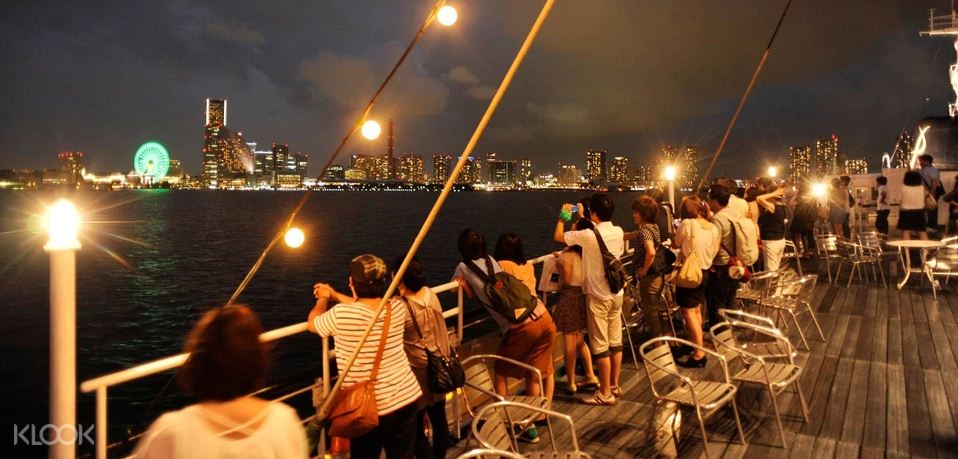
Are you looking for more top things to do in Kanagawa: Tours, activities, attractions and other things? Let’s check it out here .
Related articles

RELATED ARTICLES MORE FROM AUTHOR
Coron itinerary 5 days — what to do & how to spend 5 days in coron, explore fenqihu old street — what to do in fenqihu in a day trip, where to go in kunming — 15+ top kunming attractions & best places to visit in kunming, must eat in melaka — 10+ famous malacca street food & must try food in melaka.
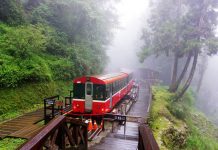
What to do in Alishan? — 5 top attractions & best things to do in Alishan, Taiwan
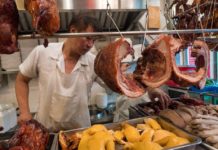
Hong Kong food culture — Hong Kong cuisine tells the historical story of the whole land

Melaka food blog — Experience Melaka delicacies, arrived at by Trishaw

Where to eat in Hakodate? — 5+ best food & best places to eat in Hakodate city, Hokkaido
Editor picks.

Must eat in Hong Kong — 7+ must eat & must...

Coron itinerary 5 days — What to do & how to...

Arashiyama travel blog — The fullest Arashiyama travel guide with top...
Popular posts.

What to buy in USA? — 17+ must buy in USA...

Must buy souvenir in Taiwan — Top 17+ most famous, cheap...

Must buy in Korea — Top 23 cheap, famous & best...
Popular category.
- Inspiration + Guide 1456
- Trip Inspiration 468
- Thailand 209
- Food + Drink 208
- Coasts + Islands 193
- South Korea 168
- Vietnam 166
- Travel Photos 144
- Work for Us
- Terms & Conditions
- Privacy Policy
- Itineraries
- Tours and Activities
- Travel Guides
- Best of Japan
JRailPass.com » Japan Travel Blog » Yokohama travel guide: Access from Tokyo and attractions
Yokohama travel guide: Access from Tokyo and attractions
August 1, 2023
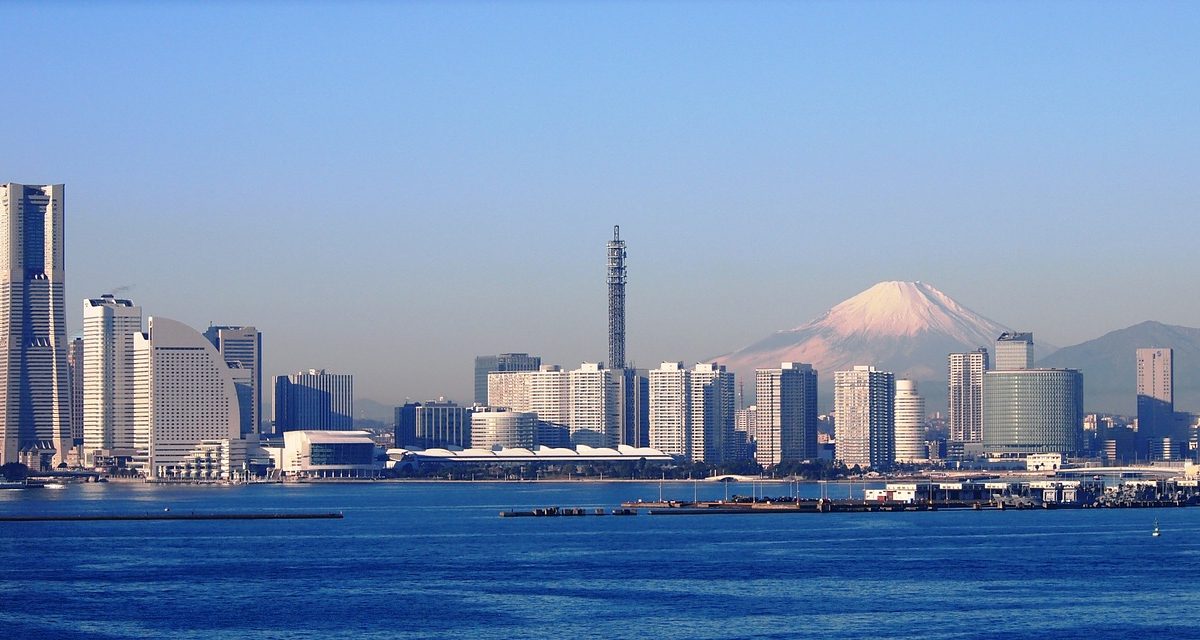
Japan’s second-largest city after Tokyo, Yokohama is located half an hour south of Tokyo. One of the first Japanese ports to open to foreign trade, in 1859, Yokohama has a reputation as a truly multicultural city and draws a large number of both Japanese and international visitors.
Its range of diverse attractions includes one of the largest Chinatowns in the world , a range of gastronomic experiences such as a Ramen Museum and brewery tours, and a large zoo and sea-themed amusement park.
Tokyo to Yokohama
From Tokyo, your Japan Rail Pass gives you direct access to all that Yokohama has to offer . Both Tokyo and Yokohama are well-served by JR train lines, giving you a multitude of travel options.
- From Tokyo Station , take the JR Tokaido line , Yokosuka line or Keihin-Tohoku line (also available from Ueno Station). With only 48 minutes of travel time, this is the fastest route from Tokyo Station to Yokohama Station (downtown) .
- Alternatively, from Tokyo Station you can take the Tokaido Shinkansen to Shin-Yokohama Station , and the Yokohama Subway blue line to Yokohama Station (downtown). Total travel time should be around 50 minutes.
- From Shibuya Station , you may take the express or limited express train on the Tokyu Toyoko Line (not covered by the JR Pass). Depending on your starting point, the trip will last 40 and 45 minutes.
- To get from Shinjuku to Yokohama, you can take the Shonan Shinjuku Line. The total journey takes around 30 minutes.
- To travel from Narita Airport to Yokohama, take the Sobu Line and change to the Yokosuka Line at Tokyo Station.
- To get from Haneda Airport to Yokohama, take the Keikyu Keihinkyuko Line, which also passes through Shinagawa Station .
[banner-en]
Kyoto to Yokohama
From Kyoto Station , take the JR Tokaido Shinkansen line to Shin-Yokohama Station , a trip of three and a half hours by Hikari train or four hours by Kodama train. The fastest option is to take a Nozomi train, as the journey takes just under two hours.
Once at Shin-Yokohama, it’s easy to reach Yokohama Station and the city centre by either taking the JR Yokohama Line or the Blue Line of the Municipal Subway.
Osaka to Yokohama
From Shin-Osaka Station , take the JR Tokaido Shinkansen line to Shin-Yokohama Station. The trip is just a little bit longer than when traveling from Kyoto and will last 3 hours and 40 minutes on a Kodama train or 2 hours and 40 minutes on a Hikari or Nozomi train .
As when arriving at Shin-Yokohama from Kyoto, passengers are then able to take the Yokohama Subway blue line to Yokohama Station (downtown).
Getting around Yokohama city
Much of Yokohama can be traversed on foot, but other options are also available. Your JR Pass can provide transportation between Yokohama Station at the city center and Shin-Yokohama Station ten minutes beyond. Two municipal subway lines are also available.
The Akaikutsu Loop Bus departs from Sakuragicho Station and connects with most of Yokohama’s major sights. The bus runs every 30 to 40 minutes. Just outside Yokohama Station, you will have access to the Seabass, a boat that travels between Minato Mirai and Yamashita Park about four times per hour.
Things to do in Yokohama
Yokohama is often compared to such international metropolises such as Los Angeles and Vancouver, as it offers an eclectic mix of expansive waterfront vistas, vast green spaces , and a vibrant downtown area.
Yokohama’s multicultural history is on full display in the Yamate area, which includes the Harbor View Park and Motomachi shopping street. Yamashita Park lies along the waterfront, and grants access to the Hikawa Maru, a retired ocean liner converted into a museum.
Food attractions
Foodies will rejoice at Yokohama’s selection of food themed attractions. Brewery tours are available at the Kirin Brewery Company , established in 1907. Tours of the facility conclude with twenty minutes of beer sampling and snacks. The Ramen Museum unfurls the history of ramen noodles, from its birth in China to modern instant meals. The museum includes nine restaurants that feature ramen from different areas of Japan.
Another ramen museum, the Cup Noodles Museum , is located in the Minato Mirai District. Owned by the company that invented the instant noodles, the museum features hands-on exhibits that allow visitors to create and package their own instant ramen. Samples of ramen and canned drinks from around the world can be attained at the museum’s replica night market.
Museums in Yokohama
Aside from maritime and food-themed exhibition spaces, Yokohama also offers visitors a range of museums dedicated to diverse topics, including the Mitsubishi Minatomirai Industrial Museum , which features a range of interactive features related to the aviation industry.
Those interested in exploring the city’s background should head to the Yokohama Archives of History , while visitors looking for a quirkier experience should enjoy the Yokohama Doll Museum , which offers a huge collection of kitsch memorabilia spread over 4 levels.
Yokohama’s most popular attraction is the Yokohama Chinatown . The shopping and dining district contains more business than it does residents.
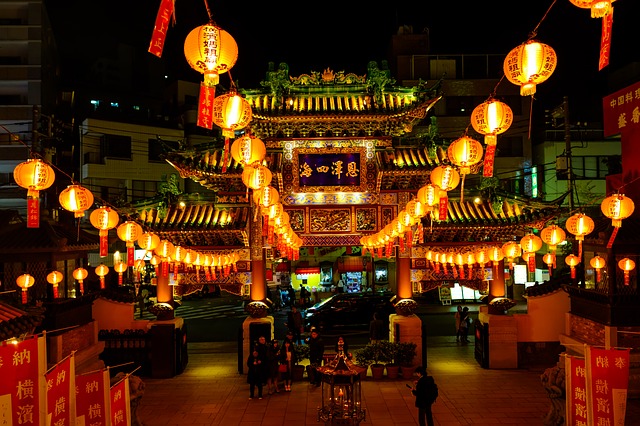
The area hosts a number of events and festivals, including the Chinese New Year each February. It is famous for its variety of Chinese foods, many of which have been converted to suit Japanese tastes.
Zoos and aquariums
Yokohama is also an excellent destination for avid nature lovers. Zoorasia is one of the largest zoos in Japan and features local as well as exotic species.
Thirty minutes south of Yokohama is the Hakkeijima Sea Paradise amusement park. It is located on a small offshore island. The Aqua Resorts area features an aquarium known as the Aqua Museum, home to such creatures as polar bears and whale sharks. Fureai Lagoon allows visitors to interact with seagoing inhabitants, and dolphins can be viewed up-close in the Dolphin Fantasy. The Pleasure Land portion of the park offers rides for kids and adults of all ages.
Famous Landmarks
Travelers to Yokohama shouldn’t miss the opportunity to visit the Osanbashi Pier, a stunningly-designed modern passenger ship terminal, or the iconic Landmark Tower , which offers stunning views over the impressive Yokohama Bay Bridge from the top.
If you’re visiting with family you may also want to take your kids to the Cosmo World theme park and take a ride on its giant Ferris wheel, one of the biggest in the world
Also, Mitsuike-Koen is a prime location for those keen to experience cherry blossom viewing in Japan. Literally meaning “Three Ponds Park”, this public park features three man-made ponds surrounded by more than 1,500 1,600 cherry trees.
Giant Gundam
One of the newest attractions in Yokohama is a giant, moving statue of a Gundam robot from the popular Japanese anime series, which has been installed outside of the city’s Gundam Factory in advance of its opening in December 2020. The complex will also include themed shops, exhibitions, and a café.
Standing over 18 meters tall, the giant Gundam was inaugurated in a special ceremony performed by Shinto priests . However, if you want to take in the towering robot for yourself you’ll have to act fast, as the statue is only expected to be displayed at the site until March 31st, 2022.
Whatever your interests, Yokohama holds something special for you. Start planning your next trip today!
Related posts
Related tours & activities.
I will complete a cruise in Yokahma in April 2020 and plan to stay for 5 days, I would appreciate ‘must see’ suggestions – and is it possible to use the bullet train from Yokahama, thanks
Yes, it is possible to take the bullet train from either Yokohama Station (JR Tokaido line, Yokosuka line or Keihin-Tohoku line ) and from Shin-Yokohama Station ( Tokaido Shinkansen ).
As detailed in this article you have many things to do in Yokohama. Yokohama’s most popular attraction is the Yokohama Chinatown. You can also visit the Yamate area for Yokohama’s multicultural history. Should you travel during the cherry-blossom season, Mitsuike-Koen is a prime location for cherry blossom viewing .
Happy travels!
in late october we are travelling to yokohama from narita we are purchasing a jr rail paSS HOW DO YOU GET FROM NARITA TO YOKOHAMA THANKS
Hi PAT! You will first need to reach central Tokio from the airport travelling in the Narita Express . After that just follow one of the multiple travel options described in this article 😉 Happy travels!
Hello, We (2 adults and 2 kids) are arriving to Tokyo Haneda airport early morning, 5AM, and staying for 8 days in Japan. Whilst we have organised our 7 day JR passes, and looking forward to collect them on the same day,( JR office opens 6.45AM at the Haneda Airport?) we will not be using them on the first day. What would be the best option to transfer from the airport to the Hotel Metropolitan Edmont? Thank you
You should take the Tokyo Monorail to Hamamatsucho Station, then the Yamanote line to Akihabara, and then the Chuo line to Suidobashi.
Hi . I am Valerie from the Philippines. Me and my friends are arriving at Kansai Airport on March 23, 2019. We are planning to purchase 7 day JR pass. I have read that you have a JR office in Kansai where we can get or exchange our voucher for the JR card. We plan to immediately take the Hikari train to Tokyo. What is the first available trip to Tokyo that we could immediately take. Or possibly the first trip out to Tokyo on March 24th. Where can I view the daily train schedule of Shinkansen?Thank you.
Hi Ma Valerie! We recommend you to check Hyperdia , which provides detailed timetables, platform information, trip duration and exact distance, which will help you greatly in organizing your trips in Japan. You will also be able to use its filters to see routes included in your Japan Rail Pass . Happy travels!
I arrive at Kansai from the PHilippines at 11:55 October 13 2018 and I have arranged to collect my 7 day JR Pass when I arrive at Kansai. I want to go straight from Kansai to Yokohama using my JR Pass so can you tell me what is the quickest route I can use and if I can reserve seats for 3 people in advance.
Can you email me your response to [email protected]
Adrian Rathmell
Hi Adrian! For concrete assistance please make sure to contact the site you purchased the Japan Rail Pass from – they will be able to better assist you. Regarding the seat reservation questiom, we recommend you to carefully check our faq How to make seat reservations? Happy travels!
I am traveling to Tokyo with my family of 6. What is the best way for us to get to Kyoto from Tokyo and vice versa?
Hi Cel! Getting from Tokyo to Kyoto with the Japan Rail Pass is easy. You should take the Shinkansen Hikari train from either Tokyo Station or Shinagawa Station in central Tokyo, and arrive at Kyoto Station. This trip is fully included in your Japan Rail Pass . Enjoy your trip!
Hi Am travelling to Japan late March. I have to get from Haneda to Sakuraguchi the day I arrive(Yokohama) and then back to Tokyo next day. Then we have 7 days in Tokyo to look around before we go on a 3 week organised tour. Will the Pasmo travel pass suffice for this 8 or so days around/out of Tokyo. How far out?? I arrive at Haneda 5.30am. I dont think at that hour I could get my JRRail voucher swapped for a Pass for my trip to Yokohama even if I did buy one. Any help on this query please would be appreciated. Dianne
The PASMO Card is available from non-Japan Rail transportation in Tokyo, such as the Tokyo railway, Tokyo Metro subway system, and city buses. Please note it will not cover your trip to Yokohama.
Should you travel with a Japan Rail Pass it would easily cover:
– Trip between Tokyo and Yokohama in the JR Tokaido Line, the fastest route from Tokyo to Yokohama. – The JR Pass affords access to five different Tokyo railway lines: the Yamanote Line , the Keihin-Tohoku Line, the Rapid Chuo Line, the local Chuo-Sobu line and other metropolitan lines that circulate on the outskirts of the city such as the JR Keiyo, Musashi, Nambu and Yokohama lines. – Tokyo Monorail that will take you to and from Haneda Airport.
We hope you have an amazing trip!
Good afternoon JR team, I’m planning to be in Japan with my wife and daughter (10years old) arriving at Narita June 6 ’18 (wed-1:30pm) and flying out from Haneda June 9’18 (sat-10:55pm). I know is a short trip , but planning to go to Osaka for a day since we are in Tokyo. Can we still buy JR Pass ? Thank you very much for your time and attention ! Philip W & family
Sure – even when the shortest Japan Rail Pass is for 7 days it might still pay off if travelling less days. It will always depend on your itinerary and that is why we always recommend you to check which is the cost of the individual trips at Hyperdia and compare it to the price of the nation-wide pass.
– When landing at Narita Airport, you will be able to arrive to central Tokyo at no additional cost in the Narita Express . – While in Tokyo you will be entitled to ride some lines within the city: the Yamanote line , the Keihin-Tohoku line, the Rapid Chuo line, the local Chuo-Sobu line and other metropolitan lines that circulate on the outskirts of the city such as the JR Keiyo, Musashi, Nambu and Yokohama lines. – To get from Tokyo to Osaka , you will need to take either the Hikari bullet train or Kodama from Tokyo or Shinagawa stations in central Tokyo. – Finally, from central Tokyo you can easily reach Haneda Airport at no additional cost in the Tokyo Monorail.
We hope you have a great time in Japan!
Comments are closed.
Yokohama - Japan Travel Guide - Japanspecialist
Relaxed metropolis with an international atmosphere.
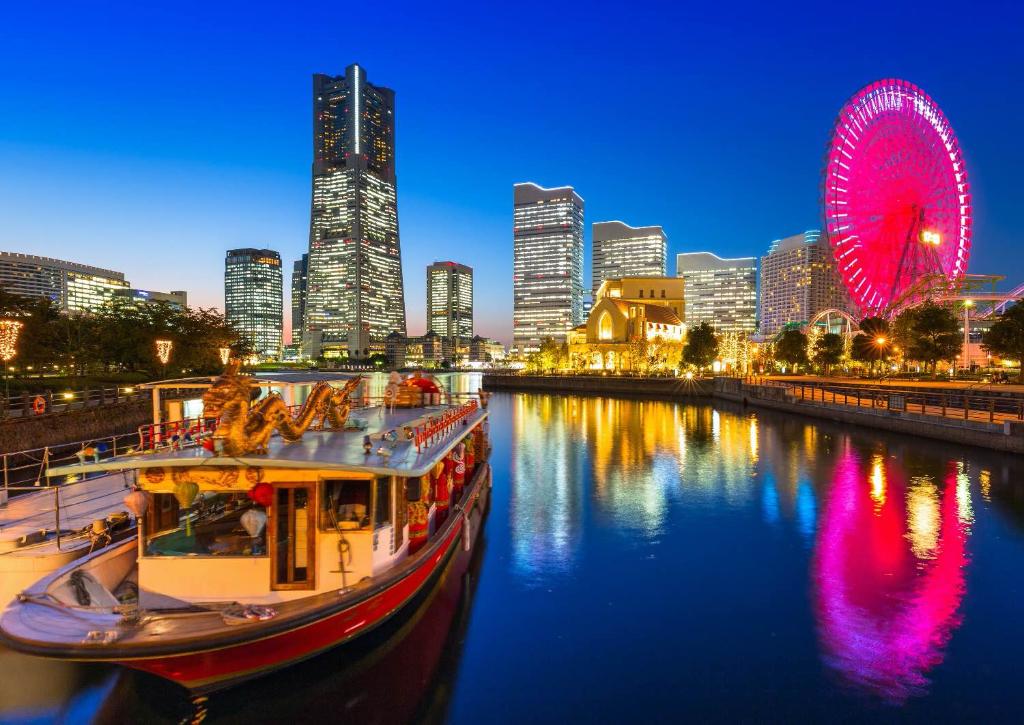
About Yokohama Yokohama is right next to Tokyo, only 30 minutes by train. It is Japan's second largest city and it has managed to maintain its very own atmosphere despite its colossal neighbour. Where Tokyo is busy, digital and hyper-Japanese, Yokohama has a more relaxed, old-fashioned and international style.
Japan's most stylish downtown The port area is called Minato Mirai and is the city's downtown. The area has fascinating modern architecture as well as old red brick warehouses dating back to the early 1900s. At this time, the port was the centre of shipping and trade abroad, and the department stores are an example of the influence of Western architecture in the city. Since the 1990s, sea trade has moved away, and the trendy urban life has moved in. The architecture of the area is formidable, and Minato Mirai is probably Japan's chicest downtown. Here, modern skyscrapers stand side by side with the former storehouses that today contain restaurants, shopping centres and galleries. Visit Landmark Tower, Japan's second tallest building after the Tokyo Skytree. From the tower's Sky Garden Observatory there are great views both in daylight as well as in the neon lit night. On clear days you can see all the way to Tokyo and Mount Fuji, but the evening view, in particular, is a spectacular experience. There are many beautiful pedestrian streets both inside the city and by the water. A little south of the port area is Chukagai, Japan's largest Chinatown. A great place to eat exciting food and look at colourful temples and shops.
Other attractions in Yokohama The Chinese influence makes Yokohama the unofficial noodle capital of Japan. In Minato Mirai is the Cup Noodles Museum, where you can learn everything the heart desires about this important Japanese invention. Near Shin-Yokohama Station is the Ramen Museum, where you can see how the noodles came to Japan from China. Here you can also eat ramen in an authentic version of a downtown noodle bar in Tokyo in 1958! In the southern part of the city is Sankeien, a large and beautiful classic Japanese garden that also has several historic buildings.
Visit this destination as part of your tailor-made trip
We believe that every trip to Japan should be unique and full of memories that last a lifetime. Our experts will help combine your favourite destinations into a single itinerary, making sure you don’t miss any of your personal highlights during your visit.
The price of this service starts at EUR 50,- and is fully reimbursable if you book your tour with us.
What is covered during the consultation?

Experience Japan your way with our experts
We are part of JTB, the largest travel company in Japan and one of the biggest in the world, with over 100 years of experience. We are passionate about this wonderful country, having spent decades designing adventurous itineraries for our clients.
Your tailor-made holiday in four simple steps
Featured in tours:.
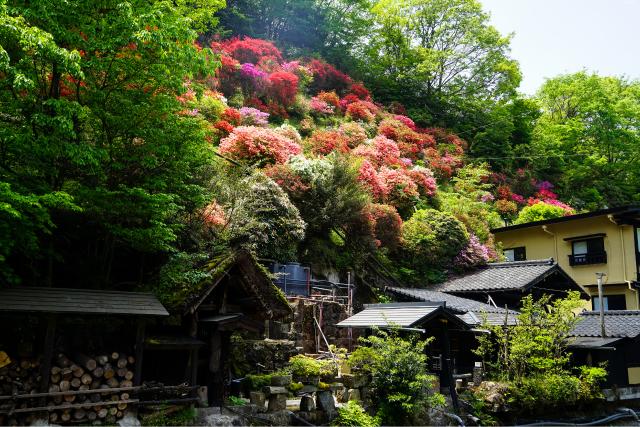
From Tokyo to Kyushu, experience the natural wonders of Japan.
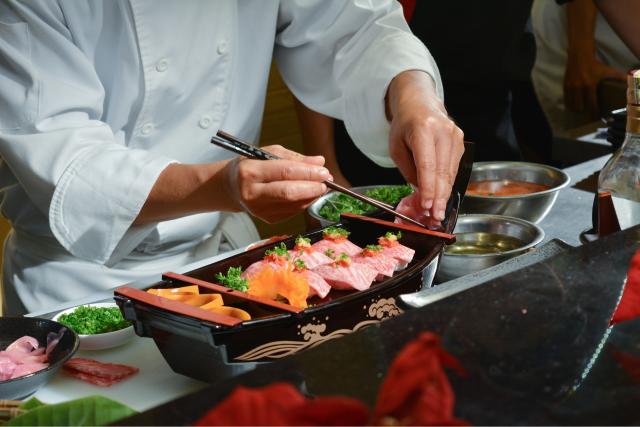
From street food to gourmet cuisine, go on a journey into Japan's unique culinary scene.
Suggested Yokohama Full Day Walk
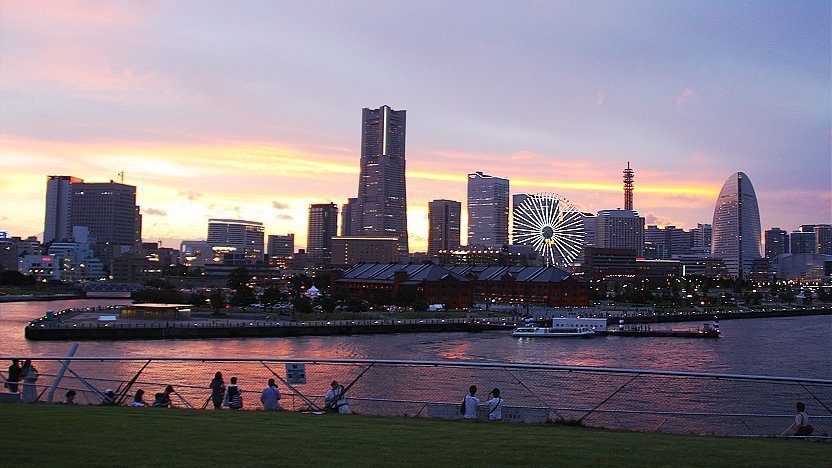
The following is a suggested five kilometer walk around Yokohama 's downtown area that visits Minato Mirai 21 and Yokohama Chinatown and leads along the city's attractive waterfront. With the suggested additions, this course can become longer or even a two day schedule.
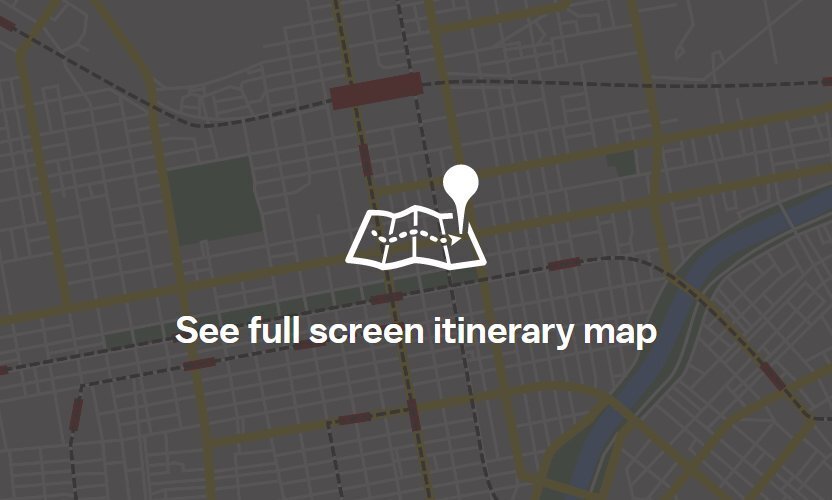
Recommended Additions

Cupnoodles Museum
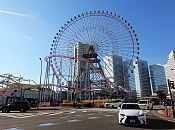
Cosmo World
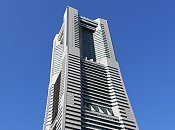
Sky Garden Observatory
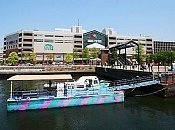
World Porters
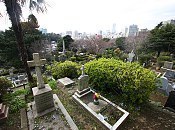
Yamate and Motomachi
Questions? Ask in our forum .
Hotels around Yokohama
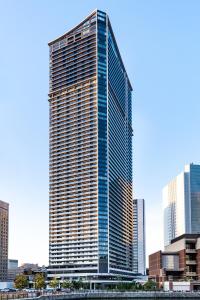
Experiences around Yokohama

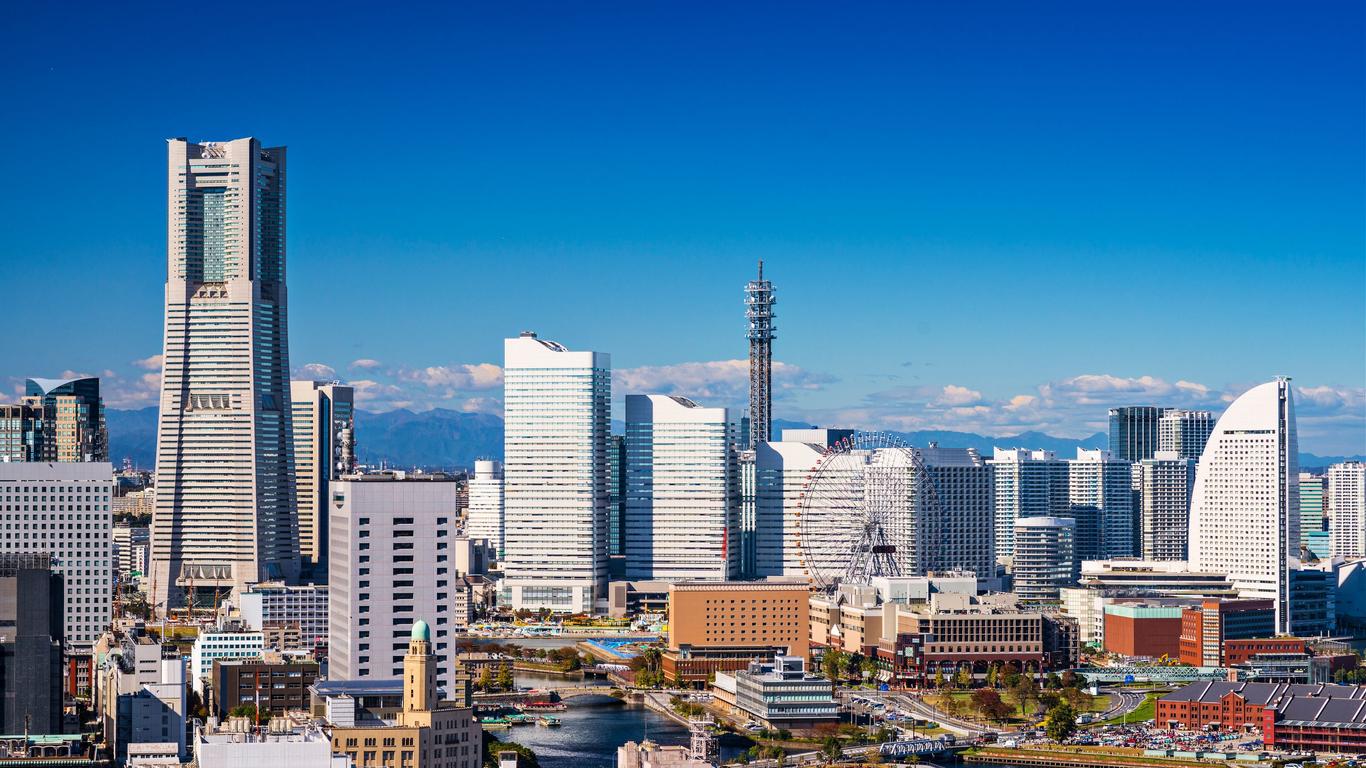
Yokohama travel guide
Yokohama tourism | yokohama guide, you're going to love yokohama.
Yokohama is full of surprises; you can stroll along the beautiful harbor in the morning and then explore the quirky Cups Noodle Museum, check out a cutting-edge art show in the evening, and cap off the night at a sizzling jazz club.
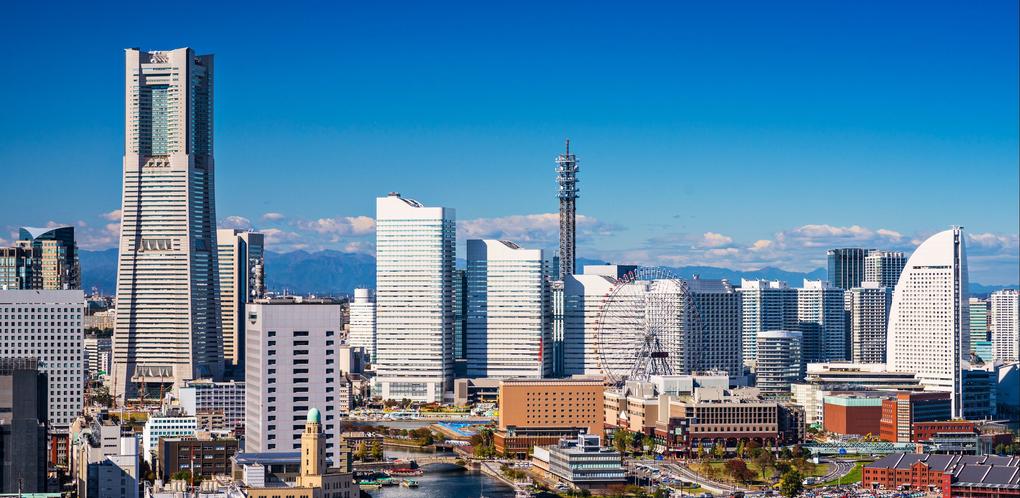
Top 5 Reasons to Visit Yokohama
1. get out on the town.
From a dining scene with international influences to tasty microbrewery beers, hot jazz clubs, or dance bars, you'll find food and nightlife options to please every taste.
2. Shop Till You Drop
Whatever you're looking for - whether it's electronics, clothing, and other consumer goods - you'll find it in the seemingly endless number of huge modern malls.
3. Enjoy Amusement Parks
You can enjoy dolphins, penguins, and more at Hakkeijima Sea Paradise, or visit the animals at the Nogeyama Zoo. From water parks to spas and more, the city will keep you entertained.
4. Escape Outside
Yokohama is home to many beautiful parks, including the picturesque seaside Yamashita Park where you'll find many street performers.
5. Chinatown
Yokohama is home to the largest Chinatown in the country, with more than 500 shops and restaurants full of bargain shopping and great eats.
What to do in Yokohama
1. red brick warehouse: where history collides with commerce and culture.
The famous Yokohama Red Brick Warehouse brings together commercial and cultural activities in a large red brick building that is a hallmark of history. Situated on the edge of the Tokyo Bay and akin to New York City's Chelsea Market, the Red Brick Warehouse has over 40 shops including oceanfront cafes, restaurants, banquet halls, food stalls, and event venues. The first floor has all the food options your palate could hope for. Once you've gorged, why not get in some cardio by shopping at any of the cute boutiques featuring local and global brands. Once you're done strolling the enclosed alleyways and sniffing out deals, head to the third floor for some slow jazz and a second go-round with a seafood buffet.
2. Minato Mirai: The Harbor of the Future
The distinctive edge of this central urban area makes Minato Mirai an integral part of the skyline of Yokohama. Amongst its plethora of high-rises looms the Landmark Tower, standing at an impressive 972 feet high. Besides this, travelers would do well to visit the area at night, when the Queen's Tower and Cosmo World Ferris Wheel are lit up to the nines. The latter offers stunning views of the harbor and bay. Once you're done, relax with a hot springs bath, head to the amusement park, or take in a couple of exhibits at the museum.
3. Landmark Tower: The View From Way Up Here
On the 69th floor of the Landmark Tower is its Sky Garden, a stunning observatory deck with a 360-degree view of Yokohama as well as the incredible Mt. Fuji, on particularly clear days. The building itself is not just confined to offices - it also houses a five-star hotel and shops, restaurants, and clinics as well as one of the world's fastest elevators.
4. Sankei-en Park: Restored and Revived
The Sankei Hara, as it is locally known, was built by Tomitaro Hara and opened in 1906. Though much of it succumbed to destruction during the Second World War, its donation to the City of Yokohama saw its beautiful revival into the space of serenity it is today. The Sankei-en Park is open to visitors to relax and roam in traditional Japanese-style garden surroundings. Its peaceful ponds, streams, and wide, meandering pathways leading up small bridges and past blossoms with the Three Storied Pagoda in the background makes this a place you'll never want to leave.
5. Shin-Yokohama Rāmen Museum: A Taste of Japan
Only in Japan would you expect to have a museum dedicated entirely to a global Japanese favorite, Ramen. If you've never tried a bowl or are just woefully unaware of its origins and evolution into the national staple it is today, the Shin-Yokohama Rāmen Museum is well worth a visit. Sort of like Caesar's Palace in Las Vegas, the building has an enclosed recreation of 1958 Tokyo in the evening, with branches of major ramen restaurants setting up shop here.
Activities & attractions in Yokohama
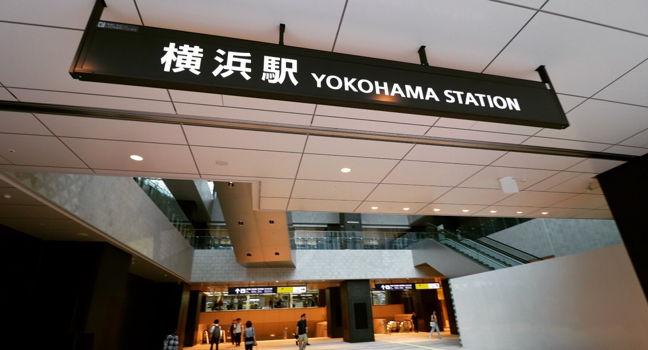
Where to Eat in Yokohama
For classic Japanese cuisine, including the traditional gyu-nabe, a beef dish, try Araiya. Set menus begin at ¥1300. The Charcoal Grill Green serves grilled steak, pork, and prawn, along with a nice selection of wines and craft beer. Main dishes start at ¥1100.
When to visit Yokohama
Yokohama enjoys warm temperatures for much of the year, with daytime highs ranging from 65 to 87 between March and November, when most visitors come to the city.

How to Get to Yokohama
The closest international airports are located in Tokyo, with the majority of international travelers passing through Narita Airport (NRT), about 60 miles from Yokohama. The Narita Express trains make the trip to Yokohama about every half hour for ¥4,380 one way.
There is extensive daily train service linking Yokohama with Tokyo and the rest of Japan provided by a number of companies, including the Tokyu Toyoko Line and the JR Keihin-Tohoku Line.
The drive from Tokyo to Yokohama takes about a half an hour one way via Route 1. The city connects to the rest of Japan via a network of highways.
There are many options when it comes to bus connections between Yokohama and Tokyo, Kyoto, Mount Fuji, and other major centers.
Airports near Yokohama
Airlines serving yokohama, where to stay in yokohama.
Stay in a convenient central location at the Navios Yokohama. For sleek modern furnishings and amenities near Yokohama Train Station, look to the Yokohama Kokusai Hotel.
Popular Neighborhoods in Yokohama
Kannai - this district includes the historic waterfront and attractions like the Marine Tower and Osanbashi Pier, the perfect spot to watch the sun set.
Minato Mirai 21 - this district of the city has a futuristic aesthetic and offers a wealth of dining and shopping options, including the huge Landmark Plaza/Queen's Square complex.
Yamate and Motomachi - these districts border each other along the hillside, where you'll find great shopping amid wonderful views of the harbor.
Where to stay in popular areas of Yokohama
Most booked hotels in yokohama, how to get around yokohama, public transportation.
The city is serviced by two subway lines, the Yokohama Minatomirai or JR East Line, where a day pass costs ¥520, and the Minato Burari or MM21 line, where a day pass is ¥500.
Taxis are plentiful in the city, with rates that begin at ¥730, increasing by ¥310 every 0.6 mile.
Parking can be at a premium in the tourist-heavy areas near the waterfront and Chinatown. Rentals from companies like Europcar start at around ¥7,500 per day.
The Cost of Living in Yokohama
Shopping streets.
Along with Minato Mirai 21, the area around Yokohama train station is where you'll find the most shopping choices, including Yodobashi Yokohama, an enormous electronics outlet.
Groceries and Other
The Grocery Market Minatomirai has a great selection of fresh foods at reasonable prices. A quart of milk costs about ¥205, and a dozen eggs about ¥235.
Niigata's Murakami City: Enjoy Fun Events, Sightseeing, and Local Cuisine!
We use cookies to improve our contents. Check the detail and update your settings here .
We use cookies to improve our services.
For more details, please click here .

- Change setting
- Food & Drink
- Accommodation
- Things To Do
- All the categories
Transportation
- Weather & Seasons
- Long-Term Stay
- Travel Tips
- Event Tickets
- About MATCHA
- Company Profile
- Things To Do in Kanagawa
- Food & Drink in Kanagawa
- MATCHA Special Features
Yokohama Flower & Premium Gastronomy

Come Enjoy Yokohama Flower & Premium Gastronomy!
Yokohama Convention and Visitors Bureau Public Interest Incorporated Foundation
What is "Yokohama Flower & Premium Gastronomy"?
Yokohama is a city of flowers. Yokohama had imported western flowers such as rose and tulip right away and has been introducing gardening culture since opening the port.
The multitude of resplendent flowers in the City of Yokohama will welcome you with sunlight shinning in early summer from open-top bus.
You will lick your lips with cuisines and drinks that represent gourmet culture of Yokohama such as ”Napolitan”,ketchup-based spaghetti originated in Yokohama and Yokohama beer.
And also you will be impressed by performance of Yokohama Geisha who are traditional and at the same time innovative.
Artwork of famous pressed flower artist will be exhibited at the venue.
Please enjoy the premium tour with beautiful flowers, amazing food, delicious drinks and fascinating Yokohama Geisha that can only be experienced in Yokohama.
Click Here For More Information
Open-top bus tour
Start accepting reservations from.
19th April (Fri) 2024
Time and Duration
9 hours (10:00~19:00)
The minimum number of participants
120,000 yen / per person (Age: 6 or above)
Open-top bus fare, lunch and dinner buffet + All-you-can-drink (Flower & Geisha Festival) Dinner buffet + All-you-can-drink
Meeting Place
DREAM DOOR YOKOHAMA HAMMERHEAD
Meeting Time
Flower & geisha festival.
2 hours (17:00~19:00)
10,000 yen / per person (Age: 6 or above)
Dinner buffet + All-you-can-drink
World BEER Museum LANRMARK plaza DOCKYARD GARDEN
Since its opening in 1859, Yokohama has grown into a vibrant international city with a history of economic and cultural exchange as a gateway to other countries. There are many spots around the city that tell the story of the opening of the port, and even today it is an open port town where many foreign passenger ships come and go. It is also a city that is constantly changing and developing, centered around the Minato Mirai 21 area, which is undergoing development with cutting-edge experience-based facilities and research and development bases for global companies. Welcome to an exciting city that combines the charms of both the sophisticated urban waterfront area and the idyllic green suburban area!
The contents on this page may partially contain automatic translation.
Related topics
Top articles.

Yokohama: Top 25 Things to Do in the Famous Port City Near Tokyo

Start planning your trip
Special Features

Popular Searches
Latest news.

Showa Kinen Park Flower Festival 2024: Enjoy Nemophila, Tulips, and More!

A Must for Nature Lovers! Win a Free Stay at Unzen Amakusa National Park

A World of Light and Color! Van Gogh Alive in Japan 2024

Cherry Blossom Light-up in Tokyo! Yomiuri Land's Jewellumination

Cherry Blossoms and Sky Lanterns! Aichi Hanami Lights 2024

Japan's Public Holidays and Long Weekends in 2024

Tokyo's Fall Foliage: Top 10 Gardens and Parks in 2023

How to Travel to Kyoto From Osaka: The Fastest and Cheapest Ways

How to Travel to Osaka from Tokyo in 2024: Price Comparison

Shinkansen: How to Buy Bullet Train Tickets
New articles.

Recommended by the Locals! Must Visit Cafes in Kusatsu City and Lake Biwa Area

A Day Trip from Kyoto: A Classic Itinerary to Enjoy the Splendid Wisteria and Japanese Shrines

Information on cherry blossom viewing spots when the Tateyama Kurobe Alpine Route opens (April 15th)

Must buy when you come to Yamaguchi! 7 recommended souvenirs (Uiro, Hagiyaki, Yamayaki dango, etc.)

Avoid the crowds! Introducing the recommended parking lots at Universal Studios Japan!
We earn a commission for products purchased through some links in this article.
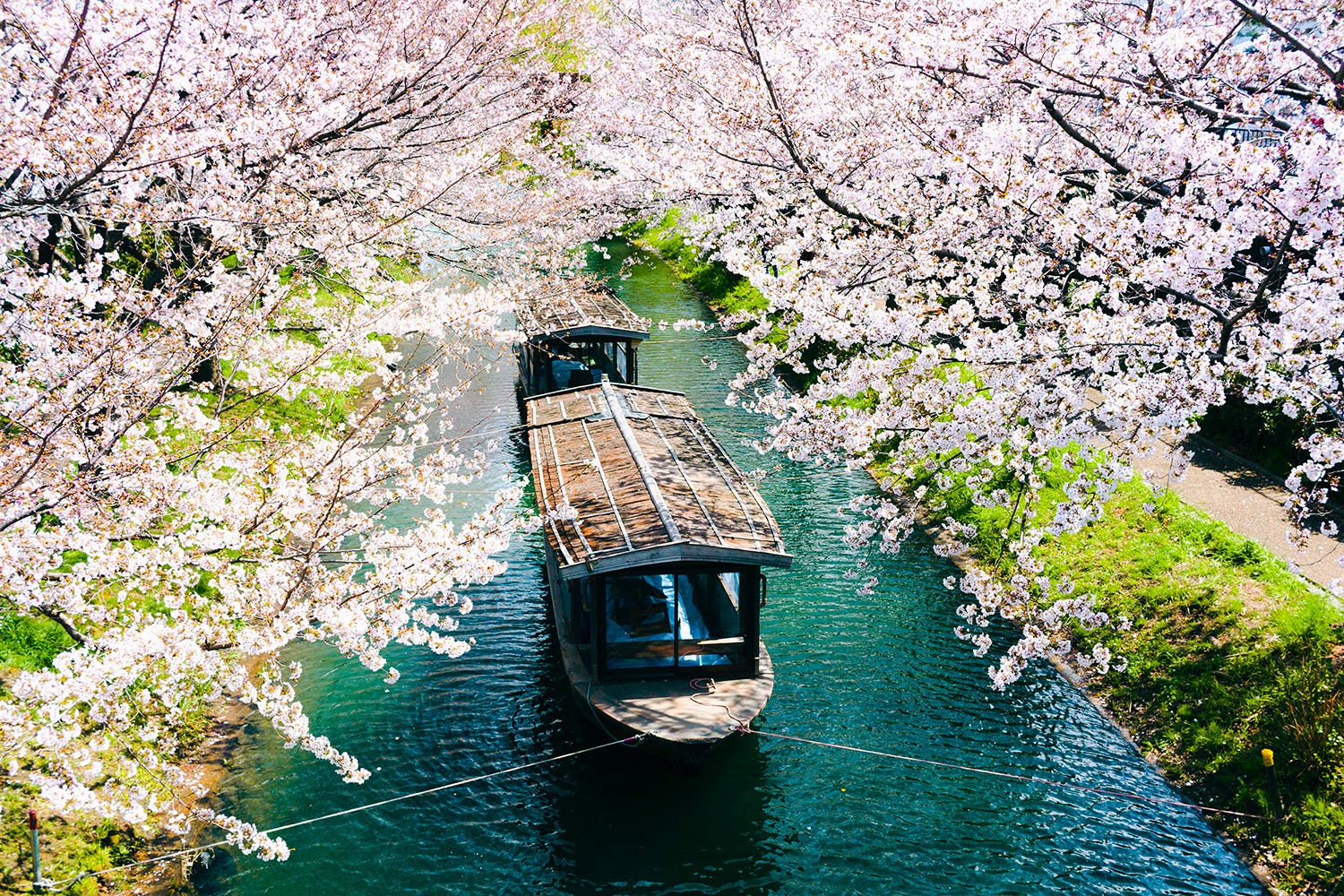
12 of the best places to visit in Japan
From Tokyo to Yokohama, these are the Japanese destinations to tick off your bucket list
There's plenty to see and do in Japan - from staring at the bright lights of Tokyo to finding peace in the scenic Japanese Alps . Many will agree that one of the best times to explore Japan is during the cherry blossom season . Its spectacular spring-time displays can be enjoyed around the country and are celebrated with picnics in the parks and seasonal parties.
While Tokyo and Kyoto are two of the most popular places to visit Japan (and rightly so as they are also some of the most beautiful destinations), there are many places beyond these hotspots, whether it's Japan's cities, islands or mountains you want to explore.
A cruise to Japan is an excellent way to visit multiple regions on one trip and can take you to some undiscovered places. If you're planning ahead for Japan's sell-out cruises, you'll want to check out Good Housekeeping's incredible spring 2025 sailing during the cherry blossom season . It's perfect for getting to know the lesser-known, underrated places, such as Niigata and Toyama.
For any traveller who has always dreamed of visiting Japan, now is the time to get planning and to help inspire your next trip, we've rounded up the best places to visit in Japan in 2024 and beyond.
Check out our favourite Japanese destinations below and visit the Japan National Tourism Organization website for more ideas on places to go.
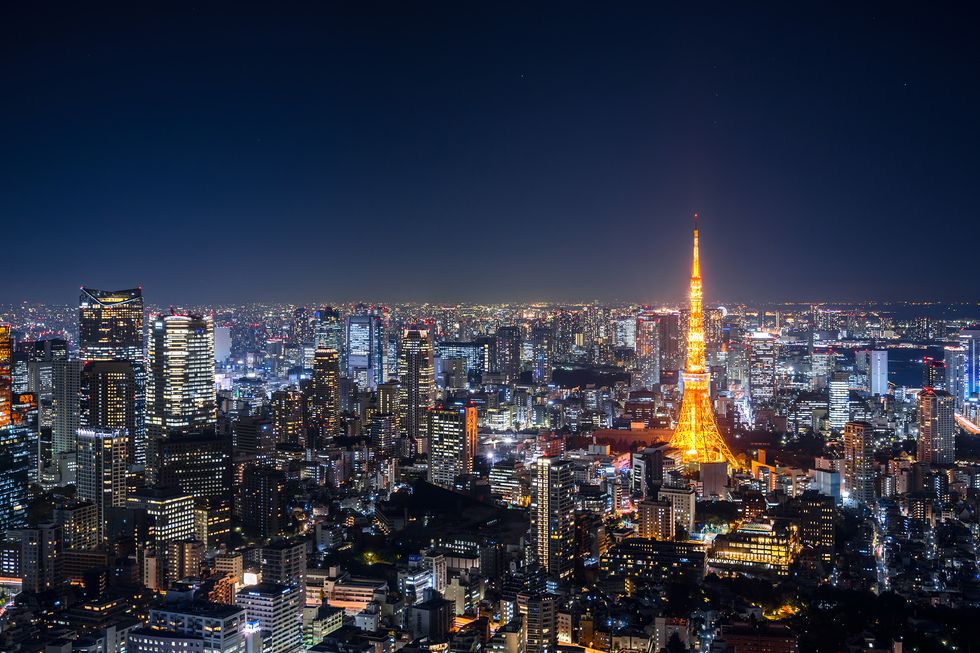
The first stop for many foreign tourists is Japan's vibrant capital and it's not hard to see why. The world’s most populous metropolis, Tokyo offers tradition and innovation, and unlimited opportunities to eat, shop and explore.
Located on Tokyo Bay in the Kanto region of Honshu, Tokyo is known for its fashion and shopping, from the trendy shopping districts of Harajuku and Shibuya, to the luxury flagships of Ginza. Want to know where to go? Shinjuku is a thriving business district; a mix of gleaming skyscrapers and atmospheric back streets with tiny bars. Asakusa is the heart of Tokyo’s downtown, with ancient temples and traditional stores.
Tokyo is a foodie's paradise too, with more Michelin-starred restaurants than any other city in the world, along with hundreds of cheap and delicious ramen shops. You'll want to explore Tokyo's dizzying array of restaurant and dining options, from themed cafés to haute cuisine.
EXPLORE TOKYO ON A 2025 JAPAN CRUISE

Japan’s second largest metropolitan area after Tokyo, Osaka is renowned as one of the most multicultural and cosmopolitan cities in the country. It's only a short shinkansen ride from Tokyo, making it a great place to visit in Japan if the capital city is your base. Visitors can step off the bullet train and into a bright and enticing city. Osaka Castle is a must-visit and home to beautiful grounds you can wander through, especially during the cherry blossom season when the spectacular blooms appear.
You'll want to explore other areas in the city too, including the neon lights of Dotombori Bridge and Osaka’s Minami area. Foodies can indulge in the famous culinary delights found in neighbourhoods such as Tenma and Ura Namba. Okonomiyaki, a savoury pancake made with shredded cabbage, flour, egg and dashi is either cooked at the table for diners or left for you to cook yourself.
Discover Osaka during a 17-day cruise holiday to Japan in spring 2025, when you might witness the spectacular cherry blossom displays in the city.
FIND OUT MORE
OSAKA HOTELS
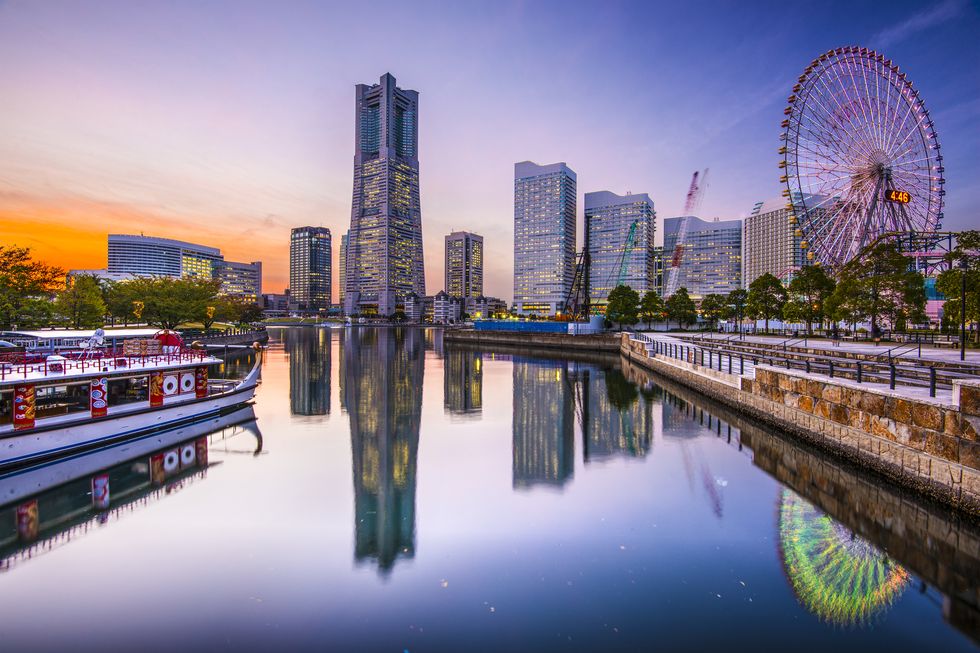
The capital of Kanagawa prefecture, Yokohama grew from a small fishing village during the Edo Period into Japan’s second largest city. A popular city among expats, Yokohama is also home to one of the world’s largest Chinatowns, and preserves some former Western residences in the Yamate district. While here, you must visit one of the city’s traditional and serene Japanese landscape gardens, Sankeien Garden, where you'll find winding trails set among historic buildings.
Another highlight is the bustling new city centre, Minato Mirai, which sits along the water. There's something for everyone here, from shopping centres and an amusement park to museums and relaxing hot spring baths.
Visit Yokohama on the last day of Good Housekeeping's cruise around Japan during the cherry blossom season in 2025.
YOKOHAMA HOTELS
Japanese Alps
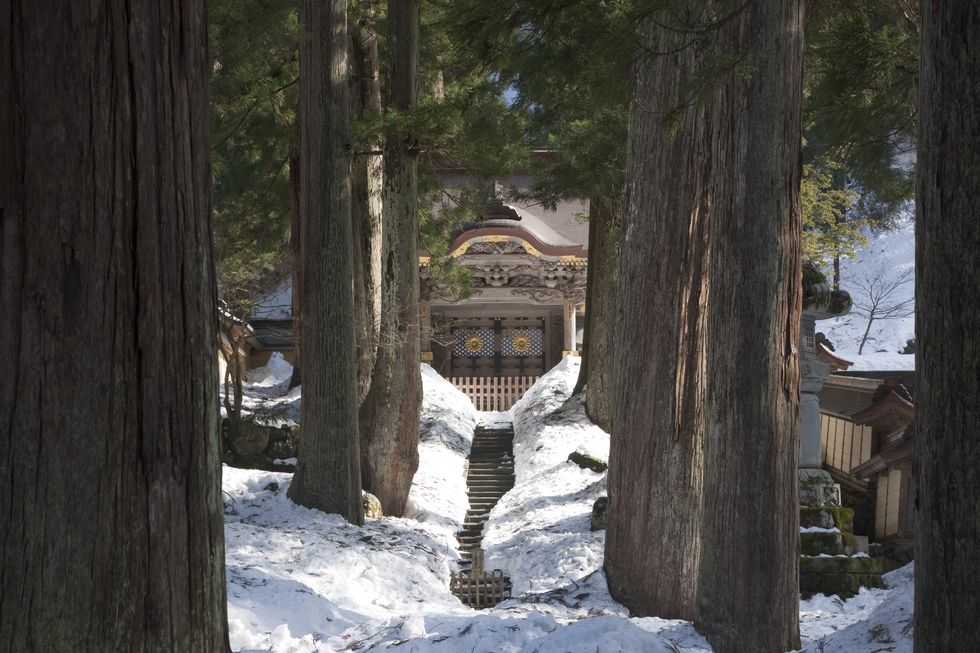
The Japanese Alps are a series of spectacular mountain ranges in central Honshu, which are perfect for those who wish to escape the buzz of the country's most popular cities. Think thick pine forests, snow-tipped peaks and teal rivers. Only two hours from Tokyo, this natural paradise offers an excellent place to explore rural Japan.
The Alps are just the place for climbers, skiers, hikers and nature fans. Yamanaka Onsen is set in the mountainous area of Kaga Onsen, situated along a beautiful gorge. The hot spring resort is not only a top-spot for wellness but for traditional crafts – it's Yamanaka lacquerware has a 400-year history in the region. You can discover the contemplative heart of Zen Buddhism's Soto sect at Eiheiji (pictured), a massive temple complex just outside the city of Fukui. Built by the Buddhist monk Dogen (1200-1253), it has over 70 buildings set amid cedars in the mountains.
Meanwhile, the city of Kanazawa offers rich cultural heritage and a history of artistic innovation and excellence. One of the most important centres for culture and art during the Edo period, it remains a superb place for art lovers and culture enthusiasts.
KANAZAWA HOTELS
See the stunning Japanese Alps on a Good Housekeeping tour from Tokyo to Osaka in 2024 or 2025.
EXPLORE THE JAPANESE ALPS
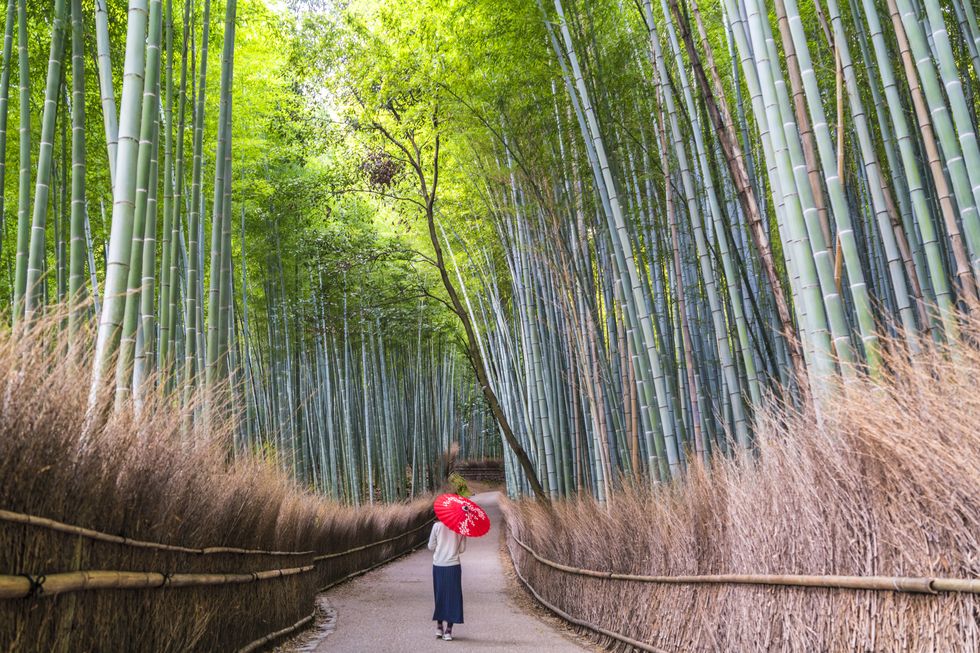
Ancient temples, traditional teahouses and peaceful gardens: Kyoto is all about exploring historic Japan. A city of nearly 2,000 temples and shrines, it's Japan's spiritual heart and a true embodiment of Old Japan. Beyond the futuristic Kyoto Station, modern shopping complexes and sleek luxury hotels lies a city with celebrated centuries-old wonders, breathtaking temples and serene Zen gardens.
Kyoto effortlessly blends the past and present and is a must-see destination for history buffs, art lovers and outdoor enthusiasts.
While here, you'll want to visit the grand temples, shrines, palaces and gardens in and around the city. Be sure to dine on delicious multi-course kaiseki cuisine and stay in a traditional ryokan (Japanese inn), too.
Visit ancient Kyoto as part of our Good Housekeeping 13-day tour across the Japanese Alps.
READ MORE ABOUT OUR JAPAN TOUR
KYOTO HOTELS
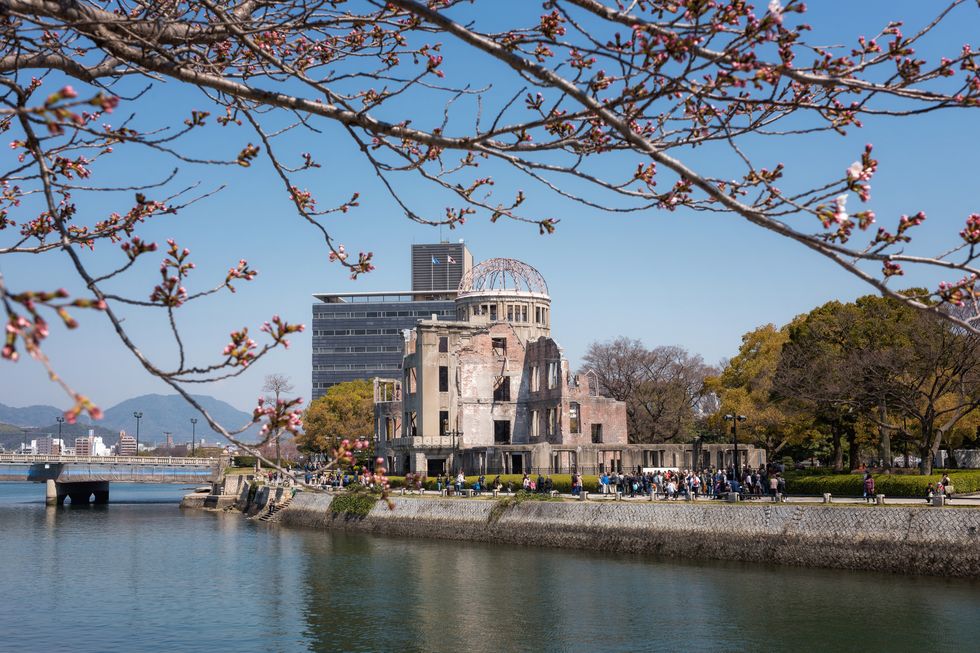
The vibrant city of Hiroshima has a complicated history, great food and friendly locals. While it's probably most famous for being devastated by a nuclear attack during World War II, Hiroshima as a city promotes peace and understanding.
Every year on 6 August, a memorial service is held to commemorate the victims of the 1945 attack. Thousands write messages of peace on paper lanterns that are lit at sunset to float down the river past the iconic remains of the Atomic Bomb Dome.
During a visit, be sure to check out the Peace Park and Atomic Bomb Dome. You should also taste Hiroshima's version of okomiyaki, a local delicacy. Another highlight is going to nearby Miyajima to see its deer and picturesque floating shrine.
Explore Hiroshima during a 2025 spring-time cruise to Japan, where you'll have time to visit the war memorials, shrines and temples.
HIROSHIMA HOTELS
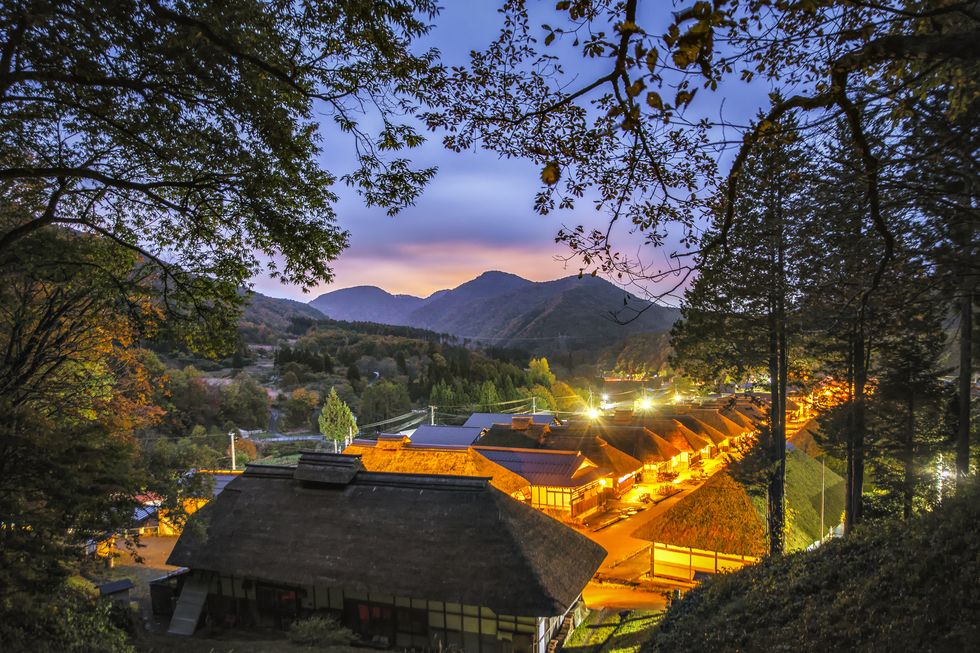
Japan's Tohoku region is home to unspoiled rural landscapes and historical treasures. This northeastern wilderness is a huge region encompassing six rural prefectures that boast custom and heritage. The devastating earthquake and tsunami that struck in 2011 brought out the resilient nature of Tohoku's people, and local passion and pride are putting the area back on its feet.
There's a lot to be proud of, too – dramatic landscapes, history-rich sites, craft sake and a host of outdoor activities like rafting, hiking and skiing.
During a trip to the region, you can enjoy the explosive sound, colour and drama of the Aomori Nebuta Festival in summer. Or wander the temples, gardens and archeological sites of World Heritage-listed Hiraizumi in Iwate.
Don't miss an adventure along Hachinohe's section of the Michinoku Coastal Trail and foodies will want to taste the sweet cherries of Yamagata and the juicy peaches of Fukushima.
TOHOKU HOTELS
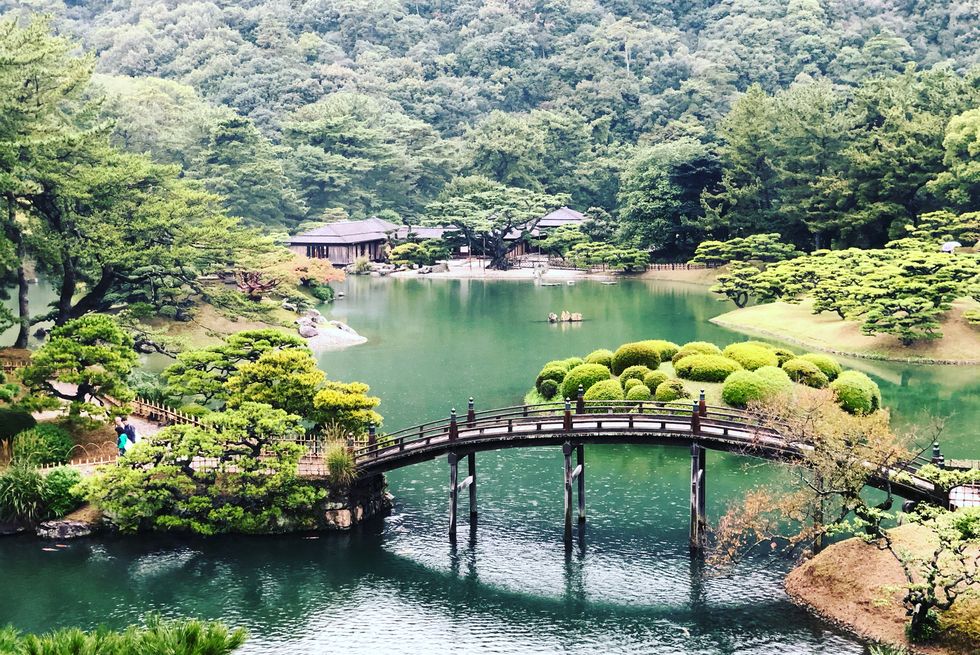
Shikoku might be the smallest of Japan's four main islands, but there are plenty of natural and culture sites to explore. Traditionally remote, Shikoku is now easy to access from Honshu.
The island offers picturesque coastline on the glittering Seto Inland Sea, legendary udon noodles and picture-perfect onsen. Its stunning Iya Valley, Pacific coastline and free-flowing rivers are best explored on hiking, kayaking and surfboarding adventures.
While here, you can sample the famous udon noodles of Kagawa, take the first steps of the 88 Temple Pilgrimage at temple number one, Ryozenji, in Tokushima, and relax in the hot waters of Dogo Onsen.
SHIKOKU HOTELS
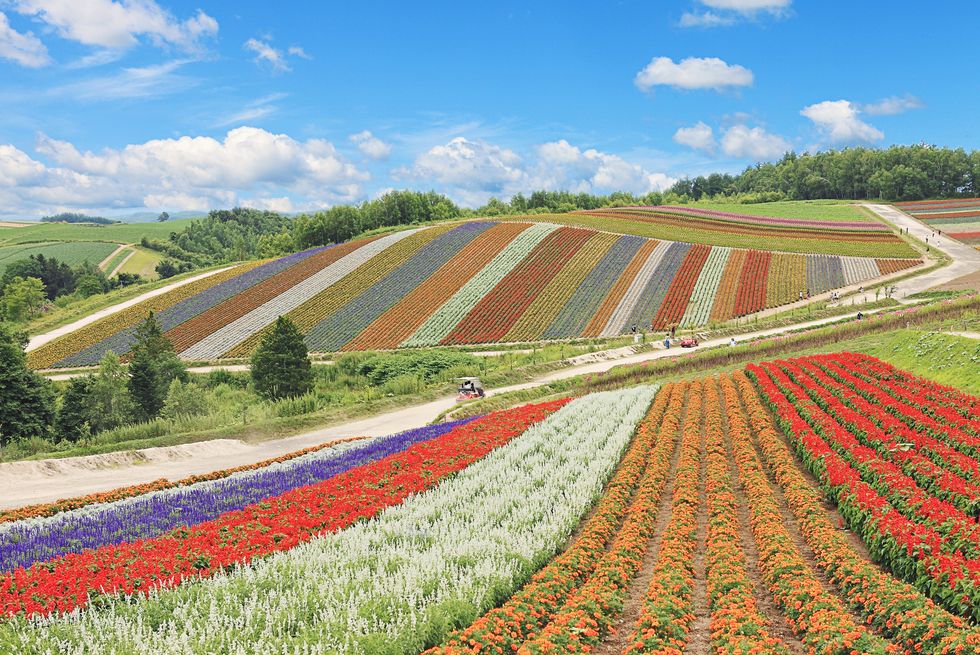
The island of Hokkaido is a popular destination for skiing and snowboarding in winter, thanks to top resorts like Niseko, Rusutsu and Furano. Sapporo, its main city, is also famous for beer, ramen and the annual Sapporo Snow Festival. It's not all about winter fun here, though.
Hokkaido’s mild summers also provide relief from Japan’s humidity, and offer ideal conditions for hiking and exploring the many national parks. Much of Hokkaido is wild and unspoiled, with hot springs and volcanic lakes, so you're never too far from nature.
While here, explore the culture and traditions of the indigenous Ainu people at Lake Akan, and journey to the Shiretoko Peninsula to see free-roaming brown bears, foxes and deer. Visiting in the summer? Everyone will be dazzled by the rolling hills of Furano's lavender farms, while foodies will love dining on fresh seafood including succulent crab, salmon and fresh sushi in Hokkaido, too.
Get to know Hokkaido on Good Housekeeping's 2025 cruise, which stops in the city of Hakodate, which is overlooked by the 334-metre Mount Hakodate.
HOKKAIDO HOTELS
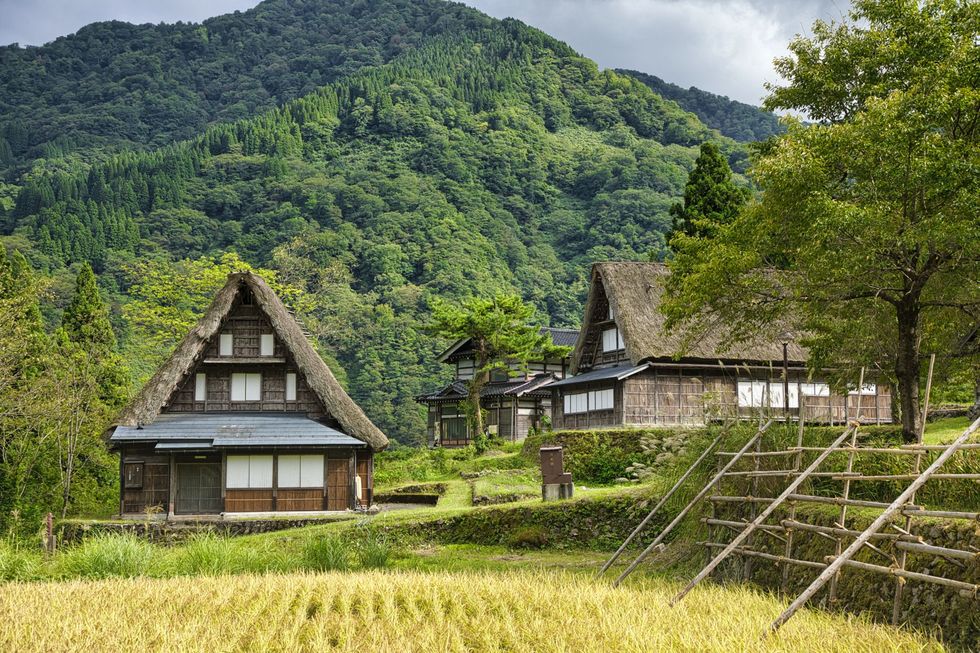
We love the distinct seasons in the Toyama region. It lies around two hours north of Tokyo, blanketed by snow in winter and blooming with cherry blossoms in spring. While Toyoma City is renowned for its fresh seafood, the wider region is particularly lovely. Perhaps unsurprisingly, given it's surrounded by rushing rivers and lush mountains.
This beautiful pocket of Japanese countryside is home to the UNESCO-listed area of Gokayama, which comprises the two villages of Ainokura and Suganuma, known for their carefully preserved thatched buildings called gassho-zukuri . The roofs are designed to resemble the hands of Buddhist monks’ pressed together in prayer. In winter, the snow-covered gassho-zukurie take on the look of a magical, fairy tale scene.
Join a Japanese cruise departing in spring 2025, and you’ll call at Toyama as the cherry blossom emerges. On an excursion, you can make the scenic hour-long journey from the cruise terminal to Gokayama, passing through the Nanto area of Toyama, where the Shogawa River and Oyabegawa rapids flow.
VISIT TOYAMA ON A 2025 JAPAN CRUISE
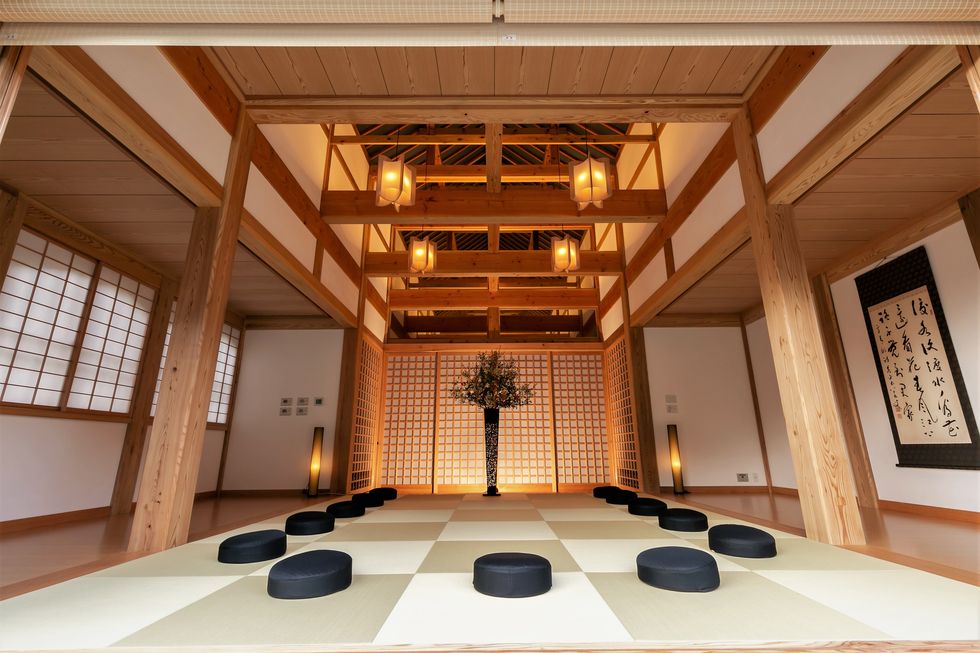
A 2024 extension to Japan's bullet train network makes access to a beautiful region deep in the mountains of the Fukui Prefecture much more accessible for visitors. It offers the chance to visit locations where you can join in with traditional rituals and learn more about Japanese culture in more remote pockets of the country.
The new train journey whisks visitors to locations like Eiheiji, where you’ll find one of the main temples of Zen Buddhism, founded in 1244. It’s a spiritual place amid mountainous scenery and ancient woodland, and guests are invited to join the practice. On departure, guests are presented with a goshuin , a traditional document written in exquisite Japanese calligraphy to certify their visit.
Next to the temple is the Zen Village, where you'll find the beautiful Hakujukan hotel, a sustainably built ryokan. As part of their stay, guests can partake in Zen meditation, known as zazen , before soaking in an open-air bath.
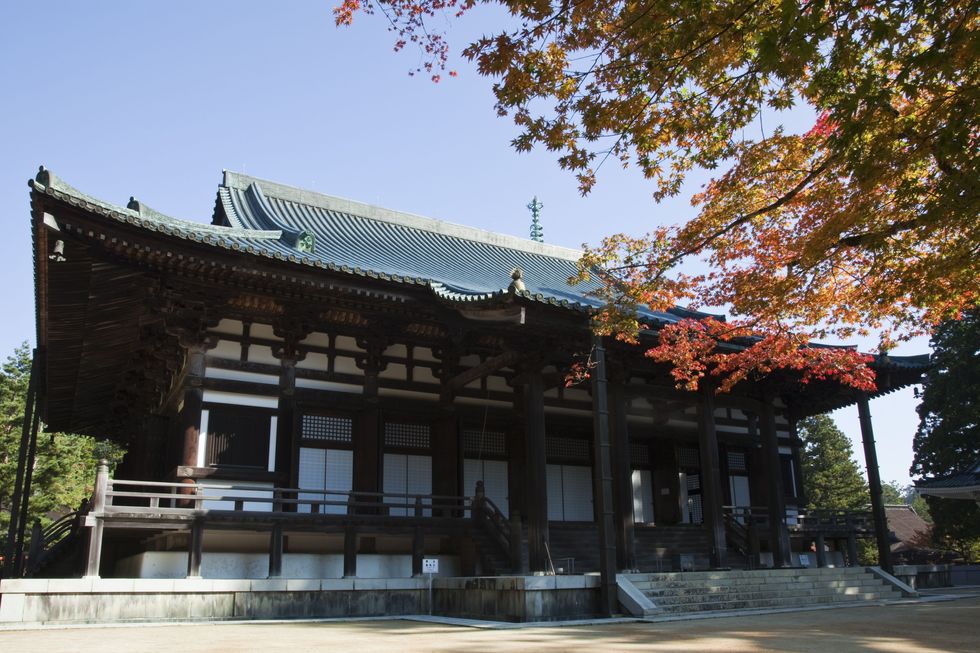
Koyasan, also known as Mount Koya, is thought by many as the most sacred place in all of Japan. Home to the centre of Shingon Buddhism, a sect that was brought to Japan in 805 by Kobo Daishi, one of the country's most prominent Buddhist monks, this mountain settlement comprises over 100 monasteries and temples.
The Shingon headquarters sit within the Kongobuji temple, which is open to visitors. Here you can learn about how Daishi founded the settlement and visit peaceful Banryutei Rock Garden, Japan’s largest rock garden.
Thanks to its verdant peaks and winding valleys, Koyasan is a popular place for hiking and is the starting point for the Shikoku Pilgrimage, a holy route that stretches roughly 750 miles and takes in 88 temples.
Koyasan is easy to access from Osaka via train for a day trip, but stay the night in shukubo (traditional temple lodgings) and you can enjoy a more immersive experience, interacting with monks and sampling their vegetarian cooking.
Visit serene Kōyasan part of Good Housekeeping's 13-day Japan tour.
EXPLORE KOYASAN ON A JAPAN TOUR
KOYASAN HOTELS

@media(max-width: 64rem){.css-o9j0dn:before{margin-bottom:0.5rem;margin-right:0.625rem;color:#ffffff;width:1.25rem;bottom:-0.2rem;height:1.25rem;content:'_';display:inline-block;position:relative;line-height:1;background-repeat:no-repeat;}.loaded .css-o9j0dn:before{background-image:url(/_assets/design-tokens/goodhousekeeping/static/images/Clover.5c7a1a0.svg);}}@media(min-width: 48rem){.loaded .css-o9j0dn:before{background-image:url(/_assets/design-tokens/goodhousekeeping/static/images/Clover.5c7a1a0.svg);}} Travel
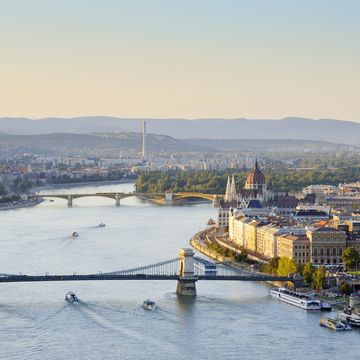
The best river cruises

The best cruises for 2024
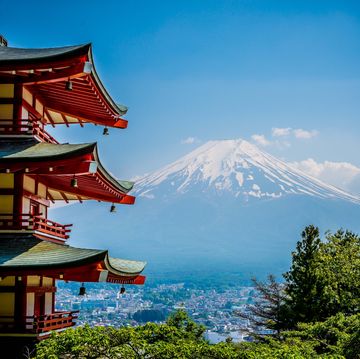
5 amazing holidays to Japan

The best spring holidays for 2024
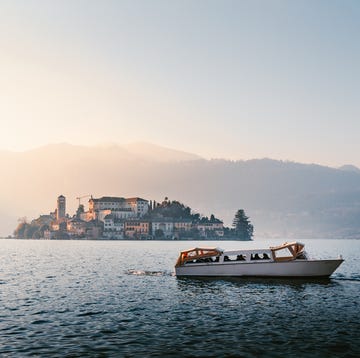
Lake Orta is the hidden gem of the Italian Lakes

Best time to visit Japan: Here's when to go
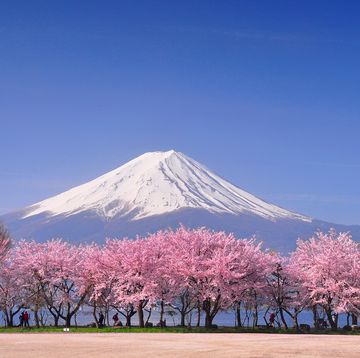
Surprising things about Japan's cherry blossom
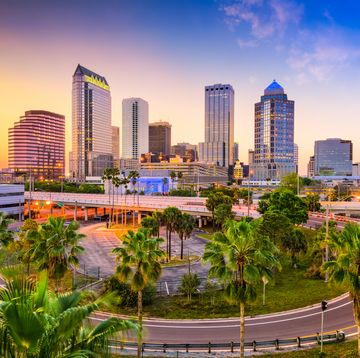
A guide to Tampa, the overlooked city in Florida
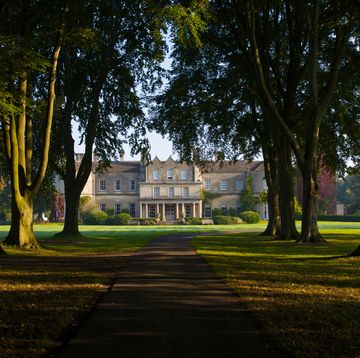
The best hotels in Wiltshire for a bucolic break

Michael Portillo is back with a new travel series
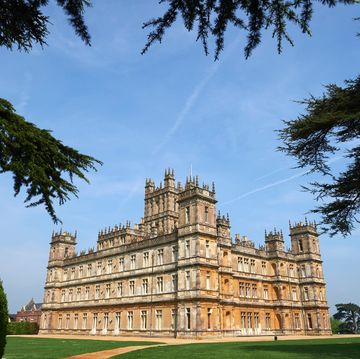
A look inside Highclere Castle
Nomadic Matt's Travel Site
Travel Better, Cheaper, Longer
The Perfect 7-Day Japan Itinerary for First-Time Visitors

Japan captured my heart from the moment I firs visited. The delicious food, the rich culture, breathtaking landscapes, vibrant history, and the very friendly and polite people – it all blew my mind.
But Japan often feels impenetrable, especially to first-time visitors. While I think Japan deserves a minimum of 10 days, I get that some people might only have a week, so I wanted to write this, my ideal seven-day itinerary for Japan for a first-time visitor.
With only a week, there’s not much you can see unless you really rush it. And I don’t think you should do that.
So this itinerary only focuses on Tokyo and Kyoto (the most popular destinations) as well as some day trips from each. If you wanted to rush things a little, you could add in Osaka (more on that at the end).
(Note: If you purchased a Japan Rail Pass , activate it on arrival. That way, you can take advantage of the free JR trains throughout the city.)
Table of Contents
Japan Itinerary Day 1: Tokyo
Japan itinerary day 2: tokyo, japan itinerary day 3: tokyo, japan itinerary day 4: kyoto, japan itinerary day 5: kyoto, japan itinerary day 6: nara, japan itinerary day 7: tokyo, an alternative itinerary.

Tsukiji and Toyosu Fish Markets Cure your jet lag with some food! In 2018, Tokyo’s main fish market moved to Toyosu. It is now twice the size of Tsukiji (the old one), making it the largest such market in the world. Here you can eat fresh sushi for breakfast, just a few feet from where it was hauled in from the sea, while marveling at the chaotic atmosphere.
You can still head to the old market in Tsukiji to eat, shop, and wander as well. I like it a lot, because there are more food options! Food and drink tours of the Tsukiji Outer Market are available for around 15,000 JPY.
Toyosu Fish Market is open Monday-Saturday 5am-5pm, though most shops don’t open until 7am. Admission is free, but you have to pick up a visitor’s pass when you enter. Tsukiji Fish Market’s hours vary by shop (usually 5am-2pm). Admission is free.
teamLab Planets This digital art installation is a multi-sensory and immersive experience in which you become part of the artwork, walking barefoot through the four exhibition spaces and gardens as you interact with the installations’ elements in unique ways. It’s really fun! TeamLab is generally sells out in advance, so I recommend getting your tickets online ahead of time .
Take a walking tour Walking tours are a great way to get the lay of the land while connecting with a local guide. I always go on one or two when I arrive somewhere. Tokyo Localized offers many free tours, including a classic overview and ones of both the famed Harajuku and Shinjuku neighborhoods. Its Imperial Palace tour would be the most convenient one after teamLab.
The Imperial Palace Formerly Edo Castle, the Imperial Palace was built in the 15th century, and some of the walls and moats from that time are still in use to this day. When the emperor moved from Kyoto to Tokyo in 1869, he took Edo for his new palace and renamed it. While you can’t go inside, it is surrounded by beautiful grounds, a moat, and a park worth wandering through. You can also see the changing-of-the-guard ceremony (though it’s relatively low-key and unassuming). Admission to the grounds is free.
Shinjuku Gyoen National Garden This park is over 144 acres and home to some 20,000 trees. Most of the original park was destroyed in World War II but was rebuilt and reopened in 1949. During spring, it is one of the best places to see cherry blossoms. My favorite area is the landscape garden, which has several ponds with bridges and islands. It’s a peaceful oasis away from the urban hustle and bustle.
Depending on how you feel relative to your jetlag, you could fit a few more activities before you end your day. Check out this post for suggestions .

- Senso-ji – This is Tokyo’s most popular and famous temple. Beautifully painted, it sits in a scenic spot near a pagoda and the lovely Kaminari Gate. There’s a huge statue of Kannon, the goddess of mercy, inside the main hall. It’s very busy during the day, so maybe check out the grounds in the evening.
- Asakusa Shrine – This nearby Shinto shrine is much more peaceful, with fewer visitors, but with people praying, meditating, or performing traditional rituals. It was built during the Edo period (1603–1868) and survived the air raids of World War II.
Afterward, head to Ueno Park . Spanning over 133 acres, Ueno Park was established in 1873 on land formerly owned by a 17th-century Buddhist temple. It gets super busy in cherry blossom season, as there are over a thousand trees here. Throughout, you’ll find various stalls and vendors selling snacks, drinks, and souvenirs. On weekends, there are usually cultural events or festivals showcasing traditional arts, music, and dance. Four of Tokyo’s main museums are here:
- Tokyo National Museum – Established in 1872 on the north end, this massive building is the oldest and largest art museum in Japan. It houses one of the world’s largest collections of art and artifacts from Asia, particularly Japan.
- Tokyo Metropolitan Art Museum – This museum showcases rotating exhibitions of contemporary and traditional Japanese art.
- National Museum of Nature and Science – This museum features a wide range of permanent and temporary exhibitions covering natural science and history.
- Tosho-gu Shrine – This beautiful 17th-century Shinto shrine has carved gold doors and other ornate carvings. It’s worth seeing up close!
Afterward, walk down to Akihabara to explore the video game parlors, arcades, and anime shops. This very buzzy area is ground zero for all things electronic, and it’s fun to play many of the games. This is where you’ll find the famous maid cafés, where servers dress up as maids and serve you food and drinks. These range from big touristy ones to holes-in-the-wall (the girls on the street are promoting the latter, which are a lot more culturally fun). They aren’t cheap, though, as you have to buy drink packages and pay a fee, but they’re kitschy and fun.
In the evening, visit Shinjuku and then drink in Golden Gai . In Shinjuku, you’ll find a plethora of cool bars, bright lights, and tiny hole-in-the-wall eateries. Be sure to wander down Memory Lane (aka Piss Alley) for tiny izakaya joints and bars. Afterward, head over to Golden Gai, a warren of narrow alleyways with a bit of a red-light-district feel, flanked by diminutive backstreet bars. It’s quite touristy but also a lot of fun. I’ve had some wild nights here!
With Arigato Tours , you’ll learn about the neighborhood while stopping to sample Japanese classics like sushi, yakitori, and ramen. The 23,900 JPY cost includes a drink and dishes at four stops.

Kamakura Here you can see a 13-meter (43-foot) bronze statue of Buddha that was built in 1252. It was initially constructed within Kotoku-in Temple, but that has since been washed away by several storms, so it now sits in the open air. Admission to enter the temple grounds is 300 JPY, while it’s 20 JPY to go inside the statue. The journey there — around an hour — is free with a Japan Rail Pass .
Tokyo Disneyland I’m a sucker for Disney. You’ll find many of the same classic rides from Disney World here, like Splash Mountain, Big Thunder Mountain, The Haunted Mansion, and everyone’s favorite teacup ride, The Mad Tea Party. But there are several unique attractions as well, like Pooh’s Hunny Hunt and Journey to the Center of the Earth.
Ticket prices vary depending on the day and time, but full-day admission begins at 7,900 JPY for adults and 4,400-6,200 JPY for children. It’s best to book in advance .
Mount Fuji Mount Fuji is located an hour outside of Tokyo. An active stratovolcano (which last erupted in 1708) and covered in snow for almost half of the year, it stands an impressive 3,776 meters (12,389 feet) and provides one of the most iconic views in the country. One of the Three Holy Mountains of Japan, Mount Fuji is both a Special Place of Scenic Beauty and a UNESCO Cultural Site. In the summer, the mountain is open to hikers, who take 5-12 hours to reach the summit (traditionally, they depart at night to arrive at the top for the sunrise).
If you don’t want to hike, you can simply visit on a day trip. There are buses that can take you partway up, where you’ll be offered sweeping vistas of the surrounding area. Guided day tours from the city cost around 12,000 JPY.

Wander the Bamboo Forest For a relaxing break, head to Arashiyama and let the dense and towering stands of bamboo envelop you. Located near the famous Tenryu-ji temple, it’s one of the most beautiful places in the entire country. It’s not that big, but there are some hidden areas to explore. Just make sure to arrive early if you want to enjoy it without the crowds (it fills up fast after sunrise).
While there, I would also recommend visiting the Okochi Sanso Garden, which (along with the home) belonged to the famous Japanese actor Denjir? ?k?chi (1898–1962). It’s not free (it’s 1,000 JPY), but it’s really nice and has some wonderful views.
Visit the Golden Pavilion Originally built in the late 14th century as a retirement villa for the shogun (military governor), this iconic structure was later converted into a Zen Buddhist temple. The present-day edifice dates only to the 1950s, however, when a monk attempting to kill himself burned the historic original to the ground. The rebuilt temple is covered in brilliant gold leaf, symbolizing purity and enlightenment. Each of the three stories exhibits a different architectural style. Completing the scene are the serene reflecting pool and traditional Japanese gardens that contain lush foliage, manicured trees, and scenic walking paths.
1 Kinkakuji-cho, Kita-ku, Kyoto-shi, Kyoto, +81 075-461-0013, shokoku-ji.jp. Open daily 9am-5pm. Admission is 500 JPY.
Admire Ryoan-ji Temple This is my favorite temple in Kyoto. Originally established in 1450 as a residence for a high-ranking samurai, it was soon converted into a Zen temple and is now a UNESCO World Heritage Site, with a mausoleum that houses the remains of seven emperors. Its traditional rock and sand garden is considered one of the best in the country. There’s also a teahouse where you can experience the traditional Japanese tea ceremony ( chanoyu ) as you overlook the Kyoyochi reflecting pool.
There are other temples in the area to check out as well:
- Daitoku-ji Temple – This massive complex dating back to 1315 covers almost 60 acres. It contains several dozen temples and is a good place to see a variety of Zen gardens and architectural styles. It’s also deeply linked to the Japanese tea ceremony, as several of the country’s most noteworthy masters studied here.
- Toji Temple – This is home to Japan’s tallest pagoda (five stories high). Founded in 796, just after Kyoto became the capital, it was one of only three Buddhist temples allowed in the city.
Go on a sake brewery tour Kyoto has a sake (rice wine) brewing tradition going back 400 years and is known for some of the best in the world, due to using the area’s pure natural spring water in the brewing process. Arigato Tours offers an excellent three-hour tour of Fushimi (the brewing district) for 23,320 JPY, including stops at several breweries, a guided tour of the Gekkeikan Okura Sake Museum, and tastings.

See the Fushimi Inari Shrine This mountainside Shinto shrine, dating back to 711, is dedicated to Inari, the god of rice and prosperity. It’s known for its thousands of vibrant orange torii gates that form a network of trails leading up Mount Inari. You can hike the trails on your own while enjoying panoramic views of Kyoto below or join a guided hiking tour , on which you’ll get off the paved paths and into hidden bamboo groves. Get here as early as possible to avoid the crowds.
68 Fukakusa Yabunouchicho, +81756417331, inari.jp. Open 24/7. Admission is free.
Walk around Higashiyama Spend an afternoon walking along the narrow streets of one of the oldest and best preserved districts on your own or on a walking tour . The traditional machiya buildings (traditional wooden townhouses) are filled with small shops selling local specialties and handicrafts, as well as restaurants and teahouses. It’s a popular area in which to participate in a tea ceremony . Another nice place to stroll in this neighborhood is the Philosopher’s Path, which follows a cherry-tree-lined canal that’s beautiful and meditative even when the blossoms aren’t in season.
Visit Kiyomizu-dera One of a number of UNESCO sites in ancient Kyoto, Kiyomizu-dera (meaning “pure water temple”) is located in the foothills of Mount Otowa in the eastern part of the city. It’s one of the most famous temples in all of Japan. It was established in 778, but most of the existing buildings date to the 17th century. There’s not a single nail used in the construction, which becomes all the more impressive once you see how large the temple is, which is best known for its wooden terrace that juts out over the hillside. The temple’s name comes from the nearby waterfall whose waters (from which you can still drink today) are said to have wish-granting and healing powers.
1 Chome-294 Kiyomizu, +81 75-551-1234, kiyomizudera.or.jp. Open daily 6am-6pm. Admission is 400 JPY.
Explore Shorin-ji Temple This small temple dates back to the 16th century. What makes it worth visiting is its meditation classes. You’ll get to tour the temple and then be instructed in zazen , the Japanese style of meditation. It’s a very unique experience and something that I think will add a lot of depth and nuance to your visit (especially if you’ve seen a lot of temples). Just make sure to dress comfortably.
15 Chome-795 Honmachi, +81 75-561-4311, shourin-ji.org. Open daily 10am-4pm. Admission is 800 JPY.
Wander the Nishiki Market Nishiki Ichiba is now one of the biggest indoor markets in town. Known as “Kyoto’s Kitchen” and spanning over five blocks, it is full of vendors selling traditional dishes from the region, classic Kyoto souvenirs, and really just about anything else. There are over a hundred stalls here, many of which have been in the same family for generations. Opening hours depend on the shop but are typically from 9am to 6pm.
To dive deeper into Japanese food culture, you can take a food tour of the market . It’s the best way to learn about all the food you’ll see, as well as the market’s history.
Explore Gion Gion, the historic geisha district, is renowned as being one of the most iconic and atmospheric areas of town. It’s known for its traditional wooden machiya houses, narrow alleyways, cobblestone streets, and preservation of geisha (known locally as geiko) culture. Lining the main street are ochayas (teahouses where geishas entertain), small shops, and many restaurants, ranging from upscale kaiseki restaurants serving traditional Kyoto cuisine to casual eateries.
To really learn more about this amazing party of town and its past, take a walking tour of Gion . You’ll learn a ton and get a lot of context. They cost around 1,800 JPY.
At night, go to the Pontocho Row , a narrow street lined with restaurants, hole-in-the-wall bars, and jazz clubs. It’s one of the more lively areas in Kyoto.

Nara was the capital of Japan in the eighth century, so there are lots of buildings and temples here that are upwards of a thousand years old (which is rare in Japan, due to the prevalence of fires and earthquakes, as well as World War II). Some things to do:
- Frolic with deer – The real draw in Nara are the deer. Since the 17th century, those in and around the city have been considered sacred. You can buy crackers to feed them or just watch them stroll around carefree.
- See the Buddha – Don’t miss a visit to Todai-ji, the world’s largest wooden building, home to a 16-meter (52-foot) Buddha statue. It was built in 738 and is now a UNESCO World Heritage Site.
- Take a walking tour – This guided half-day walking tour for 11,500 JPY includes all of Nara’s highlights as well as a traditional lunch.

Ryogoku Kokugikan, Japan’s most famous sumo wrestling arena, hosts tournaments three times each year, in January, May, and September. Tickets sell out quickly, so book online in advance. Prices vary but start around 3,200 JPY for arena seats. You can book a ticket online here (you’ll be accompanied by a guide too, so you can learn more about the tradition as it unfolds before your eyes).
To learn more about the sport in in the off-season, book a tour of a sumo stable .

So, if you want to add another city to this itinerary you can follow this breakdown:
- Days 1 & 2: Tokyo
- Days 3 & 4: Kyoto
- Day 5: Nara
- Days 6 & 7: Osaka
Tokyo, Kyoto, and Nara are all covered above. As for Osaka, some of my favorite things to see and do:
Take a food tour Known as “the Kitchen of Japan,” Osaka boasts a diverse culinary scene. Mouthwatering sushi and sashimi, Kobe beef and Japanese BBQ, and flavorful ramen can all be found here in abundance. Plus, there are local specialties like okonomiyaki (a savory pancake with egg and vegetables) and kushikatsu (kebab skewers). You can take a food tour for around 13,000 JPY, a ramen and gyoza cooking class for 9,500 JPY, or just wander and eat.
Osaka Castle One of the most famous landmarks in the country, the castle was originally built in the late 16th century by Toyotomi Hideyoshi and played a pivotal role in the unification of Japan during the Sengoku period (1467-1615). Over the centuries, it has been destroyed and rebuilt multiple times due to wars, fires, and natural disasters. The current version dates to 1931. The castle is situated amid sprawling grounds and surrounded by a moat. It’s also home to a small but insightful museum and an observation deck that offers some picturesque urban views.
Dotonbori This is arguably Osaka’s most iconic district, known for its vibrant nightlife (bars, clubs, theaters, and music venues), colorful signage, and delicious food. It’s best seen at night due to the plethora of huge neon lights and signs lining both the canal and streets, which have become symbols of Osaka’s nightlife. A guided walking tour that includes Dotonbori as well adjacent neighborhoods is 6,500 JPY.
Shitennoji Temple This temple is one of the oldest Buddhist temples in Japan, founded in 593. The architecture is a blend of traditional Japanese and East Asian styles, featuring impressive pagodas, gates, and shrines set amid serene gardens. Stroll through the tranquil grounds, admire the beautiful architecture, and learn about the temple’s historical and cultural significance at the museum. The temple is 300 JPY to enter, the garden is 300 JPY, and the museum is 500 JPY.
Japan is one of my favorite countries. While it’s relatively small, it offers an amazing array of things to see and do (as well as some of the best food in the world). With seven days, you can easily see a good number of the main highlights and get a taste for the incredible history and culture. It will be a busy week, but this itinerary ensures you’ll still have some time to slow down, relax, and take in the local pace of life.
Just make sure you get a Japan Rail Pass before you go. While it’s not as cheap as it used to be, it will likely save you time and money!
Book Your Trip to Japan: Logistical Tips and Tricks
Book Your Flight Find a cheap flight by using Skyscanner . They are my two favorite search engines, because they search websites and airlines around the globe, so you always know no stone is being left unturned!
Book Your Accommodation You can book your hostel with Hostelworld as they have the most comprehensive inventory so they are best for booking a hostel. If you want to stay in a hotel or guesthouse in Japan, use Booking.com as it consistently returns the cheapest rates for guesthouses and hotels.
Don’t Forget Travel Insurance Travel insurance will protect you against illness, injury, theft, and cancelations. It’s comprehensive protection in case anything goes wrong. I never go on a trip without it, as I’ve had to use it many times in the past. My favorite companies that offer the best service and value are:
- Safety Wing (best for everyone)
- Insure My Trip (for those over 70)
- Medjet (for additional evacuation coverage)
Looking for the Best Companies to Save Money With? Check out my resource page for the best companies to use when you travel! I list all the ones I use to save money when I travel — and I think they will help you too!
Be sure to check out the Japan Rail Pass if you’ll be traveling around the country. It comes in 7-, 14-, and 21-day passes and can save you a ton of money!
Looking for More Travel Tips for Japan? Check out my in-depth Japan travel guide for more ways to save money, information on costs, tips on what to see and do, suggested itineraries and reading and packing lists, and much, much more!
Got a comment on this article? Join the conversation on Facebook , Instagram , or Twitter and share your thoughts!
Disclosure: Please note that some of the links above may be affiliate links, and at no additional cost to you, I earn a commission if you make a purchase. I recommend only products and companies I use and the income goes to keeping the site community supported and ad free.
Related Posts

Get my best stuff sent straight to you!
Pin it on pinterest.

Promotions apply when you purchase
These promotions will be applied to this item:
Some promotions may be combined; others are not eligible to be combined with other offers. For details, please see the Terms & Conditions associated with these promotions.

Download the free Kindle app and start reading Kindle books instantly on your smartphone, tablet, or computer - no Kindle device required .
Read instantly on your browser with Kindle for Web.
Using your mobile phone camera - scan the code below and download the Kindle app.

Image Unavailable

- To view this video download Flash Player
Travel Guide to Yokohama 2024: Your Gateway to Embark on an Epic Adventure in Japan Kindle Edition
- Print length 104 pages
- Language English
- Sticky notes On Kindle Scribe
- Publication date April 3, 2024
- File size 1622 KB
- Page Flip Enabled
- Word Wise Enabled
- Enhanced typesetting Enabled
- See all details
Product details
- ASIN : B0CWRRG1N1
- Publication date : April 3, 2024
- Language : English
- File size : 1622 KB
- Simultaneous device usage : Unlimited
- Text-to-Speech : Enabled
- Screen Reader : Supported
- Enhanced typesetting : Enabled
- X-Ray : Not Enabled
- Word Wise : Enabled
- Sticky notes : On Kindle Scribe
- Print length : 104 pages
Customer reviews
Customer Reviews, including Product Star Ratings help customers to learn more about the product and decide whether it is the right product for them.
To calculate the overall star rating and percentage breakdown by star, we don’t use a simple average. Instead, our system considers things like how recent a review is and if the reviewer bought the item on Amazon. It also analyzed reviews to verify trustworthiness.
No customer reviews
- Amazon Newsletter
- About Amazon
- Accessibility
- Sustainability
- Press Center
- Investor Relations
- Amazon Devices
- Amazon Science
- Sell on Amazon
- Sell apps on Amazon
- Supply to Amazon
- Protect & Build Your Brand
- Become an Affiliate
- Become a Delivery Driver
- Start a Package Delivery Business
- Advertise Your Products
- Self-Publish with Us
- Become an Amazon Hub Partner
- › See More Ways to Make Money
- Amazon Visa
- Amazon Store Card
- Amazon Secured Card
- Amazon Business Card
- Shop with Points
- Credit Card Marketplace
- Reload Your Balance
- Amazon Currency Converter
- Your Account
- Your Orders
- Shipping Rates & Policies
- Amazon Prime
- Returns & Replacements
- Manage Your Content and Devices
- Recalls and Product Safety Alerts
- Conditions of Use
- Privacy Notice
- Consumer Health Data Privacy Disclosure
- Your Ads Privacy Choices

From Tokyo to Mount Fuji: A comprehensive two-week travel guide to Japan
I t’s Friday night and I’m sat in the corner of a dive bar in Hiroshima sipping a local plum wine and cheering on a group of three Japanese businessmen, dressed in full suit-and-briefcase attire, battling it out playing Pac-Man on an old arcade machine next to me.
I can’t help but wonder, has my Japan trip peaked?
Travelling across five main locations, the aim of my two-and-a-half-week trip is to immerse myself in Japanese culture, cuisine and history – and learn more about what this fascinating country has to offer .
It seems my idea isn’t the most original either – what with Japan now ranking as one of the highest trending destinations for 2024 , as well as recently being named the top spot for solo travellers.
For those considering a trip there soon, know that you can cram a lot into just a couple of weeks – mainly thanks to the country’s high-speed bullet trains, which whiz you from one location to the next.
For example, my 16-day holiday covered Tokyo, Mount Fuji, Kyoto, Osaka and Hiroshima – taking between 1-3 hours to jump from one location to the next. It’s also worth pointing out that now Japan Rail Pass prices have risen by 70%, it actually might be cheaper for you to pay for single journeys, depending on your route.
If the country’s bountiful offering is enough to make you feel overwhelmed, here’s a two-and-a-half-week itinerary mapped out for you…
Tokyo (1-5 days)
Our trip started in Tokyo , and for Japan first timers the sheer size of the city is likely to be your main takeaway – it was the first thing that blew me away when we touched down in Haneda airport. It’s the largest city by metropolitan area in the world, with a population of 37.3 million.
The best way to soak this up is by visiting one of the city’s many viewpoints and Shibuya Sky should be top of your list for the 360-degree open-air factor. Just be sure to book in advance and sunset is widely considered one of the best times to go, so you can witness the city skyline by day and night.
While visiting Shibuya be sure to tick off the Meiji Jingu shrine and the Shibuya Crossing, which is often dubbed as ‘the busiest pedestrian intersection in the world.’
One of our Tokyo highlights was the vibrant neighbourhood of Shinjuku, including the tranquil national garden (with the concrete jungle skyscrapers as the backdrop) as well as the tastiest, no-fuss (but delicious) ramen you’ll ever have at Tatsunoya, where the tonkotsu broth (pork bones and water) is simmered for 15 plus hours. Our two ramen bowls, plus a beer and two cokes, cost us just £15.
Food in Tokyo comes in two extremes, from authentic street food – like the sensational yakitori (grilled meat skewers) at Omoide Yokocho – to Michelin-starred dining , including the likes of Narisawa (which is the ultimate luxurious dining experience). Both showing the city’s offering through completely different culinary lenses.
Michelin-starred restaurant Est, located in Four Seasons Otemachi , was an absolute standout though – with wagyu, Hokkaido scallops and miso monkfish on the menu. This was my first time trying Japanese wine too – let alone a Japanese Chardonnay – and it was an unexpected delight.
You don’t see much Japanese wine in the UK, or even in other parts of the world for that matter. That’s because, as our sommelier tells us, the country’s produce is so good, winemakers prefer to share it with the population rather than export it en masse.
On the topic of drinks, while you’re at the Four Seasons a visit to award-winning VIRTÙ – headed up by the talented Keith Motsi – is a must. Keith’s passion for giving Japanese bars the attention they deserve shines through and his cocktail wizardry and outstanding drinks knowledge, as well as the doting bar staff, makes leaving this opulent Art Deco watering hole pretty impossible.
For a boozy night, bar-hop around Golden Gai, a network of six narrow alleys with little bars peppered throughout.
Tokyo checklist:
- Shibuja Sky for views of Tokyo
- Lunch at est (in the Four Seasons Otemachti)
- Shibuja crossing
- Shinjuku National garden
- Drinks at Virtu
- Eat yakatori at Omoide Yokocho
- Bar hop around Golden Gai
- Kabukiza Theatre
- Tokyo station
Mount Fuji (2 days)
It may be a slight detour from bullet train routes, but spending a portion of your trip in Japan’s natural beauty is a must. After all, what trip to the country would be complete without seeing the majestic Mount Fuji in all its glory? Among the Fuji Five Lakes – which are designated as a World Cultural Heritage – Lake Kawaguchiko is the easiest to access (a two-hour bus from Tokyo).
Once you’re there, Villa Hanz Glamping is the perfect base for the rural part of your itinerary, particularly with the 3,776-metre high stratovolcano as the backdrop to this resort.
This luxury glamping site (think bougie pods with heaters and mini fridges) will make you feel right at home, while the resort’s activity offering of hiking, kayaking and stargazing will ensure you make the most of rural retreat.
Kyoto (1-3 days)
My first impression of Kyoto was how it was the perfect example of old meets new, but the thing that stood out the most was simply how stunning it was – a respite from Tokyo’s concrete jungle.
The former Japanese capital has historic temples and sublime gardens nestled alongside bustling new food markets and shopping districts. It’s a city with a lot of natural beauty that also somehow spotlights the area’s rich history, from the Arashiyama Bamboo Forest to the ‘Golden Pavilion’.
If you tick off one attraction in Kyoto, let it be the famous Fushimi Inari-Taisha . The red shrine gates follow a pathway that wanders 4km up the mountain – which, after a whole day of sightseeing, was pretty knackering. Nevertheless, was worth it for the view at the top – even in the dark.
Kyoto is also an excellent spot to sample some of the country’s vast cuisine. Comfort food doesn’t get much better than the curry udon at Mimikou – where a Kyoto-style curry soup marries thick wheat noodles in a curry powder-thickened Japanese soup stock called ‘dashi’.
You also can’t visit Japan without trying traditional okonomiyaki (a Japanese teppanyaki, savory pancake dish made with cabbage, meat and cheese) and Kyo Chabana is the spot to sample it in Kyoto.
Kyoto checklist:
- Arashiyama Bamboo Forest
- The ‘Golden Pavilion’
- Fushimi Inari-Taisha
- Curry udon at Mimikou
- Okonomiyaki at Kyo Chabana
Hiroshima (2 days)
It might seem slightly out of the way, geographically, for a two-week Japan trip but believe me when I say this stop should definitely be on your itinerary. Plus, it’s only a tour-hour train on the trusty (literally, it’s never late) bullet train.
As someone who has always been interested in WW2 history, visiting Hiroshima felt more than just an itinerary pit spot, it felt like a necessity – and it was a sobering reminder of what took place at 8.15am on the morning of August 6 1945, and its aftermath.
The bomb obliterated nearly everything within a two kilometer radius – now the city’s re-built legacy urges one crucial message: never again.
The A-Bomb Dome, still in its original bombed-out condition with pieces of 1945 rubble on the ground, remains in tact – but really that’s it. Everything else has been rebuilt. Now there’s a well-manicured Hiroshima Peace Memorial Park and a Museum – which houses belongings and artefacts, and tells the stories of the victims.
But what caught me off-guard the most was the city’s incredible underground nightlife scene – dive bars like Mac Bar and Stevie Wonderland, in particular, where you can while away the hours listening to vinyls while sipping on local beers and traditional plum wine.
Hiroshima checklist:
- A-Bomb Dome
- Hiroshima Peace Memorial Park and a Museum
- Stevie Wonderland
Osaka and Nara (3-4 days)
An hour-and-a-half away from Hiroshima and on the way back to Tokyo, neon playground Osaka is the ideal spot for your trip’s finale.
What can only be described as Japan’s equivalent to Time Square, the Dōtonbori district comes alive at nighttime with eye-catching signage and riverside shops and restaurants.
A day trip to Nara Park will also see you get up close and personal with TikTok’s famous ‘polite’ deer, which bow to you in return for crackers.
Top tip, try to feed a solo deer, otherwise you might be subjected to a herd showdown, with multiple chasing you for your crumbs (trust me, I speak from experience here).
Osaka checklist:
- Dōtonbori district
- Day trip to Nara Park
My main takeaway from my two-week trip, however, is simply how everything is better in Japan: from self-flushing toilets and exceptional hospitality, to the highest standard of foods – beyond anything I’ve ever tasted.
It’s a country that’s stolen a piece of my heart – and has left me dreaming of those efficient bullet trains while I’m waiting 10 minutes for the dreaded Circle Line back home.
Where to stay in Japan:
From glass lifts, to hot spring baths and a swim over Tokyo, here are six hotels that made my two-week holiday to Japan …
Bellustar Tokyo
Located in the heart of Shinjuku, this lavish skyscraper hotel is an excellent base point for a Tokyo first-timer or a seasoned visitor. The 97-room hotel is spread out across three floors, which also houses the five deluxe penthouses (some of which are double-storey)
panpacific.com
Hotel Groove
While Bellustar occupies the upper half of Tokyo’s 48-storey Kabukicho tower, Hotel Groove lies in the lower one – and it’s the quirky and playful younger sibling of the two – with smaller rooms, bar and dining space, JAM17 and a roof terrace.
panpacific.coml
Four Seasons Otemachi
For a hotel that ticks all the boxes, look no further than the Four Seasons Otematchi. From a Michelin-star restaurant to an award-winning bar, not to mention sensational views of Tokyo.
fourseasons.com/otemachi
Villa Hanz Glamping
Villa Hanz offers rural respite from city chaos. With both glamping and villa options available, you can stay with views of the 3,776-metre high stratovolcano. The site’s Pao pods offers a camping experience with a luxury twist.
gv-hanz.com/en/
Roku Kyoto, LXR Hotels & Resorts
This spot is nestled in rolling foothills of the ancient capital’s north western mountain range, offering a natural sanctuary. Guests have five different room types to choose from. A firm favourite, however, is the Garden Deluxe rooms, which come with their own small Japanese-style garden, plus a roomy bath inside supplied with hot spring onsen water.
hilton.com/en/hotels/itmolol-roku-kyoto
Hiroshima and Osaka
Hilton Hiroshima and Hilton Osaka
For creatures of habit when they’re abroad, Hilton has a number of hotels across Japan, each offering something a little different.
Hilton Hiroshima for example, is one of the newest additions. The hotel is also situated in the centre of Hiroshima City, so is the ideal base point for exploring what this destination has to offer.
Hilton Osaka is another great choice, nestled amongst the city’s vibrant Umeda district and train station – so is particularly convenient if you’re planning on heading to Nara for the day.
Getting there:
Flights to Japan start from £460 return on Skyscanner with one stopover.
Do you have a story to share?
Get in touch by emailing [email protected] .
For even more unmissable travel news, features and inspiration in your inbox each week, sign up to Metro's The Getaway newsletter
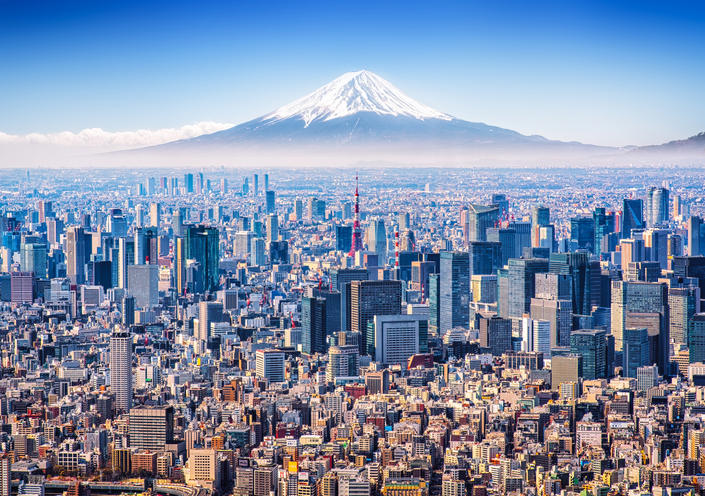

IMAGES
VIDEO
COMMENTS
Yokohama (横浜) is Japan's second largest city with a population of over three million. Yokohama is located less than half an hour south of Tokyo by train and is the capital of Kanagawa Prefecture.. Towards the end of the Edo Period (1603-1868), during which Japan maintained a policy of self-isolation, Yokohama's port was one of the first to be opened to foreign trade in 1859.
Explore Yokohama with the official travel guide. Find the best things to do, what's on, events, activities, and sightseeing in a port city located only 30 minutes away from Tokyo. ... As Yokohama was the first port to be opened in Japan after over 250 years of isolation, it became the birthplace of Japan's modern culture. ...
The best way to reach Yokohama from Tokyo is to take the Tokaido Shinkansen high-speed rail from Tokyo Station to Shin-Yokohama Station. The journey takes just 18 minutes and the trains leave every 15-30 minutes. A one-way ticket for a reserved seat is 3,210 yen; and 1,380 yen for an unreserved seat.
Minato Mirai's Anniversaire Café is hosting a sweets fair titled Sunflower Holic which runs from July 15th until September.. Yokohama (横浜) is a vibrant port city, just south of Tokyo. Located in Kanagawa prefecture, a daytrip to Yokohama promises plenty of attractions, including Minato Mirai, Cosmo World, the Red Brick Building, Chinatown ...
Yokohama Travel Guide. Yokohama is Japan's second largest city, and remains a favourite day trip destination from Tokyo, especially for families with children. There's so much to see and do, including beautiful parks and a gorgeous traditional Japanese garden, fantastic museums, and a great choice for shopping and eating.
Table of Contents. The Best 1, 2 or 3 Days in Yokohama Itinerary. Day 1 - Minato Mirai 21 Highlights. 9am - Sushi Breakfast at the Fish Market. 12pm - Wander Over to Minato Mirai 21. 2pm - CUP Noodles Museum. 5pm - Head Up the Yokohama Landmark Tower for Sunset. 7pm - Head to an Izakaya for Dinner.
Yet, Japan's second-largest city is coming into its own as an artistic haven. This creativity is set to be showcased in style in March 2024, when the Yokohama Museum of Art reopens after a two ...
By Yui Nakamura May 11, 2023. Yokohama Chinatown is the largest Chinatown in Japan and offers a wide variety of authentic Chinese cuisine, traditional Chinese goods, and cultural events. Visitors can indulge in a culinary adventure through China's regional cuisines and participate in traditional Chinese festivals and events.
Yokohama is a vibrant, modern city, a blend of Japanese tradition with that of China and the West. Whether you're looking to savor delicious cuisine, immerse yourself in culture and history, or absorb spectacular views, the area in and around this jewel of Japan offers something for everyone.
Japan, Asia. Even though it's just a 30-minute train ride south of central Tokyo, Yokohama (横浜) has an appealing flavour and history all its own. Locals are likely to cite the uncrowded, walkable streets or neighbourhood atmosphere as the main draw, but for visitors it's the breezy bay front, creative arts scene, multiple microbreweries ...
Japan's reopening to the world also attracted many Chinese people to Yokohama City, who started settling in the area of Chinatown in the 1850s. Today, Yokohama Chinatown is famous for the more than 500 restaurants found within the four gates that make up the entrances to Chinatown, at the center of which Kanteibyo, a temple built in 1873 and dedicated to business and prosperity, can be found.
Yokohama makes a great day trip out of Tokyo. Our one-day and two-day itineraries allow you to make the best use of your time. Skyline of Yokohama with Mount Fuji. Yokohama is easy to navigate, so you can swap out places as you like for these itineraries. Choose the best one below to suit your schedule.
A mini guide to Yokohama, the country's original gateway to the world. Link Copied! Yokohama's Chinatown district is full of shops, cafes and restaurants. Built for British trader B.R. Berrick ...
Photo by Pixta Yokohama, located in close proximity to Tokyo in Kanagawa Prefecture, has a rich history as one of Japan's prominent international port towns.After years of national self-isolation during the Edo period (1603-1868), Yokohama became one of the first trading posts to open its doors to foreign trade in 1859 and quickly became a hub for international commerce.
The Top Things to Do in Yokohama. 1) CUPNOODLES Museum. 2) Visit the Yokohama Noh Theater. 3) Check Out the Largest Chinatown in Japan. 4) Tour a World Cup Stadium. 5) Go to a Game at Yokohama Stadium. 6) Try Every Kind of Ramen at the Shin Yokohama Ramen Museum. 7) Taste 100 Different Types of Sake.
Yokohama Featured Articles. Explore the best of Yokohama in a day: from tranquil gardens to vibrant nightlife. Discover parks, museums, and culinary delights in Japan's second-largest city. Explore parks, temples, and culinary delights with our 7-day itinerary to Yokohama, Japan. Discover the best experiences this harbor city has to offer.
Yokohama travel guide: What and where to eat? Yokohama has a diverse cuisine culture, of which the famous is the traditional beef hotpot at Araiya restaurant (Address: Japan, 〒231-0002 Kanagawa, Yokohama, Naka Ward, Kaigandori, 4 Chome−23-1/Hours: 11AM-2:30PM, 5-10PM). The menu sets here start at 1,300 yen.
Yokohama travel guide: Access from Tokyo and attractions. August 1, 2023 . Categories Destinations, Tokyo. Japan's second-largest city after Tokyo, Yokohama is located half an hour south of Tokyo. One of the first Japanese ports to open to foreign trade, in 1859, ...
About Yokohama. Yokohama is right next to Tokyo, only 30 minutes by train. It is Japan's second largest city and it has managed to maintain its very own atmosphere despite its colossal neighbour. Where Tokyo is busy, digital and hyper-Japanese, Yokohama has a more relaxed, old-fashioned and international style. Japan's most stylish downtown.
1. Minato Mirai: Located in the heart of Yokohama, Minato Mirai is a bustling waterfront district known for its modern skyscrapers, shopping malls, and entertainment options. Visitors can enjoy stunning views of the Yokohama Bay and explore attractions such as the Landmark Tower and Cosmo World amusement park. 2.
The following is a suggested five kilometer walk around Yokohama 's downtown area that visits Minato Mirai 21 and Yokohama Chinatown and leads along the city's attractive waterfront. With the suggested additions, this course can become longer or even a two day schedule. Start. Start at Sakuragicho Station. 5 minutes.
Yokohama in January. Estimated hotel price. $97. 1 night at 3-star hotel. Yokohama enjoys warm temperatures for much of the year, with daytime highs ranging from 65 to 87 between March and November, when most visitors come to the city. Jan Feb Mar Apr May Jun Jul Aug Sep Oct Nov Dec 0°F 20°F 40°F 60°F 80°F 100°F.
What is "Yokohama Flower & Premium Gastronomy"? ... Your Essential Guide to Japan Travel, Culture, Hotels, and More MATCHA is a media platform that introduces travel information for international visitors to Japan. Our articles feature not only places to visit, but also hotels, hot spring facilities, local food and dining, shopping, access to ...
Explore articles related to yokohama japanese on the Japan Travel website. ... Guide. News. Blog. Topic. Area. Places. 11,058 results. Culture ... Japan Travel is the leading resource for Japan travel information and the primary destination for visitors planning and traveling to Japan.
5D4N Tokyo Travel Itinerary: Best Things to Eat, See, & Do for First-Time Travellers There's a reason why Tokyo is Japan's most popular travel destinations. Read our itinerary guide on the best things to eat, see, and do in Tokyo, from cultural sights to the best restaurants, must-visit attractions, and day trips suggestions!
Tokyo. Yongyuan Dai. The first stop for many foreign tourists is Japan's vibrant capital and it's not hard to see why. The world's most populous metropolis, Tokyo offers tradition and innovation ...
Completing the scene are the serene reflecting pool and traditional Japanese gardens that contain lush foliage, manicured trees, and scenic walking paths. 1 Kinkakuji-cho, Kita-ku, Kyoto-shi, Kyoto, +81 075-461-0013, shokoku-ji.jp. Open daily 9am-5pm. Admission is 500 JPY. Admire Ryoan-ji Temple.
X B Dive into the heart of Japan's bustling port city with our captivating travel guide, "Travel Guide to Yokohama 2024"! Have you ever dreamed of wandering through the enchanting streets of Yokohama Chinatown, surrounded by the tantalizing aromas of traditional Chinese cuisine?
An hour-and-a-half away from Hiroshima and on the way back to Tokyo, neon playground Osaka is the ideal spot for your trip's finale. What can only be described as Japan's equivalent to Time ...